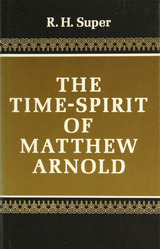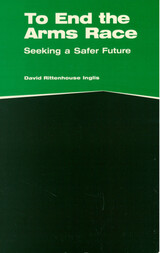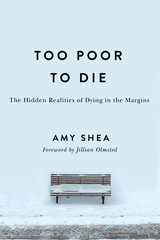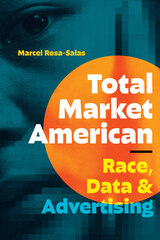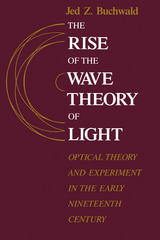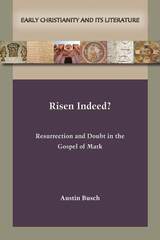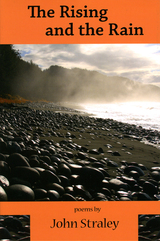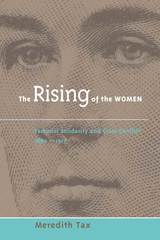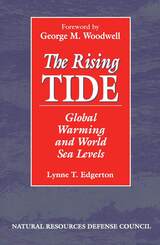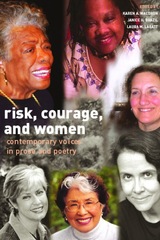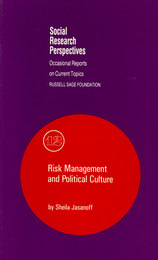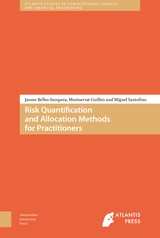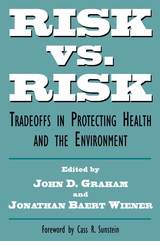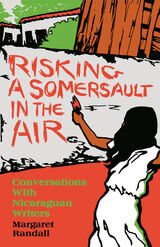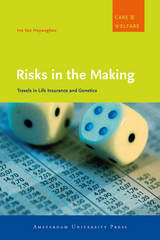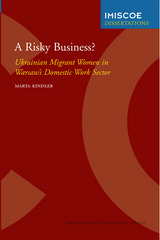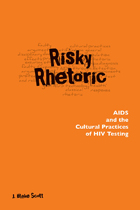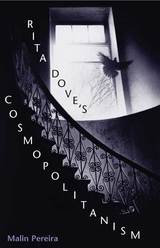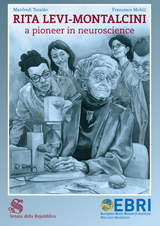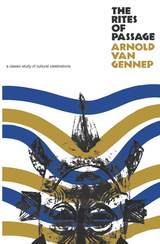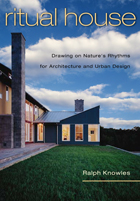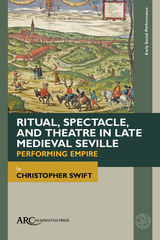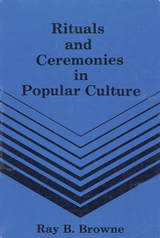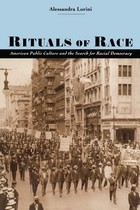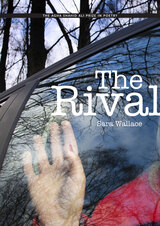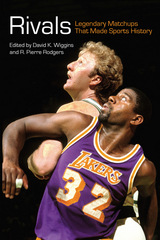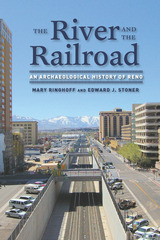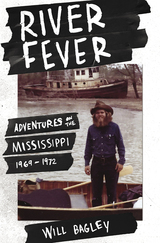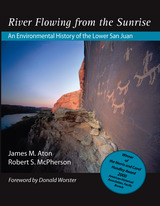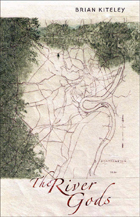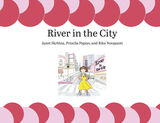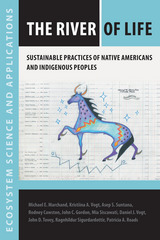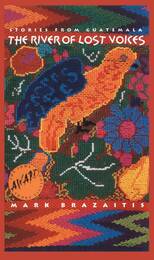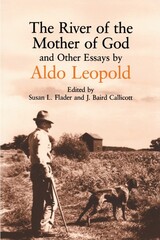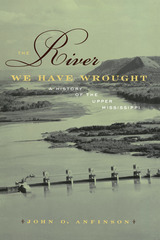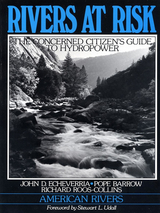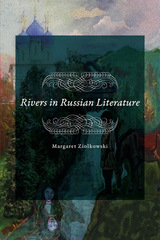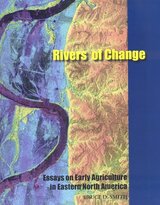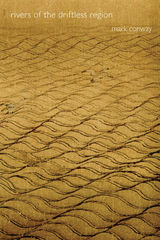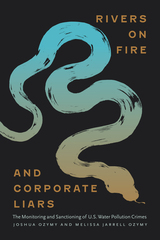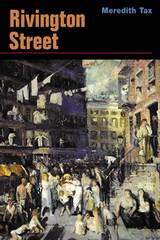 The Rise of the Student Estate in Britain
Eric Ashby and Mary Anderson
Harvard University Press, 1970 In this timely volume, which Nathan Glazer describes as “a fascinating account of the rise of student participation in the English universities,” Ashby and Anderson interpret contemporary student activities in the light of the history of student participation during the last 150 years. They begin their study with a description of the relation between students and universities in Britain in the 1820s and then trace the way in which Scottish students organized themselves at that time. By bringing their corporate influence to bear on members of the government, those students secured recognition by Parliament of Student Representative Councils, and thus initiated a “student estate.”
The authors then describe the rise of the student estate in England: the recognition of student organizations in the charters of civic universities, the growth of the “solidarity” of student opinion through the National Union of Students, and the development of actual student influence upon universities and upon public policies for higher education. Included are examples of sporadic student unrest in Britain over the last century and a half, a thorough and lively discussion of the present situation—including references to the American scene—and prospects for the future of the student estate in general.
 The Rise of the United Association: National Unionism in the Pipe Trades, 1884–1924
Martin Segal
Harvard University Press, 1970 The Rise of the United Association is a study of the national union of plumbers, steam fitters, sprinkler fitters, and other pipe trades—the organization known today as the United Association of Journeymen and Apprentices of the Plumbing and Pipe Fitting Industry of the United States and Canada.
The study covers 40 crucial years in the history of national unionism of the pipe trades. In the beginning of the period (in the early 1880s) local unions of plumbers, gas fitters, and steam fitters were making first attempts to form a national organization of their crafts; forty years later, the United Association (UA) was unchallenged in its position as the national union of the pipe trades, and constituted one of the strongest organizations in contemporary building trades and in the AFL.
The Rise of the United Association concerns itself primarily with the description and analysis of the development and policies of the national union rather than with the history of local organizations of plumbers and steam fitters. In particular, the study deals with the factors that led to the rise of the first national organization of the pipe trades and then to the founding of the UA; with the complex process of internal reform that transformed the UA—originally a loose federation of locals—into a modern national union; and with the policies and tactics that eventually brought within the fold of the national organization all the pipe trades employed in building and other industries—plumbers, steam fitters, gas fitters, sprinkler fitters, and others.
During the course of the forty years of unionism described in this volume the leaders and members of the national organizations of the pipe trades were confronted with many crucial and difficult issues—the relation of their organization to the Knights of Labor, the development of a viable system of union government and finances, the regulation of apprenticeship in plumbing and steam fitting, the problem of establishing jurisdictional lines among the members of a multi-craft union. The description and analysis of union policies toward these and other issues provide major insights into the process of growth of an important labor organization and, indeed, into the development of national unionism in America.
The Rise of the Wave Theory of Light: Optical Theory and Experiment in the Early Nineteenth Century
Jed Z. Buchwald
University of Chicago Press, 1989 "No one interested in the history of optics, the history of eighteenth- and nineteenth-century physics, or the general phenomenon of theory change in science can afford to ignore Jed Buchwald's well-structured, highly detailed, and scrupulously researched book. . . . Buchwald's analysis will surely constitute the essential starting point for further work on this important and hitherto relatively neglected episode of theory change."—John Worrall, Isis
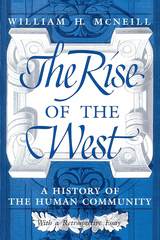 The Rise of the West: A History of the Human Community
William H. McNeill
University of Chicago Press, 1991 WINNER OF THE NATIONAL BOOK AWARD
One of the most important works of history from the twentieth century, The Rise of the West, winner of the National Book Award in 1964, is famous for its ambitious scope and intellectual rigor. In it, William H. McNeill challenges the then-prevalent view that a number of separate civilizations pursued essentially independent careers, and argues instead that human cultures interacted at every stage of their history. McNeill argues instead that from the Neolithic beginnings of grain agriculture to the present major social changes in all parts of the world were triggered by new or newly important foreign stimuli, and he presents a persuasive narrative of world history to support this claim.
In a retrospective essay titled "The Rise of the West after Twenty-five Years," McNeill shows how his book was shaped by the time and place in which it was written (1954-63). He discusses how historiography subsequently developed and suggests how his portrait of the world's past in The Rise of the West should be revised to reflect these changes.
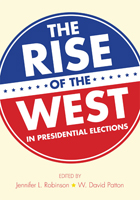 The Rise of the West in Presidential Elections
Jennifer L Robinson
University of Utah Press, 2010 The American West is a region unique in the United States, not only for its natural landscapes and climate, but also its dynamic economy, rich culture and history, and regional identity. Each of these characteristics creates distinctive interests and issues that impact public policy in the West. Consistently, though, the West has been largely ignored by presidential candidates who remain uninterested in the few electoral votes to be won in the region. The 2008 presidential election, however, demonstrated that such an attitude towards western states appears to be shifting, as are the dynamics of the presidential primary system as a whole. As western populations have increased, so too has the political clout of the region. The Rise of the West in Presidential Elections explores the changing role of the region in national elections. The prominence of Nevada as an early caucus state and Denver acting as the host city of the 2008 Democratic National Convention, as well as increased candidate visitation and media expenditure, point to the rising importance of the region, an importance that political candidates will increasingly need to recognize. The book examines the political advantages and barriers to the creation of a regional primary for western states, a move that could further change the influence of the West on the national agenda and highlight western issues and values. The contributors to The Rise of the West in Presidential Elections analyze the process of nominating presidential candidates, review the issues that make western states a united region unique in the political process, and explore the changing political dynamics in the nation that enable these changes. The book will be of interest to every citizen looking to learn more about the primary process, as well as to the political junkie more focused on the nuances of political maneuvering between states jockeying for position at the front of the election process.
 The Rise of the Working-Class Shareholder: Labor’s Last Best Weapon
David Webber
Harvard University Press, 2018 When Steven Burd, CEO of the supermarket chain Safeway, cut wages and benefits, starting a five-month strike by 59,000 unionized workers, he was confident he would win. But where traditional labor action failed, a novel approach was more successful. With the aid of the California Public Employees’ Retirement System, a $300 billion pension fund, workers led a shareholder revolt that unseated three of Burd’s boardroom allies.
In The Rise of the Working-Class Shareholder: Labor's Last Best Weapon, David Webber uses cases such as Safeway’s to shine a light on labor’s most potent remaining weapon: its multitrillion-dollar pension funds. Outmaneuvered at the bargaining table and under constant assault in Washington, state houses, and the courts, worker organizations are beginning to exercise muscle through markets. Shareholder activism has been used to divest from anti-labor companies, gun makers, and tobacco; diversify corporate boards; support Occupy Wall Street; force global warming onto the corporate agenda; create jobs; and challenge outlandish CEO pay. Webber argues that workers have found in labor’s capital a potent strategy against their exploiters. He explains the tactic’s surmountable difficulties even as he cautions that corporate interests are already working to deny labor’s access to this powerful and underused tool.
The Rise of the Working-Class Shareholder is a rare good-news story for American workers, an opportunity hiding in plain sight. Combining legal rigor with inspiring narratives of labor victory, Webber shows how workers can wield their own capital to reclaim their strength.
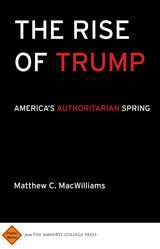 The Rise of Trump: America's Authoritarian Spring
Matthew C. MacWilliams
Amherst College Press, 2016 The ascendance of Donald Trump to the presidential candidacy of the Republican Party has been both remarkable and, to most commentators, unlikely. In The Rise of Trump: America’s Authoritarian Spring, Matthew MacWilliams argues that Trump’s rapid rise through a bewildered Republican Party hierarchy is no anomaly; rather, MacWilliams argues, it is the most recent expression of a long-standing theme in American political life, the tendency and temptation to an ascriptive politics—a political view that builds its basic case on ascribing to any relatively disempowered group (whether defined by race, ethnicity, gender, sexual orientation, religious belief, or other identifying category) a certain set of qualities that justify discriminatory treatment. The ascriptive tradition in American politics, though longstanding, has generally been kept to a relatively small minority—a minority whose rights, perhaps paradoxically, have been protected by the principles of Madisonian democracy, even though central to its worldview is the need and urgency of limiting the rights of some. It has found champions in years past in such figures as Andrew Jackson, Huey Long, Joseph McCarthy, and Pat Buchanan. But in Donald Trump this tradition has found a significant new voice, one emboldened by deeper shifts in the American political landscape. Trump’s swift and unsettling rise to the pinnacle of presidential politics may point toward the emergence of more significant and substantial questions about the future course of a democratic government committed to principles of equality and the freedom of expression, association, and conscience.
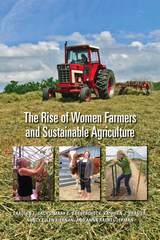 The Rise of Women Farmers and Sustainable Agriculture
Carolyn Sachs, Mary Barbercheck, Kathryn Braiser, Nancy Ellen Kiernan, Anna Rachel Terman
University of Iowa Press, 2016 A profound shift is occurring among women working in agriculture—they are increasingly seeing themselves as farmers, not only as the wives or daughters of farmers. The authors draw on more than a decade of research to document and analyze the reasons for the transformation. As their sense of identity changes, many female farmers are challenging the sexism they face in their chosen profession. In this book, farm women in the northeastern United States describe how they got into farming and became successful entrepreneurs despite the barriers they encountered in agricultural institutions, farming communities, and even their own families. Their strategies for obtaining land and labor and developing successful businesses offer models for other aspiring farmers.
Pulling down the barriers that women face requires organizations and institutions to become informed by what the authors call a feminist agrifood systems theory (FAST). This framework values women’s ways of knowing and working in agriculture: emphasizing personal, economic, and environmental sustainability, creating connections through the food system, and developing networks that emphasize collaboration and peer-to-peer education. The creation and growth of a specific organization, the Pennsylvania Women’s Agricultural Network, offers a blueprint for others seeking to incorporate a feminist agrifood systems approach into agricultural programming. The theory has the potential to shift how farmers, agricultural professionals, and anyone else interested in farming think about gender and sustainability, as well as to change how feminist scholars and theorists think about agriculture.
 The Rise of Women: The Growing Gender Gap in Education and What it Means for American Schools
Thomas A. DiPrete
Russell Sage Foundation, 2013 While powerful gender inequalities remain in American society, women have made substantial gains and now largely surpass men in one crucial arena: education. Women now outperform men academically at all levels of school, and are more likely to obtain college degrees and enroll in graduate school. What accounts for this enormous reversal in the gender education gap? In The Rise of Women: The Growing Gender Gap in Education and What It Means for American Schools, Thomas DiPrete and Claudia Buchmann provide a detailed and accessible account of women’s educational advantage and suggest new strategies to improve schooling outcomes for both boys and girls. The Rise of Women opens with a masterful overview of the broader societal changes that accompanied the change in gender trends in higher education. The rise of egalitarian gender norms and a growing demand for college-educated workers allowed more women to enroll in colleges and universities nationwide. As this shift occurred, women quickly reversed the historical male advantage in education. By 2010, young women in their mid-twenties surpassed their male counterparts in earning college degrees by more than eight percentage points. The authors, however, reveal an important exception: While women have achieved parity in fields such as medicine and the law, they lag far behind men in engineering and physical science degrees. To explain these trends, The Rise of Women charts the performance of boys and girls over the course of their schooling. At each stage in the education process, they consider the gender-specific impact of factors such as families, schools, peers, race and class. Important differences emerge as early as kindergarten, where girls show higher levels of essential learning skills such as persistence and self-control. Girls also derive more intrinsic gratification from performing well on a day-to-day basis, a crucial advantage in the learning process. By contrast, boys must often navigate a conflict between their emerging masculine identity and a strong attachment to school. Families and peers play a crucial role at this juncture. The authors show the gender gap in educational attainment between children in the same families tends to be lower when the father is present and more highly educated. A strong academic climate, both among friends and at home, also tends to erode stereotypes that disconnect academic prowess and a healthy, masculine identity. Similarly, high schools with strong science curricula reduce the power of gender stereotypes concerning science and technology and encourage girls to major in scientific fields. As the value of a highly skilled workforce continues to grow, The Rise of Women argues that understanding the source and extent of the gender gap in higher education is essential to improving our schools and the economy. With its rigorous data and clear recommendations, this volume illuminates new ground for future education policies and research.
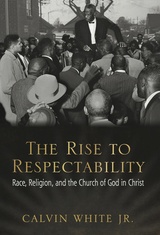 The Rise to Respectability: Race, Religion, and the Church of God in Christ
Calvin White
University of Arkansas Press, 2015 The Rise to Respectability documents the history of the Church of God in Christ (COGIC) and examines its cultural and religious impact on African Americans and on the history of the South. It explores the ways in which Charles Harrison Mason, the son of slaves and founder of COGIC, embraced a Pentecostal faith that celebrated charismatic forms of religious expression that many blacks had come to view as outdated, unsophisticated, and embarrassing. While examining the intersection of race, religion, and class, The Rise to Respectability details how the denomination dealt with the stringent standard of bourgeois behavior imposed on churchgoers as they moved from southern rural areas into the urban centers in both the South and North. Rooted in the hardships of slavery and coming of age during Jim Crow, COGIC's story is more than a religious debate. Rather, this book sees the history of the church as interwoven with the Great Migration, the struggle for modernity, class tension, and racial animosity--all representative parts of the African American experience.
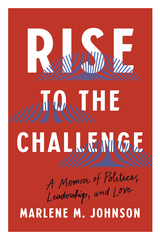 Rise to the Challenge: A Memoir of Politics, Leadership, and Love
Johnson
University of Minnesota Press, 2024 The inspiring life story of Minnesota’s first woman lieutenant governor: breaking political ground, navigating patriarchal tradition, and persevering through great personal loss Marking a milestone for women in state government, Marlene M. Johnson became Minnesota’s first woman lieutenant governor under Rudy Perpich’s gubernatorial administration in January 1983. That same year, she met her husband, Peter, and their deeply loving relationship profoundly sustained her for twenty-seven years. Rise to the Challenge weaves these personal and professional stories together in a courageous portrait of dedication and leadership. Growing up in rural Minnesota, Johnson began organizing and advocating for change early, beginning with a campaign to introduce foreign languages into her high school curriculum. Pursuing a deeply felt commitment to improving the lives of others, she continued to sharpen her leadership skills throughout her life, participating in activist work in college, cofounding organizations to support women entrepreneurs and politicians, and eventually running an international education nonprofit. A stalwart supporter, her husband gave Marlene strength and encouragement to face the challenges of the political landscape and its gender biases. Then, in 2010, he suffered a traumatic brain injury that would change both of their lives. Learning how to be a medical advocate and, eventually, facing the sorrow of Peter’s death, Marlene relied on the hard-fought resilience and belief in herself that Peter had helped her to develop. A story of learning and leadership in politics, business, and public service, Rise to the Challenge is a moving portrayal of spirit, perseverance, and grace in the face of daunting personal challenges, supported by unwavering faith in the public good.
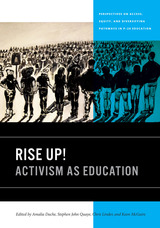 Rise Up!: Activism as Education
Amalia Dache
Michigan State University Press, 2019 We live at a time when the need for resistance has come front and center to international consciousness. Rise Up! Activism as Education works to advance theory and practice-oriented understandings of multiple forms of and relationships between racial justice activism and diverse and transnational educational contexts. Here contributors provide detailed accounts and examinations—historical and contemporary, local and international—of active resistance efforts aimed at transforming individuals, institutions, and communities to dismantle systems of racial domination. They explore the ways in which racial justice activism serves as public education and consciousness-raising and a form of education and resistance from those engaged in the activism. The text makes a case for activism as an educational concept that enables organizers and observers to gain important learning outcomes from on-the-ground perspectives as it explores racial justice activism, specifically in the context of community and campus activism, intersectional activism, and Black diasporic liberation. This volume is an essential handbook for preparing both students and activists to effectively resist.
Risen Indeed? Resurrection and Doubt in the Gospel of Mark
Austin Busch
SBL Press, 2022 Risen Indeed? Resurrection and Doubt in the Gospel of Mark traces the literary dynamics and explores the theological dimensions of the Gospel of Mark’s thematization of skepticism regarding resurrection. In every place where it seems to depict resurrection—Jesus's and others'—Mark evades the issue of whether resurrection actually occurs. Austin Busch argues that, despite Mark's abbreviated and ambiguous conclusion, this gospel does not downplay resurrection but rather foregrounds it, imagining Jesus’s death and restoration to life as a divine plot to overcome Satan through cunning deception. Risen Indeed? constitutes a careful literary reading of Mark's Gospel, as well as an assessment of Mark's impact on the traditions of Christian literature and theology that emerged in its wake.
The Rising and the Rain: Collected Poems
John Straley
University of Alaska Press, 2008 John Straley crafts here a collection of poems that pay homage to his home of the Pacific Northwest and southeastern Alaska. His narrative poetry is infused with sharp wit and delicate details, as he meditates on the natural world of the Pacific coastline and its rhythmic seasonal patterns, cycles of rain, and rich abundance of earth. Straley intertwines the personal and political to create elegies of refreshing honesty and universal scope, making The Rising and Rain a powerful work by one of the top emerging poets today.
 Rising Anthills: African and African American Writing on Female Genital Excision, 1960–2000
Elisabeth Bekers
University of Wisconsin Press, 2010 Female genital excision, or the ritual of cutting the external genitals of girls and women, is undoubtedly one of the most heavily and widely debated cultural traditions of our time. By looking at how writers of African descent have presented the practice in their literary work, Elisabeth Bekers shows how the debate on female genital excision evolved over the last four decades of the twentieth century, in response to changing attitudes about ethnicity, nationalism, colonialism, feminism, and human rights.
Rising Anthills (the title refers to a Dogon myth) analyzes works in English, French, and Arabic by African and African American writers, both women and men, from different parts of the African continent and the diaspora. Attending closely to the nuances of language and the complexities of the issue, Bekers explores lesser-known writers side by side with such recognizable names as Ngugi wa Thiong’o, Flora Nwapa, Nawal El Saadawi, Ahmadou Kourouma, Calixthe Beyala, Alice Walker, and Gloria Naylor. Following their literary discussions of female genital excision, she discerns a gradual evolution—from the 1960s, when writers mindful of its communal significance carefully “wrote around” the physical operation, through the 1970s and 1980s, when they began to speak out against the practice and their societies’ gender politics, to the late 1990s, when they situated their denunciations of female genital excision in a much broader, international context of women’s oppression and the struggle for women’s rights.
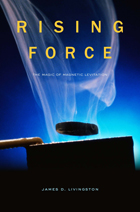 Rising Force: The Magic of Magnetic Levitation
James D. Livingston
Harvard University Press, 2011 From Peter Pan to Harry Potter, from David Copperfield to levitating toys, there is magic in conquering gravity. In this first-ever popular introduction to “maglev”— the use of magnetic forces to overcome gravity and friction—James D. Livingston takes lay readers on a journey of discovery, from basic concepts to today’s most thrilling applications.
The tour begins with examples of our historical fascination with levitation, both real and fake. At the next stop, Livingston introduces readers to the components of maglev: gravitational and magnetic forces in the universe, force fields, diamagnetism and stabilization, superdiamagnetism and supercurrents, maglev nanotechnology, and more. He explores the development of the superconductors that are making large-scale levitation devices possible, and the use of magnetic bearings in products ranging from implanted blood pumps to wind turbines, integrated circuit fabrication, and centrifuges to enrich uranium. In the last chapters, we arrive at the science behind maglev transportation systems, such as Chinese trains that travel 250 miles per hour without touching the tracks.
Packed with fascinating anecdotes about the colorful personalities who have “fought friction by fighting gravity,” the book maintains accuracy throughout while it entertains and informs technical and nontechnical readers alike. With so many new applications for magnetic levitation on the horizon, Rising Force is sure to retain its own magic for years to come.
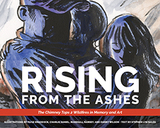 Rising from the Ashes: The Chimney Tops 2 Wildfires in Memory and Art
Stephen Lyn Bales
University of Tennessee Press, 2022 This catalog documents a 2022 exhibition of original editorial illustrations commissioned by the University of Tennessee Libraries to complement the Chimney Tops 2 Wildfires Oral History Project. The four illustrators showcased here have strong ties to East Tennessee. Paige Braddock, author of the Eisner-nominated comic strip Jane’s World and Chief Creative Officer at Charles M. Schulz Creative Associates, is an ’85 UT alumna; Charlie Daniel, beloved Knoxville News Sentinel editorial illustrator, has been a Knoxville resident since 1958; Marshall Ramsey, syndicated editorial illustrator and Pulitzer nominee, is a ’91 UT alumnus; and professional illustrator Danny Wilson has been a visible part of Knoxville’s graphic landscape since graduating from UT in 1984. The artists were given access to the project’s digital archive of oral interviews—to date, 139 have been recorded—and were asked to respond creatively to what they heard and read.
The result is Rising from the Ashes, a candid and deeply felt collection of illustrations encapsulating accounts of the merciless firestorm that enveloped Sevier County in November 2016. The flexible medium of the editorial illustration shows itself capable of extended narrative, disquieting detail, and poignant synthesis, as well as moments of beauty, hope, horror, and even humor as it ushers viewers into the recollections of wrestling and sorrow that animate the project’s still expanding archive. Bales writes, “Ultimately, the multiple fires destroyed or damaged 2,500 homes and buildings, killed 14 trapped people, injured another 200 or more, and burned over 17,000 acres of mostly woodlands that were a powder keg of dried leaves, all in a matter of three hours.” Years later, the ramifications of this event are still being felt in the community and region. Rising from the Ashes is a tribute to a people who suffered, lost, banded together, and rebuilt; and no less important, it is an expression of solidarity, recognizing how much remains to be done.
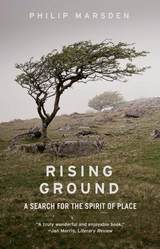 Rising Ground: A Search for the Spirit of Place
Philip Marsden
University of Chicago Press, 2016 In 2010, Philip Marsden, whom Giles Foden has called “one of our most thoughtful travel writers,” moved with his family to a rundown farmhouse in the countryside in Cornwall. From the moment he arrived, Marsden found himself fascinated by the landscape around him, and, in particular, by the traces of human history—and of the human relationship to the land—that could be seen all around him. Wanting to experience the idea more fully, he set out to walk across Cornwall, to the evocatively named Land’s End.
Rising Ground is a record of that journey, but it is also so much more: a beautifully written meditation on place, nature, and human life that encompasses history, archaeology, geography, and the love of place that suffuses us when we finally find home. Firmly in a storied tradition of English nature writing that stretches from Gilbert White to Helen MacDonald, Rising Ground reveals the ways that places and peoples have interacted over time, from standing stones to footpaths, ancient habitations to modern highways. What does it mean to truly live in a place, and what does it take to understand, and honor, those who lived and died there long before we arrived?
Like the best travel and nature writing, Rising Ground is written with the pace of a contemplative walk, and is rich with insight and a powerful sense of the long skein of years that links us to our ancestors. Marsden’s close, loving look at the small patch of earth around him is sure to help you see your own place—and your own home—anew.
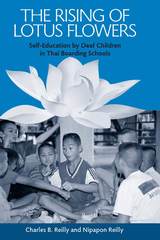 The Rising of Lotus Flowers: Self-Education by Deaf Children in Thai Boarding Schools
Charles B. Reilly
Gallaudet University Press, 2005 In developed nations around the world, residential schools for deaf students are giving way to the trend of inclusion in regular classrooms. Nonetheless, deaf education continues to lag as the students struggle to communicate. In the Bua School in Thailand, however, 400 residential deaf students ranging in age from 6 to 19 have met with great success in teaching each other Thai Sign Language (TSL) and a world of knowledge once thought to be lost to them. The Rising of Lotus Flowers: Self-Education by Deaf Children in Thai Boarding Schools reveals how their institutionalization allowed them to foster a unique incubator of communication and education. Charles B. Reilly, a teacher and community organizer in Thailand for eight years, and Nipapon Reilly, a Deaf Thai citizen, studied the students in the Bua School for 14 years, with periodic follow-ups thereafter. They found that the students learned little from their formal instructors, but that they were able to educate each other in time spent away from the classroom. Older students who had learned TSL in the dorms and on the playground successfully passed it on to six-year-olds who had virtually no language at all. The Reillys’ study uncovers an elaborate hierarchy of education among these students, with each group using games and other activities to teach and bring other classmates up to their level. Named for the much admired aquatic plant that blooms in Thailand’s bogs, the Bua School epitomizes the ideal of The Rising of Lotus Flowers, which also offers analytical evidence of the continuing value of residential schools in deaf education.
The Rising of Women: Feminist Solidarity and Class Conflict, 1880-1917
Meredith Tax
University of Illinois Press, 2001 Focusing on the socialist housewives, settlement workers, and left-wing feminists who were the main allies of working women between the 1880s and World War I, The Rising of the Women explores the successes and failures of the "united fronts" within which middle- and working-class American women worked together to improve social and economic conditions for female laborers.
Through detailed studies of the Woman's Trade Union League, the Illinois Women's Alliance, the New York shirtwaist makers strike of 1909-10, and the 1912 textile workers strike in Lawrence, Massachusetts, Meredith Tax uncovers the circumstances that helped and hindered cross-class and cross-gender cooperation on behalf of women of the working class. In a new introduction to this first Illinois paperback edition, Tax assesses the progress of women's solidarity since the book's original publication.
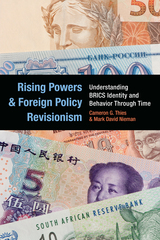 Rising Powers and Foreign Policy Revisionism: Understanding BRICS Identity and Behavior Through Time
Cameron G. Thies and Mark David Nieman
University of Michigan Press, 2017 In Rising Powers and Foreign Policy Revisionism, Cameron Thies and Mark Nieman examine the identity and behavior of the BRICS (Brazil, Russia, India, China, and South Africa) over time in light of academic and policymaker concerns that rising powers may become more aggressive and conflict-prone. The authors develop a theoretical framework that encapsulates pressures for revisionism through the mechanism of competition and pressures for accommodation and assimilation through the mechanism of socialization. The identity and behavior of the BRICS should be a product of the push and pull of these two forces as mediated by their domestic foreign policy processes.
State identity is investigated qualitatively through the use of role theory and the identification of national role conceptions. Both economic and militarized conflict behavior are examined using Bayesian change-point modeling, which identifies structural breaks in time series data, revealing potential wholesale revision of foreign policy. Using this innovative approach to show that the behavior of rising powers is governed not simply by the structural dynamics of power but also by the roles that these rising powers define for themselves, they assert that this process will likely lead to a much more evolutionary approach to foreign policy and will not necessarily generate international conflict.
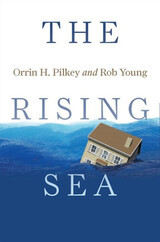 The Rising Sea
Orrin H. Pilkey and Rob Young
Island Press, 2011 On Shishmaref Island in Alaska, homes are being washed into the sea. In the South Pacific, small island nations face annihilation by encroaching waters. In coastal Louisiana, an area the size of a football field disappears every day. For these communities, sea level rise isn’t a distant, abstract fear: it’s happening now and it’s threatening their way of life.
In The Rising Sea, Orrin H. Pilkey and Rob Young warn that many other coastal areas may be close behind. Prominent scientists predict that the oceans may rise by as much as seven feet in the next hundred years. That means coastal cities will be forced to construct dikes and seawalls or to move buildings, roads, pipelines, and railroads to avert inundation and destruction.
The question is no longer whether climate change is causing the oceans to swell, but by how much and how quickly. Pilkey and Young deftly guide readers through the science, explaining the facts and debunking the claims of industry-sponsored “skeptics.” They also explore the consequences for fish, wildlife—and people.
While rising seas are now inevitable, we are far from helpless. By making hard choices—including uprooting citizens, changing where and how we build, and developing a coordinated national response—we can save property, and ultimately lives. With unassailable research and practical insights, The Rising Sea is a critical first step in understanding the threat and keeping our heads above water.
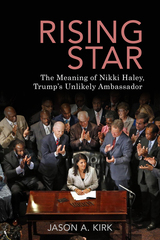 Rising Star: The Meaning of Nikki Haley, Trump’s Unlikely Ambassador
Jason A. Kirk
University of Arkansas Press, 2021 Nikki Haley has been an emerging force in American politics, her star power burnished over a decade that has seen her move from the national spotlight to the global stage. In Rising Star, political scientist Jason A. Kirk analyzes her ascendance in the Republican Party, from her governorship of South Carolina—during which she faced extraordinary challenges in a state reckoning with tragedy, race, and its own history—to her elevated profile as Donald Trump’s ambassador to the United Nations, where, as the daughter of immigrants and a woman of color, she became the face of his America First policy to the world. In considering a wide range of perspectives, Kirk illuminates how the combination of Haley’s political talents and her identity as an Indian American, Christian, southern woman has made her an unlikely bridge between the Trump years and the GOP’s embattled path forward.
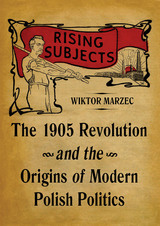 Rising Subjects: The 1905 Revolution and the Origins of Modern Polish Politics
Wiktor Marzec
University of Pittsburgh Press, 2020 Rising Subjects explores the change of the public sphere in Russian Poland during the 1905 Revolution. The 1905 Revolution was one of the few bottom-up political transformations and general democratizations in Polish history. It was a popular rebellion fostering political participation of the working class. The infringement of previously carefully guarded limits of the public sphere triggered a powerful conservative reaction among the commercial and landed elites, and frightened the intelligentsia. Polish nationalists promised to eliminate the revolutionary “anarchy” and gave meaning to the sense of disappointment after the revolution.
This study considers the 1905 Revolution as a tipping point for the ongoing developments of the public sphere. It addresses the question of Polish socialism, nationalism, and antisemitism. It demonstrates the difficulties in using the class cleavage for democratic politics in a conflict-ridden, multiethnic polity striving for an irredentist self-assertion against the imperial power.
The Rising Tide: Global Warming And World Sea Levels
Lynne T. Edgerton
Island Press, 1991 The Rising Tide is the first analysis of global warming and world sea level rise. It outlines state, national, and international actions to respond to the effects of global warming on coastal communities and ecosystems.
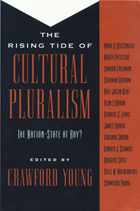 The Rising Tide of Cultural Pluralism: The Nation-State at Bay?
Edited by Crawford Young
University of Wisconsin Press, 1993 Two decades after the publication of his prize-winning book, The Politics of Cultural Pluralism, Crawford Young and a distinguished panel of contributors assess the changing impact of cultural pluralism on political processes around the world, specifically in the former Soviet Union, China, United States, India, Ethiopia, and Guatemala. The result is an arresting look at the dissolution of the nation-state system as we have known it.
Crawford Young opens with an overview of the dramatic rise in the political significance of cultural pluralism and of scholars’ changing understanding of what drives and shapes ethnic identification. Mark Beissinger brilliantly explains the demise of the last great empire-state, the USSR, while Edward Friedman notes growing challenges to the apparent cultural homogeneity of China. Nader Entessar suggests intriguing contrasts in Azeri identity politics in Iran and the ex-USSR. Ronald Schmidt and Noel Kent explore the language and racial dimensions of the rising multicultural currents in the United States. Douglas Spitz shows the extent of the decline of the old secular vision of India of the independence generation; Alan LeBaron traces the recent emergence of an assertive Mayan identity among a submerged populace in Guatemala, long thought to be destined for Ladinoization. A case study of the diversity and uncertain future of Ethiopia dramatically emerges from four contrasting contributions: Tekle Woldemikael looks at the potential cultural tensions in Eritrea, Solomon Gashaw offers a central Ethiopian nationalist perspective, Herbert Lewis reflects the perspectives of a restless and disaffected periphery, and James Quirin provides an arresting explanation of the construction of identity amongst the Beta Israel (Ethiopian Jews). Virginia Sapiro steps back from specific regions, offering an original analysis of the interaction between cultural pluralism and gender.
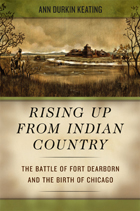 Rising Up from Indian Country: The Battle of Fort Dearborn and the Birth of Chicago
Ann Durkin Keating
University of Chicago Press, 2012 In August 1812, under threat from the Potawatomi, Captain Nathan Heald began the evacuation of ninety-four people from the isolated outpost of Fort Dearborn to Fort Wayne. The group included several dozen soldiers, as well as nine women and eighteen children. After traveling only a mile and a half, they were attacked by five hundred Potawatomi warriors. In under an hour, fifty-two members of Heald’s party were killed, and the rest were taken prisoner; the Potawatomi then burned Fort Dearborn before returning to their villages. These events are now seen as a foundational moment in Chicago’s storied past. With Rising up from Indian Country, noted historian Ann Durkin Keating richly recounts the Battle of Fort Dearborn while situating it within the context of several wider histories that span the nearly four decades between the 1795 Treaty of Greenville, in which Native Americans gave up a square mile at the mouth of the Chicago River, and the 1833 Treaty of Chicago, in which the American government and the Potawatomi exchanged five million acres of land west of the Mississippi River for a tract of the same size in northeast Illinois and southeast Wisconsin. In the first book devoted entirely to this crucial period, Keating tells a story not only of military conquest but of the lives of people on all sides of the conflict. She highlights such figures as Jean Baptiste Point de Sable and John Kinzie and demonstrates that early Chicago was a place of cross-cultural reliance among the French, the Americans, and the Native Americans. Published to commemorate the bicentennial of the Battle of Fort Dearborn, this gripping account of the birth of Chicago will become required reading for anyone seeking to understand the city and its complex origins.
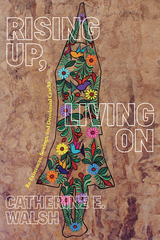 Rising Up, Living On: Re-Existences, Sowings, and Decolonial Cracks
Catherine E. Walsh
Duke University Press, 2023 In Rising Up, Living On, Catherine E. Walsh examines struggles for existence in societies deeply marked by the systemic violences and entwinements of coloniality, capitalism, Christianity, racism, gendering, heteropatriarchy, and the continual dispossession of bodies, land, knowledge, and life, while revealing practices that contest and live in the cracks of these matrices of power. Through stories, narrations, personal letters, conversations, lived accounts, and weaving together the thought of many—including ancestors, artists, students, activists, feminists, collectives, and Indigenous and Africana peoples—in the Americas, the Global South, and beyond, Walsh takes readers on a journey of decolonial praxis. Here, Walsh outlines individual and collective paths that cry out and crack, ask and walk, deschool, undo the nation-state, and break down boundaries of gender, race, and nature. Rising Up, Living On is a book that sows re-existences, nurtures relationality, and cultivates the sense, hope, and possibility of life otherwise in these desperate times.
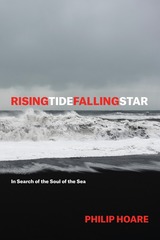 RISINGTIDEFALLINGSTAR: In Search of the Soul of the Sea
Philip Hoare
University of Chicago Press, 2018 “Every day is an anxiety in my ways of getting to the water. . . . I’ve become so attuned to it, so scared of it, so in love with it that sometimes I can only think by the sea. It is the only place I feel at home.”
Many of us visit the sea. Admire it. Even profess to love it. But very few of us live it. Philip Hoare does. He swims in the sea every day, either off the coast of his native Southampton or his adopted Cape Cod. He watches its daily and seasonal changes. He collects and communes with the wrack—both dead and never living—that it throws up on the shingle. He thinks with, at, through the sea.
All of which should prepare readers: RISINGTIDEFALLINGSTAR is no ordinary book. It mounts no straight-ahead argument. It hews to no single genre. Instead, like the sea itself, it moves, flows, absorbs, transforms. In its pages we find passages of beautiful nature and travel writing, lyrical memoir, seams of American and English history and much more. We find Thoreau and Melville, Bowie and Byron, John Waters and Virginia Woolf, all linked through a certain refusal to be contained, to be strictly defined—an openness to discovery and change. Running throughout is an air of elegy, a reminder that the sea is an ending, a repository of lost ships, lost people, lost ways of being. It is where we came from; for Hoare, it is where he is going.
“Every swim is a little death,” Hoare writes, “but it is also a reminder that you are alive.” Few books have ever made that knife’s edge so palpable. Read RISINGTIDEFALLINGSTAR. Let it settle into the seabed of your soul. You’ll never forget it.
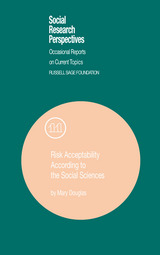 Risk Acceptability According to the Social Sciences
Mary Douglas
Russell Sage Foundation, 1985 Every day, it seems, we become aware of some new technological or chemical hazard. Yet it is also possible that this very awareness is new, or at least newly heightened. Why are certain kinds of risks suddenly so salient? Are public perceptions of risk simply the sum of individual reactions to individual events, or do social and cultural influences play a role in shaping our definitions of safety, acceptable risk, and danger? Prompted by public outcries and by the confusion and uncertainty surrounding risk management policy, social scientists have begun to address themselves to the issue of risk perception. But as anthropologist Mary Douglas points out, they have been singularly reluctant to examine the cultural bases of risk perception, preferring to concentrate on the individual perceiver making individual choices. This approach leaves unexamined a number of crucial social factors—our concepts of what is "natural" or "artificial," for example; our beliefs about fairness, and our moral judgements about the kind of society in which we want to live. This provocative and path-breaking report seeks to open a sociological approach to risk perception that has so far been systematically neglected. Describing first some exceptions to the general neglect of culture, Douglas builds on these clues and on her own broad anthropological perspective to make a compelling case for focusing on social factors in risk perception. She offers a challenge and a promising new agenda to all who study perceptions of risk and, by extension, to those who study human cognition and choice as well. "An altogether brilliant piece of writing—far-reaching and a joy to read." —Amartya Sen, Oxford University A Volume in the Russell Sage Foundation's Social Science Frontiers Series
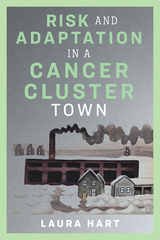 Risk and Adaptation in a Cancer Cluster Town
Laura Hart
Rutgers University Press, 2023 In disease cluster communities across the country, environmental contamination from local industries is often suspected as a source of disease. But civic action is notoriously hampered by the slow response from government agencies to investigate the cause of disease and the complexities of risk assessment.
In Risk and Adaptation in a Cancer Cluster Town, Laura Hart examines another understudied dimension of community inaction: the role of emotion and its relationship to community experiences of social belonging and inequality. Using a cancer cluster community in Northwest Ohio as a case study, Hart advances an approach to risk that grapples with the complexities of community belonging, disconnect, and disruption in the wake of suspected industrial pollution. Her research points to a fear driven not only by economic anxiety, but also by a fear of losing security within the community—a sort of pride that is not only about status, but connectedness. Hart reveals the importance of this social form of risk—the desire for belonging and the risk of not belonging—ultimately arguing that this is consequential to how people make judgements and respond to issues. Within this context where the imperative for self-protection is elusive, affected families experience psychosocial and practical conflicts as they adapt to cancer as a way of life. Considering a future where debates about risk and science will inevitably increase, Hart considers possibilities for the democratization of risk management and the need for transformative approaches to environmental justice.
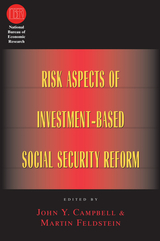 Risk Aspects of Investment-Based Social Security Reform
Edited by John Y. Campbell and Martin Feldstein
University of Chicago Press, 2001 Our current social security system operates on a pay-as-you-go basis; benefits are paid almost entirely out of current revenues. As the ratio of retirees to taxpayers increases, concern about the high costs of providing benefits in a pay-as-you-go system has led economists to explore other options. One involves "prefunding," in which a person's withholdings are invested in financial instruments, such as stocks and bonds, the eventual returns from which would fund his or her retirement. The risks such a system would introduce—such as the volatility in the market prices of investment assets—are the focus of this offering from the NBER. Exploring the issues involved in measuring risk and developing models to reflect the risks of various investment-based systems, economists evaluate the magnitude of the risks that both retirees and taxpayers would assume. The insights that emerge show that the risk is actually moderate relative to the improved return, as well as being balanced by the ability of an investment-based system to adapt to differences in individual preferences and conditions.
 Risk by Choice: Regulating Health and Safety in the Workplace
W. Kip Viscusi
Harvard University Press, 1983 Whose life is worth how much? To some people it seems immoral even to ask, but to others—to the worker, say, who is offered a dangerous but lucrative job—it is a practical question. Should government interfere with a worker's decision, a personal negotiation with destiny? If so, when and how?
Risk by Choice presents a comprehensive, nontechnical analysis of these questions and of government risk regulation policies in general. W. Kip Viscusi shows that the goal of a risk-free workplace is a chimera, leading to expensive regulatory programs that do little to lessen health and safety risks. He argues that when workers are aware of the hazards they face, market forces operate to promote efficient levels of risk. Government should intervene only when these forces fail to work—principally when workers do not understand the risks—and then should design policies that complement market forces rather than supplant them. Based in part on the author's experience as a member of the White House group that reviewed government regulations in many areas, this book offers the most extensive discussion available of the economic foundations of risk regulation, as well as new information on OSHA and the White House regulatory oversight process.
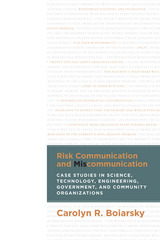 Risk Communication and Miscommunication: Case Studies in Science, Technology, Engineering, Government, and Community Organizations
Carolyn Boiarsky
University Press of Colorado, 2016 Effective communication can help prevent or minimize damage from environmental disasters. In Risk Communication and Miscommunication, Carolyn Boiarsky teaches students, technical writers, public affairs officers, engineers, scientists, and governmental officials the writing and communication skills necessary for dealing with environmental and technological problems that could lead to major crises.
Drawing from research in rhetoric, linguistics, technical communication, educational psychology, and web design, Boiarsky provides a new way to look at risk communication. She shows how failing to consider the readers’ needs or the rhetorical context in which one writes can be catastrophic and how anticipating those needs can enhance effectiveness and prevent disaster. She examines the communications and miscommunications of original e-mails, memos, and presentations about various environmental disasters, including the Columbia space shuttle explosion and the BP/Deepwater Horizon oil rig explosion, and successes, such as the Enbridge pipeline expansion and the opening of the Mississippi Spillway, and offers recommendations for effective communication.
Taking into account the growing need to communicate complex and often controversial issues across vast geographic and cultural spaces with an ever-expanding array of electronic media, Risk Communication and Miscommunication provides strategies for clear communication of data, ideas, and procedures to varied audiences to prevent or minimize damage from environmental incidents.
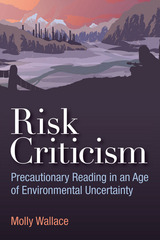 Risk Criticism: Precautionary Reading in an Age of Environmental Uncertainty
Molly Wallace
University of Michigan Press, 2016 Risk Criticism is a study of literary and cultural responses to global environmental risk in an age of unfolding ecological catastrophe. In 2015, the Bulletin of the Atomic Scientists reset its iconic Doomsday Clock to three minutes to midnight, as close to the apocalypse as it has been since 1953. What pushed its hands was not just the threat of nuclear weapons, but also other global environmental risks that the Bulletin judged to have risen to the scale of the nuclear, including climate change and innovations in the life sciences. If we may once have believed that the end of days would come in a blaze of nuclear firestorm, we now suspect that the apocalypse may be much slower, creeping in as chemical toxins, climate change, or nano-technologies run amok.
Taking inspiration from the questions raised by the Bulletin’s synecdochical “nuclear,” Risk Criticism aims to generate a hybrid form of critical practice that brings “nuclear criticism” into conversation with ecocriticism. Through readings of novels, films, theater, poetry, visual art, websites, news reports, and essays, Risk Criticism tracks the diverse ways in which environmental risks are understood and represented today.
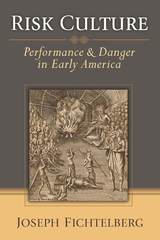 Risk Culture: Performance and Danger in Early America
Joseph Fichtelberg
University of Michigan Press, 2010 "As a number of recent studies have shown, the north European commercial world made the precise calculation of risk a central concern of the intellectual project of exploration, trade, and colonization. The great merit of Fichtelberg's book is systematizing the imaged world of dangers, and charting the various kinds of ritual and discursive performances marshaled to deal with the pressure of the unspeakable in early America from the 17th into the early 19th century. The readings of texts are invariably careful, and the points made, persuasive."
---David Shields, University of South Carolina Risk Culture is the first scholarly book to explore how strategies of performance shaped American responses to modernity. By examining a variety of early American authors and cultural figures, from John Smith and the Salem witches to Phillis Wheatley, Susanna Rowson, and Aaron Burr, Joseph Fichtelberg shows how early Americans created and resisted a dangerously liberating new world. The texts surveyed confront change through a variety of performances designed both to imagine and deter menaces ranging from Smith's hostile Indians, to Wheatley's experience of slavery, to Rowson's fear of exposure in the public sphere. Fichtelberg combines a variety of scholarly approaches, including anthropology, history, cultural studies, and literary criticism, to offer a unique synthesis of literary close reading and sociological theory in the service of cultural analysis. Joseph Fichtelberg is Professor of English and Chair of the English Department at Hofstra University.
Risk Management and Political Culture
Sheila Jasanoff
Russell Sage Foundation, 1986 This unique comparative study looks at efforts to regulate carcinogenic chemicals in several Western democracies, including the United States, and finds marked national differences in how conflicting scientific interpretations and competing political interests are resolved. Whether risk issues are referred to expert committees without public debate or debated openly in a variety of forums, patterns of interaction among experts, policy makers, and the public reflect fundamental features of each country's political culture. "A provocative argument....Poses interesting questions for the sociology of science, especially science produced for public debate."—Contemporary Sociology A Volume in the Russell Sage Foundation's Social Science Frontiers Series
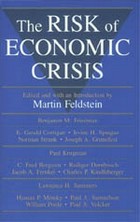 The Risk of Economic Crisis
Edited by Martin Feldstein
University of Chicago Press, 1991 The stunning collapse of the thrift industry, the major stock slump of 1987, rising corporate debt, wild fluctuations of currency exchange rates, and a rash of defaults on developing country debts have revived fading memories of the Great Depression and fueled fears of an impending economic crisis. Under what conditions are financial markets vulnerable to disruption and what economic consequences ensue when these markets break down?
In this accessible and thought-provoking volume, Benjamin M. Friedman investigates the origins of financial crisis in domestic capital markets, Paul Krugman examines the international origins and transmission of financial and economic crises, and Lawrence H. Summers explores the transition from financial crisis to economic collapse. In the introductory essay, Martin Feldstein reviews the major financial problems of the 1980s and discusses lessons to be learned from this experience. The book also contains provocative observations by senior academics and others who have played leading roles in business and government.
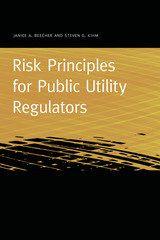 Risk Principles for Public Utility Regulators
Janice A. Beecher
Michigan State University Press, 2016 Risk and risk allocation have always been central issues in public utility regulation. Unfortunately, the term “risk” can easily be misrepresented and misinterpreted, especially when disconnected from long-standing principles of corporate finance.
This book provides those in the regulatory policy community with a basic theoretical and practical grounding in risk as it relates specifically to economic regulation in order to focus and elevate discourse about risk in the utility sector in the contemporary context of economic, technological, and regulatory change. This is not a “how-to” book with regard to calculating risks and returns but rather a resource that aims to improve understanding of the nature of risk. It draws from the fields of corporate finance, behavioral finance, and decision theory as well as the broader legal and economic theories that undergird institutional economics and the economic regulatory paradigm.
We exist in a world of scarce resources and abundant uncertainties, the combination of which can exacerbate and distort our sense of risk. Although there is understandable impulse to reduce risk, attempts to mitigate may be as likely to shift risk, and some measures might actually increase risk exposure. Many of the concepts explored here apply not just to financial decisions, such as those by utility investors, but also to regulatory and utility decision-making in general.
 The Risk Professionals
Thomas Dietz
Russell Sage Foundation, 1987 In the two decades since a new social movement put environmental issues high on the national policy agenda, Washington has become home to a small group of people—the risk professionals—whose careers center on the identification, assessment, and management of risks to public health and safety. These men and women, experts working in federal agencies, Congress, activist organizations, and corporations, help transform mass concern into government policy, shaping the way our society responds to environmental and technological hazards. Based on nearly 230 interviews, The Risk Professionals provides the first comprehensive sociological analysis of our "danger establishment." Dietz and Rycroft explore the social, educational, and career profiles of risk professionals; their worldviews and ideologies; their networks and norms. Not content to view risk professionals from a single perspective, the authors build an integrated description that considers commonalities in their subjects' backgrounds, interests, values, and communication patterns. The result is a uniquely revealing look into the heart of the risk policy system, and a broader illumination of the social structures and dynamics that will influence environmental policy for years to come. A Volume in the Russell Sage Foundation's Social Science Frontiers Series
Risk Quantification and Allocation Methods for Practitioners
Jaume Belles-Sampers, Montserrat Guillén, and Miguel Santolino
Amsterdam University Press, 2017 Risk Quantification and Allocation Methods for Practitioners offers a practical approach to risk management in the financial industry. This in-depth study provides quantitative tools to better describe qualitative issues, as well as clear explanations of how to transform recent theoretical developments into computational practice, and key tools for dealing with the issues of risk measurement and capital allocation.
Risk, Reproduction, and Narratives of Experience
Lauren Fordyce
Vanderbilt University Press, 2012 As Carole Browner explains in her foreword: "These chapters compellingly reveal that although we anthropologists tend to speak of biomedicine in hegemonic terms, in fact its penetration is quite variable and often ambivalently met. . . . Risk, Reproduction, and Narratives of Experience sheds new light on a troubling core aspect of medicalization processes, which simultaneously render pregnant women more docile subjects even as they are impelled to actively engage with biomedicalized prenatal care regimes. . . . We also see that a consummate means by which states seek to consolidate power in the reproductive realm is through expansion of the biomedical concept of risk. This critical observation emerges repeatedly in this collection."
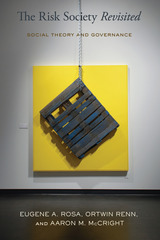 The Risk Society Revisited: Social Theory and Risk Governance
Eugene Rosa
Temple University Press, 2015 Risk is a part of life. How we handle uncertainty and deal with potential threats influence decision making throughout our lives. In The Risk Society Revisited, Eugene A. Rosa, Ortwin Renn, and Aaron M. McCright offer the first book to present an integrated theory of risk and governance. The authors examine our sociological understanding of risk and how we reconcile modern human conditions with our handling of risk in our quest for improved quality of life. They build a new framework for understanding risk—one that provides an innovative connection between social theory and the governance of technological and environmental risks and the sociopolitical challenges they pose for a sustainable future. Showing how our consciousness affects risk in the decisions we make—as individuals and as members of a democratic society—The Risk Society Revisited makes an important contribution to the literature of risk research.
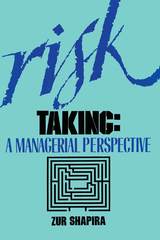 Risk Taking: A Managerial Perspective
Zur Shapira
Russell Sage Foundation, 1995 Classical economic theory assumes that people in risk situations follow a course of action based on a rational, consistent assessment of likely outcomes. But as Zur Shapira demonstrates in Risk Taking, corporate managers consistently stray from the prescribed path into far more subjective territory. Risk Taking offers a critical assessment of the relationship between theory and action in managerial decision making. Shapira offers a definitive account of the classical conception of risky decision making, which derives behavioral prescriptions from a calculation of both the value and the likelihood of possible outcomes. He then demonstrates how theories in this vein have been historically at odds with empirical observations. Risk Taking reports the results of an extensive survey of seven hundred managers that probed their attitudes and beliefs about risk and examined how they had actually made decisions in the face of uncertainty. The picture that emerges is of a dynamic, flexible process in which each manager's personal expertise and perceptions play profound roles. Managerial strategies are continually modified to suit changing circumstances. Rather than formulating probability estimates, executives create potential scenarios based not only on the possible outcomes but also on the many arbitrary factors inherent in their own situations. As Shapira notes, risk taking propensities vary among managers, and the need to maintain control and avoid particularly dangerous results exercises a powerful influence. Shapira also examines the impact of organizational structure, long-term management objectives, and incentives on decision making. With perceptive observations of the cognitive, emotional, and organizational dimensions of corporate decision making, Risk Taking propels the study of managerial risk behavior into new directions. This volume signals the way toward improving managerial decision making by revealing the need for more inclusive choice models that augment classical theory with vital behavioral observations.
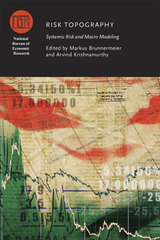 Risk Topography: Systemic Risk and Macro Modeling
Edited by Markus Brunnermeier and Arvind Krishnamurthy
University of Chicago Press, 2014 The recent financial crisis and the difficulty of using mainstream macroeconomic models to accurately monitor and assess systemic risk have stimulated new analyses of how we measure economic activity and the development of more sophisticated models in which the financial sector plays a greater role.
Markus Brunnermeier and Arvind Krishnamurthy have assembled contributions from leading academic researchers, central bankers, and other financial-market experts to explore the possibilities for advancing macroeconomic modeling in order to achieve more accurate economic measurement. Essays in this volume focus on the development of models capable of highlighting the vulnerabilities that leave the economy susceptible to adverse feedback loops and liquidity spirals. While these types of vulnerabilities have often been identified, they have not been consistently measured. In a financial world of increasing complexity and uncertainty, this volume is an invaluable resource for policymakers working to improve current measurement systems and for academics concerned with conceptualizing effective measurement.
Risk vs. Risk: Tradeoffs in Protecting Health and the Environment
John D. Graham
Harvard University Press, 1995 We see the stories in the newspaper nearly every day: a drug hailed as a breakthrough treatment turns out to cause harmful side effects; controls implemented to reduce air pollution are shown to generate hazardous solid waste; bans on dangerous chemicals result in the introduction of even more risky substitutes. Could our efforts to protect our health and the environment actually be making things worse? In Risk versus Risk, John D. Graham, Jonathan Baert Wiener, and their colleagues at the Harvard Center for Risk Analysis marshal an impressive set of case studies which demonstrate that all too often our nation's campaign to reduce risks to our health and the environment is at war with itself.
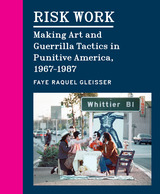 Risk Work: Making Art and Guerrilla Tactics in Punitive America, 1967–1987
Faye Raquel Gleisser
University of Chicago Press, 2023 How artists in the US starting in the 1960s came to use guerrilla tactics in performance and conceptual art, maneuvering policing, racism, and surveillance.
As US news covered anticolonialist resistance abroad and urban rebellions at home, and as politicians mobilized the perceived threat of “guerrilla warfare” to justify increased police presence nationwide, artists across the country began adopting guerrilla tactics in performance and conceptual art. Risk Work tells the story of how artists’ experimentation with physical and psychological interference from the late 1960s through the late 1980s reveals the complex and enduring relationship between contemporary art, state power, and policing.
Focusing on instances of arrest or potential arrest in art by Chris Burden, Adrian Piper, Jean Toche, Tehching Hsieh, Pope.L, the Guerrilla Girls, Asco, and PESTS, Faye Raquel Gleisser analyzes the gendered, sexualized, and racial politics of risk-taking that are overlooked in prevailing, white-centered narratives of American art. Drawing on art history and sociology as well as performance, prison, and Black studies, Gleisser argues that artists’ anticipation of state-sanctioned violence invokes the concept of “punitive literacy,” a collectively formed understanding of how to protect oneself and others in a carceral society.
Risk-Benefit Analysis: Second Edition
Richard Wilson and Edmund A. C. Crouch
Harvard University Press, 2001 Over the centuries, mankind has slowly reduced the risks and hazards that even as recently as a century ago kept life expectancy to a mere 45 years. Our average lifespan has improved to 77 years by remarkable progress in public health and safety. But with this improvement has come a demand for greater efforts to improve both life expectancy and the quality of life. The first edition of this book, published in 1982, was a pioneer in the development of logical, yet simple, analytic tools for discussion of the risks which we all face. This new edition, revised, expanded, and illustrated in detail, should be of value both to professionals in the field and to those who wish to understand these vital issues.
Risking a Somersault in the Air: Conversations with Nicaraguan Writers
Margaret Randall
Northwestern University Press, 1995 On July 19, 1979 the Nicaraguan people, under the banner of the Sandinista National Liberation Front, overthrew the 40-year-long Somoza family tyranny. Amongst those playing major roles in this popular revolution were many of the nation's leading poets and writers. Today, these men and women are focusing their creativity on the tasks of constructing a new nation and a new Nicaraguan culture. Through these interviews with 14 of Nicaragua's most important writers/revolutionaries we come to learn that Nicaragua's revolution, like its poetry, is an expression of great love, imagination and liberation.
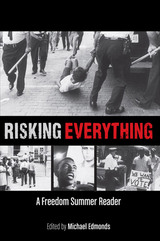 Risking Everything: A Freedom Summer Reader
Michael Edmonds
Wisconsin Historical Society Press, 2014 Risking Everything: A Freedom Summer Reader documents the 1964 Mississippi Freedom Summer Project, when SNCC and CORE workers and volunteers arrived in the Deep South to register voters and teach non-violence, and more than 60,000 black Mississippians risked everything to overturn a system that had brutally exploited them. In the 44 original documents in this anthology, you’ll read their letters, eavesdrop on their meetings, shudder at their suffering, and admire their courage. You’ll witness the final hours of three workers murdered on the project’s first day, hear testimony by black residents who bravely stood up to police torture and Klan firebombs, and watch the liberal establishment betray them. These vivid primary sources, collected by the Wisconsin Historical Society, provide both first-hand accounts of this astounding grassroots struggle as well as a broader understanding of the Civil Rights movement.
The selected documents are among the 25,000 pages about the Mississippi Freedom Summer Project in the archives of the Wisconsin Historical Society. The manuscripts were collected in the mid-1960s, at a time when few other institutions were interested in saving the stories of common people in McComb or Ruleville, Mississippi. Most have never been published before.
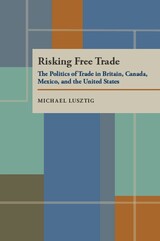 Risking Free Trade: The Politics of Trade in Britain, Canada, Mexico, and the United States
Michael Lusztig
University of Pittsburgh Press, 1996
There are few issues as politically explosive as the liberalization of trade, as recent controversies in the United States, Canada, and Mexico have shown. While loosening trade restrictions may make sense for a nation’s economy as a whole, it typically alienates powerful vested interests. Those interests can exact severe political costs for the government that enacts change. So why accept the risk?
Michael Lusztig contructs a model to determine why and under what conditions governments will take the free trade gamble. Lusztig uses his model to explain shifts to free trade in four cases: Britain’s repeal of the Corn Laws; the United States’ enactment of the Reciprocal Trade Agreements Act (1934); Canada’s decision to initiate continental free trade with the United States in 1985; and Mexico’s decision to pursue the North American Free Trade Agreement (NAFTA) in 1990.
 Risking Life and Lens: A Photographic Memoir
Helen M. Stummer
Temple University Press, 2017 For more than forty years, Helen M. Stummer has captured images depicting the dignity, humanity, and suffering of people living in conditions of poverty. Her efforts taught her to understand firsthand the resilience of people living in insufferable conditions. In her inspiring memoir, Risking Life and Lens, Stummer recounts her experiences as a socially-concerned documentary photographer whose passion for her work overcame her fears. Stummer’s images, from the mean streets of Manhattan and Newark, New Jersey, to the back woods of Maine and the mountains of Guatemala, expose the myths of poverty and serve as a metaphor for her challenges in her own life. The 159 photographs reproduced here recount Stummer’s journey as an artist and her personal quest for truth. Risking Life and Lens shares Stummer’s work and educational efforts and it provides valuable insights about race, class, and social justice—issues that continue to divide the country and the world. Her work has created change in both her own life and the lives of those who view it.
Risking Who One Is: Encounters with Contemporary Art and Literature
Susan Rubin Suleiman
Harvard University Press, 1994 Susan Suleiman sets forth in this insightful work an intimate and provocative exchange with contemporary writers and artists such as Simone de Beauvoir, Hélène Cixous, Elie Wiesel, Mary Gordon, Max Ernst and Angela Carter. Suleiman includes us in her voyages of self-discovery as she confronts the conflicts between the problematic and crucial relations between individual life-story and collective history.
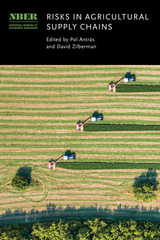 Risks in Agricultural Supply Chains
Edited by Pol Antràs and David Zilberman
University of Chicago Press, 2023 An essential guide to the role of microeconomic incentives, macro policies, and technological change in enhancing agriculture resilience. Climate change and the recent COVID-19 pandemic have exposed the vulnerability of global agricultural supply and value chains. There is a growing awareness of the importance of interactions within and between these supply chains for understanding the performance of agricultural markets. This book presents a collection of research studies that develop conceptual models and empirical analyses of risk resilience and vulnerability in supply chains. The chapters emphasize the roles played by microeconomic incentives, macroeconomic policies, and technological change in contributing to supply chain performance. The studies range widely, considering for example how agent-based modeling and remote sensing data can be used to assess the impact of shocks, and how recent shocks such as the COVID-19 pandemic and the African Swine fever in China affected agricultural labor markets, the supply chain for meat products, and the food retailing sector. A recurring theme is the transformation of agricultural supply chains and the volatility of food systems in response to microeconomic shocks. The chapters not only present new findings but also point to important directions for future research.
Risks in the Making: Travels in Life Insurance and Genetics
Ine Van Hoyweghen
Amsterdam University Press, 2006 In recent decades, insurance companies, scientists, and public officials have debated the potential use of genetic testing in insurance decisions. With Risks in the Making, Ine van Hoyweghen alters the terms of the debate, moving it from abstract, theoretical grounds to the question of how insurance companies actually work. Through an empirical ethnographic study of life insurance in Belgium, van Hoyweghen reveals fascinating and important details about insurance practices and risk management, underscoring the diversity of insurance markets, underwriting practices, and strategies.
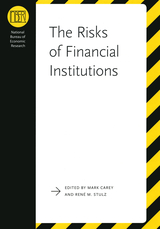 The Risks of Financial Institutions
Edited by Mark Carey and René M. Stulz
University of Chicago Press, 2007 Until about twenty years ago, the consensus view on the cause of financial-system distress was fairly simple: a run on one bank could easily turn to a panic involving runs on all banks, destroying some and disrupting the financial system. Since then, however, a series of events—such as emerging-market debt crises, bond-market meltdowns, and the Long-Term Capital Management episode—has forced a rethinking of the risks facing financial institutions and the tools available to measure and manage these risks.
The Risks of Financial Institutions examines the various risks affecting financial institutions and explores a variety of methods to help institutions and regulators more accurately measure and forecast risk. The contributors--from academic institutions, regulatory organizations, and banking--bring a wide range of perspectives and experience to the issue. The result is a volume that points a way forward to greater financial stability and better risk management of financial institutions.
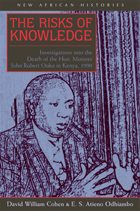 The Risks of Knowledge: Investigations into the Death of the Hon. Minister John Robert Ouko in Kenya, 1990
David William Cohen
Ohio University Press, 2004 In February 1990 assailants murdered Kenya’s distinguished Minister of Foreign Affairs and International Cooperation, Robert Ouko. The horror of the attack, the images of his mutilated and burned corpse, the evidence of a notorious cover-up, and the revelations of the pressures, conflicts, and fears he faced in his last weeks have engaged Kenya’s publics for years. The Risks of Knowledge minutely examines the multiple and unfinished investigations into the crime. Among the probes was an extensive 1990 inquiry organized by a New Scotland Yard team invited to Kenya by the government, as well as an open public commission of inquiry appointed by President Daniel arap Moi. The commission ran for seventeen months in 1990-91 before the president shut it down. International and Kenyan unrest over Ouko’s brutal death brought increasing attention to corruption and violence associated with the Moi government, leading in late 1991 to multiparty politics and in December 2002 to the elections that ended the Moi era. This powerfully argued book raises important issues about the production of knowledge and the politics of memory that will interest a large interdisciplinary audience.
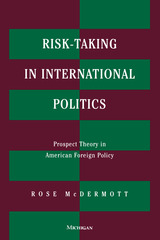 Risk-Taking in International Politics: Prospect Theory in American Foreign Policy
Rose McDermott
University of Michigan Press, 2001 Risk plays a dramatic role in international relations as leaders make decisions about such issues as war and peace, disarmament, and about lowering economic barriers to trade and investment. How a country's leaders think about risk in making foreign policy decisions is important in understanding why and how they make decisions.
Rose McDermott applies prospect theory, a theory developed by psychologists to understand decisionmaking under conditions of risk, to four cases in American foreign policy. Prospect theory suggests that decisionmakers who are confronting losses are more likely to take risks than are those decisionmakers who are satisfied with the status quo. The cases used to demonstrate this dynamic include: the Suez Crisis, the U-2 affair, the decisions surrounding the admission of the Shah of Iran to the United States in 1979, and the attempted rescue of the American hostages in Iran in 1980. McDermott shows how prospect theory enables us to understand cases that are otherwise inexplicable.
Risk Taking in International Relations offers a unique application of a sophisticated psychological model to international relations theory. The book will be of interest to political scientists and psychologists interested in decision making, in international relations and in American foreign policy.
Rose McDermott is Assistant Professor of Political Science, Cornell University.
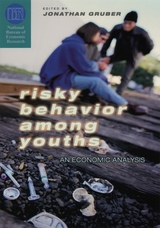 Risky Behavior among Youths: An Economic Analysis
Edited by Jonathan Gruber
University of Chicago Press, 2001 Every day young people engage in risky behaviors that affect not only their immediate well-being but their long-term health and safety. These well-honed essays apply diverse economic analyses to a wide range of unsafe activities, including teen drinking and driving, smoking, drug use, unprotected sex, and criminal activity. Economic principles are further applied to mental health and performance issues such as teenage depression, suicide, nutritional disorders, and high school dropout rates. Together, the essays yield notable findings: price and regulatory incentives are critical determinants of high-risk behavior, suggesting that youths do apply some sort of cost/benefit calculation when making decisions; the macroeconomic environment in which those decisions are made matters greatly; and youths who pursue high-risk behaviors are significantly more likely to engage in similar behaviors as adults.
This important volume provides both a key data source for public policy makers and a clear affirmation of the usefulness of economic analysis to our understanding of risky behavior.
A Risky Business?
Martha Kindler
Amsterdam University Press, 2012 This book is about migration as a form of risk-taking. Based on Ukrainian women’s experiences in the Polish domestic work sector, it presents a new approach to analyse movements of female migrants responding to the demand for household labour around the world. Risks involved in migration and in migrant domestic work are accounted for in detail alongside an analysis of the migration decision-making processes. This study shows how social ties and migrant institutions effectively reduce the otherwise radical asymmetry of power between an individual migrant, the state and an employer. A Risky Business? brings to light the complex risk structures of migrants’ activities and their sophisticated responses to them. With their innovative strategies, migrants challenge government-imposed constraints and thus reduce the risks of migration.
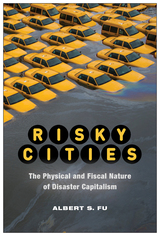 Risky Cities: The Physical and Fiscal Nature of Disaster Capitalism
Albert S. Fu
Rutgers University Press, 2022 Over half the world’s population lives in urban regions, and increasingly disasters are of great concern to city dwellers, policymakers, and builders. However, disaster risk is also of great interest to corporations, financiers, and investors. Risky Cities is a critical examination of global urban development, capitalism, and its relationship with environmental hazards. It is about how cities live and profit from the threat of sinkholes, garbage, and fire. Risky Cities is not simply about post-catastrophe profiteering. This book focuses on the way in which disaster capitalism has figured out ways to commodify environmental bads and manage risks. Notably, capitalist city-building results in the physical transformation of nature. This necessitates risk management strategies –such as insurance, environmental assessments, and technocratic mitigation plans. As such capitalists redistribute risk relying on short-term fixes to disaster risk rather than address long-term vulnerabilities.
 Risky Lessons: Sex Education and Social Inequality
Fields, Jessica
Rutgers University Press, 2008 Curricula in U.S. public schools are often the focus of heated debate, and few subjects spark more controversy than sex education. While conservatives argue that sexual abstinence should be the only message, liberals counter that an approach that provides comprehensive instruction and helps young people avoid sexually transmitted diseases and pregnancy is necessary. Caught in the middle are the students and teachers whose everyday experiences of sex education are seldom as clear-cut as either side of the debate suggests.
Risky Lessons brings readers inside three North Carolina middle schools to show how students and teachers support and subvert the official curriculum through their questions, choices, viewpoints, and reactions. Most important, the book highlights how sex education's formal and informal lessons reflect and reinforce gender, race, and class inequalities.
Ultimately critical of both conservative and liberal approaches, Fields argues for curricula that promote social and sexual justice. Sex education's aim need not be limited to reducing the risk of adolescent pregnancies, disease, and sexual activity. Rather, its lessons should help young people to recognize and contend with sexual desires, power, and inequalities.
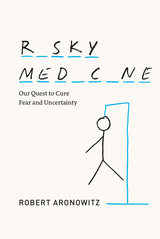 Risky Medicine: Our Quest to Cure Fear and Uncertainty
Robert Aronowitz
University of Chicago Press, 2015 Will ever-more sensitive screening tests for cancer lead to longer, better lives? Will anticipating and trying to prevent the future complications of chronic disease lead to better health? Not always, says Robert Aronowitz in Risky Medicine. In fact, it often is hurting us.
Exploring the transformation of health care over the last several decades that has led doctors to become more attentive to treating risk than treating symptoms or curing disease, Aronowitz shows how many aspects of the health system and clinical practice are now aimed at risk reduction and risk control. He argues that this transformation has been driven in part by the pharmaceutical industry, which benefits by promoting its products to the larger percentage of the population at risk for a particular illness, rather than the smaller percentage who are actually affected by it. Meanwhile, for those suffering from chronic illness, the experience of risk and disease has been conflated by medical practitioners who focus on anticipatory treatment as much if not more than on relieving suffering caused by disease. Drawing on such controversial examples as HPV vaccines, cancer screening programs, and the cancer survivorship movement, Aronowitz argues that patients and their doctors have come to believe, perilously, that far too many medical interventions are worthwhile because they promise to control our fears and reduce uncertainty.
Risky Medicine is a timely call for a skeptical response to medicine’s obsession with risk, as well as for higher standards of evidence for risk-reducing interventions and a rebalancing of health care to restore an emphasis on the actual curing of and caring for people suffering from disease.
Risky Rhetoric: AIDS and the Cultural Practices of HIV Testing
J. Blake Scott
Southern Illinois University Press, 2003 Risky Rhetoric: AIDS and the Cultural Practices of HIV Testing is the first book-length study of the rhetoric inherent in and surrounding HIV testing. In addition to providing a history of HIV testing in the United States from 1985 to the present, J. Blake Scott explains how faulty arguments about testing’s power and effects have promoted unresponsive and even dangerous testing practices for so-called healthy subjects as well as those deemed risky.A new afterword to the paperback edition discusses changes in testing technology, treatments, and public health responses in the last ten years. The ultimate goal of Risky Rhetoric is to offer strategies to policy makers, HIV educators and test counselors, and other rhetors for developing more responsive and egalitarian testing-related rhetorics and practices.
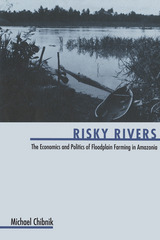 Risky Rivers: The Economics and Politics of Floodplain Farming in Amazonia
Michael Chibnik
University of Arizona Press, 1994 While anthropologists and ecologists have carefully described the activities of the slash-and-burn cultivators, ranchers, and miners of tropical South America, they have largely overlooked the economic strategies and political struggles of riverine people who survive by flood-recession agriculture and fishing. These ribere¤os, who constitute the majority of the inhabitants of the Amazonian floodplains of Peru, have developed ecologically sustainable resource management practices that enable them to cope with periodic inundations of their fields by "risky rivers."
They have, however, suffered greatly from unpredictable crop prices and erratic state agricultural policies. Michael Chibnik here examines the household economies, cultural ecology, grassroots political organizations of ribere¤os living in three floodplain villages near Iquitos, Peru. He describes the villagers' remarkable history, their participation in misconceived development programs, and their longstanding conflicts with regional elites. Chibnik discusses the political ecology of the region in the context of arguments about appropriate development policies in tropical lowlands. Although ribere¤os practice intensive agriculture with low environmental impact, they have not been able to improve their economic circumstances in recent years. Chibnik's study is a significant and timely contribution to current debates about the possibility of sustainable, equitable development in Amazonia.
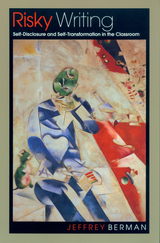 Risky Writing: Self-Disclosure and Self-Transformation in the Classroom
Jeffrey Berman
University of Massachusetts Press, 2001 This is the final volume in a trilogy of works that examine the impact of writing and reading about traumatic subjects. Diaries to an English Professor (1994) explores the ways in which undergraduate students use psychoanalytic diaries to probe conflicted issues in their lives. Surviving Literary Suicide (1999) investigates how graduate students respond to suicidal literature—novels and poems that portray and sometimes glorify self-inflicted death.
In Risky Writing, Jeffrey Berman builds on those earlier studies, describing ways teachers can encourage college students to write safely on a wide range of subjects often deemed too personal or too dangerous for the classroom: grieving the loss of a beloved relative or friend, falling into depression, coping with the breakup of one's family, confronting sexual abuse, depicting a drug or alcohol problem, encountering racial prejudice. Berman points out that nearly everyone has difficulty talking or writing about such issues because they arouse shame and tend to be enshrouded in secrecy and silence. This is especially true for college students, who are just emerging from adolescence and find themselves at institutions that rarely promote self-disclosure.
Recognizing the controversial nature of his subject, Berman confronts academic opposition to personal writing head on. He also discusses the similarities between the "writing cure" and the "talking cure," the role of the teacher and audience in the self-disclosing classroom, and the pedagogical strategies necessary to minimize risk, including the importance of empathy and other befriending skills.
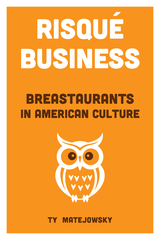 Risqué Business: Breastaurants in American Culture
Ty Matejowsky
University of Alabama Press, 2025 Risqué Business serves up the breastaurant industry, where food service, sex appeal, identity, and gender politics mix. Risqué Business explores the rise and ongoing cultural reckoning of “breastaurants”: sports bar–style restaurants like Hooters and Twin Peaks, which have long relied on the sexualized presentation of female servers to attract a mostly straight, male clientele. Ty Matejowsky, professor of anthropology at the University of Central Florida, is uniquely positioned in America’s foundational, breastaurant-saturated landscape. From this vantage, he offers a well-balanced account that draws on pop culture, media analysis, and contemporary gender politics. He delivers a smart, layered analysis of how breastaurants commodify youth and femininity, uphold retrograde masculinity, and serve as symbolic battlegrounds in today's highly charged political environments including America's deeply polarized Red State/Blue State divide. With case studies, cultural critique, and a critical lens on labor and sexuality, Matejowsky reveals how these restaurants are more than just risqué marketing gimmicks. They reflect deeper anxieties about gender, identity, and the uneasy fusion of sex and service in American consumer culture. Risqué Business is a high-spirited study of an industry that thrives at the intersection of appetite and identity.
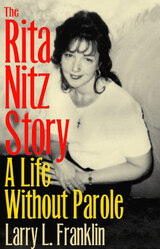 The Rita Nitz Story
Larry L. Franklin
Southern Illinois University Press, 2005 The April 1988 murder and decapitation of twenty-three-year-old Michael Miley in rural southern Illinois horrified and enraged local residents and law enforcement officials, some of whom suspected the homicide was a hate crime. The Rita Nitz Story: A Life Without Parole is an in-depth personal investigation into Miley’s murder, for which Rita Nitz was convicted as an accomplice to life in prison. Born in 1959, Rita was thirty when she was sentenced in 1989. Her husband, Richard Nitz, was convicted of the murder. Detailing the crime and its aftermath, Larry L. Franklin uncovers a disturbing set of facts that illuminate a possible miscarriage of justice. Was Rita Nitz involved in the murder of Michael Miley? Franklin doesn’t purport her guilt or her innocence but instead details the plight of a troubled woman who was a victim of sexual abuse and domestic violence at the hands of family members and spouses and who may also have been a victim of inadequate legal representation and a judicial system more interested in delivering the maximal punishment than in serving justice. Consulting with experts in prosecutorial conduct, jury psychology, and forensic evidence, Franklin discovered details that were withheld from the jury and the public during the trial in 1989. He also suggests other theories and names possible perpetrators involved in the murder that further imply shoddy police work and a tainted criminal investigation. Drawing on numerous conversations with Rita at the Dwight Correctional Center in Illinois, Franklin divulges the story of Rita’s tumultuous youth and her three problematic marriages. He shows her to be a battered woman who didn’t fully understand the circumstances and behavior that led to her being implicated in such a hideous crime and who lacked the financial resources and emotional strength to navigate the legal tangle that entrapped her. Franklin also points out the disparity in justice between Rita and Richard, who is up for parole in less than twenty years, while Rita remains sentenced to life without parole. In attempting to reach the truth about Miley’s murder, Franklin highlights abuses in the Illinois correctional system and disparities between the treatment of male and female convicts, sketching a blueprint that could improve law enforcement and justice in rural Illinois.
Rita-Levi-Montalcini: a pioneer in neuroscience
Manfredi Toraldo
Dana Press, 2018 Originally written in Italian and now available in English (PDF), this graphic novel celebrates the life and work of neuroscientist Rita Levi-Montalcini, who won the Nobel Prize in Physiology or Medicine for her "discovery of nerve growth factor" in 1986.
 Rite, Flesh, and Stone: The Matter of Death in Contemporary Spanish Culture
Antonio Córdoba
Vanderbilt University Press, 2021 Forensic science provides information and data behind the circumstances of a particular death, but it is culture that provides death with meaning. With this in mind, Rite, Flesh, and Stone proposes cultural matters of death as its structuring principle, operating as frames of the expression of mortality within a distinct set of coordinates. The chapters offer original approaches to how human remains are handled in the embodied rituals and social performances of contemporary funeral rites of all kinds; furthermore, they explore how dying flesh and corpses are processed by means of biopolitical technologies and the ethics of (self-)care, and how the vibrant and breathing materiality of the living is transformed into stone and analogous kinds of tangible, empirical presence that engender new cartographies of memory. Each coming from a specific disciplinary perspective, authors in this volume problematize conventional ideas about the place of death in contemporary Western societies and cultures using Spain as a case study.
Materials analyzed here—ranging from cinematic and literary fictions, to historical archives and anthropological and ethnographic sources—make explicit a dynamic scenario where actors embody a variety of positions toward death and dying, the political production of mortality, and the commemoration of the dead. Ultimately, the goal of this volume is to chart the complex network in which the disenchantment of death and its reenchantment coexist, and biopolitical control over secularized bodies overlaps with new avatars of the religious and non-theistic desires for memorialization and transcendence.
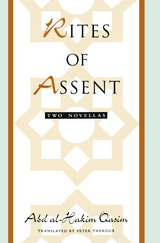 Rites of Assent: Two Novellas
Abdal Qasim
Temple University Press, 1995 "Written in 1977 and 1981, the novellas translated in this volume form a compelling unity and testify to the creativeness and vitality of contemporary Arab fiction."
-Choice
Abd al-Hakim Qasim (1935-1990), one of modern Egypt's great novelists, began writing short stories while imprisoned for his leftwing politics under the Nasser regime in the 1960s. This period in Qasim's life, along with his subsequent exile in Germany and his opposition to the Camp David Agreement, led him to avoid political commentary in his writing. He focused on people and events in the Egyptian village and the down-to-earth Sufi Islam practiced there. Still, the history of his political beliefs ensured his work would remain controversial, and most was published abroad in Beirut or Baghdad.
The power and inventiveness of modern Egyptian writing are manifest in this first English-language translation of two novellas that Qasim published together during his lifetime. Al-Mahdi is the story of Awadallah, an impoverished Coptic umbrella maker forced to convert to Islam by members of the local Muslim brotherhood. Awadallah's conversion, both unwilling and insincere, torments him with guilt, and he soon falls gravely ill. At the same time, subplots explore the philandering mayor's attempt to seduce his maid, and an affectionate homoerotic relationship between two young men in the Brotherhood. Elegantly narrated and visually evocative, Al-Mahdi illuminates everyday religious tensions in a small Egyptian town.
Where Al-Mahdi ends with Awadallah's death, Good News from the Afterlife opens virtually at the mouth of the grave--a testament to Qasim's versatility and compositional sense. This fantastical story brilliantly interweaves a young village boy's thoughts and the spiritual, sensual, and sometimes macabre recollections of a dead man newly lowered into his burial place. Memories and experiences mingle with images of the afterlife, as the deceased is judged by the Muslim angels of death and the boy suddenly hears that his grandfather has died. In the end, the boy awakes atop a grave, throwing into question which, if not all, of the story's strange events had been dreamed.
"[T]here's more than Mahfouz in modern Egyptian fiction, and it's good to have Qasim's work among us."
-Kirkus Reviews
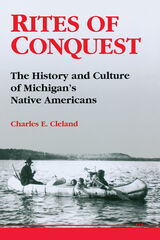 Rites of Conquest: The History and Culture of Michigan's Native Americans
Charles E. Cleland
University of Michigan Press, 1992 For many thousands of years before the arrival of Europeans, Michigan's native peoples, the Anishnabeg, thrived in the forests and along the shores of the Great Lakes. Theirs were cultures in delicate social balance and in economic harmony with the natural order. Rites of Conquest details the struggles of Native Americans Michigan—the Ojibwa, Ottawa, and Potawatomi, and their neighbors—to maintain unique traditions in the wake of contact with Euro-Americans. The French quest for furs, the colonial aggression of the British, and the invasion of native homelands by American settlers is the backdrop for this fascinating saga of their resistance and accommodation to the new social order. Minavavana's victory at Fort Michilimackinac, Pontiac's attempts to expel the British, Pokagon's struggle to maintain a Michigan homeland, and Big Abe Le Blanc's fight for fishing rights are a few of the many episodes recounted in the pages of this book.
Beyond wars and warriors, Rites of Conquest is also about diplomacy and negotiation, mythology and magic, birth and death, and the joys and trials of daily life in the native villages of the Great Lakes region. Today, Michigan's Native American citizens struggle to solve problems that are a legacy of their past, while they attempt to maintain a distinctive place within modern society. In facing this challenge they often turn to the values and traditions that set them apart as the most enduring peoples of the Great Lakes region.
The Rites of Passage
Arnold van Gennep
University of Chicago Press, 1961 Birth, puberty, marriage, and death are, in all cultures, marked by ceremonies which may differ but are universal in function. Arnold van Gennep (1873-1957) was the first anthropologist to note the regularity and significance of the rituals attached to the transitional stages in man's life, and his phrase for these, "the rites of passage," has become a part of the language of anthropology and sociology.
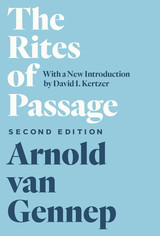 The Rites of Passage, Second Edition
Arnold van Gennep
University of Chicago Press, 2019 A CLASSIC WORK OF ANTHROPOLOGY—OVER SEVENTY THOUSAND COPIES SOLD
With a new introduction by Pulitzer Prize–winner David I. Kertzer
Arnold van Gennep’s masterwork, The Rites of Passage, has been a staple of anthropological education for more than a century. First published in French in 1909, and translated into English by the University of Chicago Press in 1960, this landmark book explores how the life of an individual in any society can be understood as a succession of transitions: birth, puberty, marriage, parenthood, old age, and, finally, death. Van Gennep’s great insight was discerning a common structure in each of these seemingly different transitions, involving rituals of separation, liminality, and incorporation. With compelling precision, he set out the terms that would both define twentieth-century ritual theory and become a part of our everyday lexicon.
This new edition of his work demonstrates how we can still make use of its enduring critical tools to understand our own social, religious, and political worlds, and even our personal and professional lives. In his new introduction, Pulitzer Prize–winning historian and anthropologist David I. Kertzer sheds new light on van Gennep, on the battles he fought, and on the huge impact the book has had since publication of the first English edition.
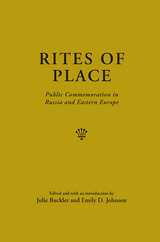 Rites of Place: Public Commemoration in Russia and Eastern Europe
Julie Buckler and Emily D Johnson
Northwestern University Press, 2013 Ranging widely across time and geography, Rites of Place is to date the most comprehensive and diverse example of memory studies in the field of Russian and East European studies. Leading scholars consider how public rituals and the commemoration of historically significant sites facilitate a sense of community, shape cultural identity, and promote political ideologies. The aims of this volume take on unique importance in the context of the tumultuous events that have marked Eastern European history—especially the revolutions of 1905 and 1917, World War II, and the collapse of the Soviet Union. With essays on topics such as the founding of St. Petersburg, the battle of Borodino, the Katyn massacre, and the Lenin cult, this volume offers a rich discussion of the uses and abuses of memory in cultures where national identity has repeatedly undergone dramatic shifts and remains riven by internal contradictions.
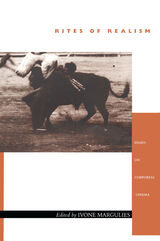 Rites of Realism: Essays on Corporeal Cinema
Ivone Margulies, ed.
Duke University Press, 2003 Rites of Realism shifts the discussion of cinematic realism away from the usual focus on verisimilitude and faithfulness of record toward a notion of "performative realism," a realism that does not simply represent a given reality but enacts actual social tensions. These essays by a range of film scholars propose stimulating new approaches to the critical evaluation of modern realist films and such referential genres as reenactment, historical film, adaptation, portrait film, and documentary. By providing close readings of classic and contemporary works, Rites of Realism signals the need to return to a focus on films as the main innovators of realist representation. The collection is inspired by André Bazin's theories on film's inherent heterogeneity and unique ability to register contingency (the singular, one-time event). This volume features two new translations: of Bazin's seminal essay "Death Every Afternoon" and Serge Daney's essay reinterpreting Bazin's defense of the long shot as a way to set the stage for a clash or risky confrontation between man and animal. These pieces evince key concerns—particularly the link between cinematic realism and contingency—that the other essays explore further. Among the topics addressed are the provocative mimesis of Luis Buñuel's Land Without Bread; the adaptation of trial documents in Carl Dreyer's Passion of Joan of Arc; the use of the tableaux vivant by Wim Wenders and Peter Greenaway; and Pier Paolo Pasolini's strategies of analogy in his transposition of The Gospel According to St. Matthew from Palestine to southern Italy. Essays consider the work of filmmakers including Michelangelo Antonioni, Maya Deren, Mike Leigh, Cesare Zavattini, Zhang Yuan, and Abbas Kiarostami.
Contributors: Paul Arthur, André Bazin, Mark A. Cohen, Serge Daney, Mary Ann Doane, James F. Lastra, Ivone Margulies, Abé Mark Normes, Brigitte Peucker, Richard Porton, Philip Rosen, Catherine Russell, James Schamus, Noa Steimatsky, Xiaobing Tang
 Ritual and Capital
Edited by Bard Graduate Center and Wendy's Subway
Bard Graduate Center, 2020 Ritual and Capital is an expansive volume that collects an interdisciplinary range of voices and genres that reflect on ritual as a form of resistance against capitalism. The poems, essays, and artworks included in this anthology explore habits and practices formed to subvert, subsist, and survive under the repression of capital. These works explore the refuge in ritual, how ritual practices might endow objects with qualities that resist market values, the use of ritual in embodied practices of healing and care, and how ritual strengthens communities.
The publication of Ritual and Capital is the culmination of a series of public readings organized by Wendy’s Subway, a nonprofit organization in Brooklyn, as part of their Spring 2017 Reading Room residency at the Bard Graduate Center. Copublished by the Bard Graduate Center and Wendy’s Subway, Ritual and Capital is the first title in the BGCX series, a publication series designed to expand time-based programming after the events themselves have ended. Springing from the generative spontaneity of conversation, performance, and hands-on engagement as their starting points, these experimental publishing projects will provide space for continued reflection and research in a form that is inclusive of a variety of artists and makers.
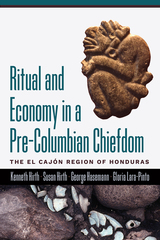 Ritual and Economy in a Pre-Columbian Chiefdom: The El Cajón Region of Honduras
Kenneth Hirth
University Press of Colorado, 2023 This volume examines the organization and ritual economy of a pre-Columbian chiefdom that developed in central Honduras over a 1,400-year period from 400 BC to AD 1000. Extremely applicable and broadly important to the archaeological studies of Mesoamerica, Ritual and Economy in a Pre-Columbian Chiefdom models the ritual organization of pre-Columbian societies across Honduras to expand the understanding of chiefdom societies in Central America and explore how these non-Maya societies developed and evolved.
As part of the ritual economy, a large quantity of jade and marble artifacts were deposited as offerings in the ritual architecture of the El Cajón region’s central community of Salitrón Viejo. Over 2,800 of these high-value items were recovered from their original ritual contexts, making Salitrón Viejo one of the largest in situ collections of these materials ever recovered in the New World. These materials are well dated and tremendously varied and provide a cross-section of all jade-carving lapidary traditions in use across eastern Mesoamerica between AD 250 and 350.
With a complementary website providing extensive additional description, visualization, and analysis (https://journals.psu.edu/opa/issue/view/3127), Ritual and Economy in a Pre-Columbian Chiefdom is a new and original contribution that employs an “economy of ritual approach” to the study of chiefdom societies in the Americas. It is a foundational reference point for any scholar working in Mesoamerica and Central America, especially those engaged in Maya research, as well as archaeologists working with societies at this scale of complexity in Latin America and around the world.
Ritual and Performativity: The Chorus in Old Comedy
Anton Bierl
Harvard University Press, 2009 In this groundbreaking study, Anton Bierl uses recent approaches in literary and cultural studies to investigate the chorus of Old Comedy. After an extensive theoretical introduction that also serves as a general introduction to the dramatic chorus from the comic vantage point, a close reading of Aristophanes' Thesmophoriazusae shows that ritual is indeed present in both the micro- and macrostructure of Attic comedy, not as a fossilized remnant of the origins of the genre but as part of a still existing performative choral culture. The chorus members do play a role within the dramatic plot, but they simultaneously refer to their own performance in the here and now and to their function as participants in a ritual. Bierl's investigation also includes an unparalleled treatment of the phallic songs preserved by Semos.
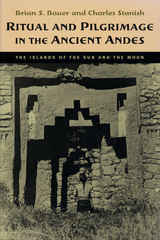 Ritual and Pilgrimage in the Ancient Andes: The Islands of the Sun and the Moon
By Brian S. Bauer and Charles Stanish
University of Texas Press, 2001 The Islands of the Sun and the Moon in Bolivia's Lake Titicaca were two of the most sacred locations in the Inca empire. A pan-Andean belief held that they marked the origin place of the Sun and the Moon, and pilgrims from across the Inca realm made ritual journeys to the sacred shrines there. In this book, Brian Bauer and Charles Stanish explore the extent to which this use of the islands as a pilgrimage center during Inca times was founded on and developed from earlier religious traditions of the Lake Titicaca region. Drawing on a systematic archaeological survey and test excavations in the islands, as well as data from historical texts and ethnography, the authors document a succession of complex polities in the islands from 2000 BC to the time of European contact in the 1530s AD. They uncover significant evidence of pre-Inca ritual use of the islands, which raises the compelling possibility that the religious significance of the islands is of great antiquity. The authors also use these data to address broader anthropological questions on the role of pilgrimage centers in the development of pre-modern states.
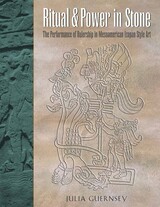 Ritual and Power in Stone: The Performance of Rulership in Mesoamerican Izapan Style Art
By Julia Guernsey
University of Texas Press, 2006 The ancient Mesoamerican city of Izapa in Chiapas, Mexico, is renowned for its extensive collection of elaborate stone stelae and altars, which were carved during the Late Preclassic period (300 BC-AD 250). Many of these monuments depict kings garbed in the costume and persona of a bird, a well-known avian deity who had great significance for the Maya and other cultures in adjacent regions. This Izapan style of carving and kingly representation appears at numerous sites across the Pacific slope and piedmont of Mexico and Guatemala, making it possible to trace political and economic corridors of communication during the Late Preclassic period. In this book, Julia Guernsey offers a masterful art historical analysis of the Izapan style monuments and their integral role in developing and communicating the institution of divine kingship. She looks specifically at how rulers expressed political authority by erecting monuments that recorded their performance of rituals in which they communicated with the supernatural realm in the persona of the avian deity. She also considers how rulers used the monuments to structure their built environment and create spaces for ritual and politically charged performances. Setting her discussion in a broader context, Guernsey also considers how the Izapan style monuments helped to motivate and structure some of the dramatic, pan-regional developments of the Late Preclassic period, including the forging of a codified language of divine kingship. This pioneering investigation, which links monumental art to the matrices of political, economic, and supernatural exchange, offers an important new understanding of a region, time period, and group of monuments that played a key role in the history of Mesoamerica and continue to intrigue scholars within the field of Mesoamerican studies.
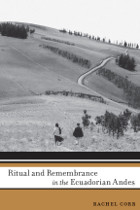 Ritual and Remembrance in the Ecuadorian Andes
Rachel Corr
University of Arizona Press, 2010 Not every world culture that has battled colonization has suffered or died. In the Ecuadorian Andean parish of Salasaca, the indigenous culture has stayed true to itself and its surroundings for centuries while adapting to each new situation. Today, indigenous Salascans continue to devote a large part of their lives to their distinctive practices—both community rituals and individual behaviors—while living side by side with white-mestizo culture.
In this book Rachel Corr provides a knowledgeable account of the Salasacan religion and rituals and their respective histories. Based on eighteen years of fieldwork in Salasaca, as well as extensive research in Church archives—including never-before-published documents—Corr’s book illuminates how Salasacan culture adapted to Catholic traditions and recentered, reinterpreted, and even reshaped them to serve similarly motivated Salasacan practices, demonstrating the link between formal and folk Catholicism and pre-Columbian beliefs and practices. Corr also explores the intense connection between the local Salasacan rituals and the mountain landscapes around them, from peak to valley.
Ritual and Remembrance in the Ecuadorian Andes is, in its portrayal of Salasacan religious culture, both thorough and all-encompassing. Sections of the book cover everything from the performance of death rituals to stories about Amazonia as Salasacans interacted with outsiders—conquistadors and camera-toting tourists alike. Corr also investigates the role of shamanism in modern Salasacan culture, including shamanic powers and mountain spirits, and the use of reshaped, Andeanized Catholicism to sustain collective memory. Through its unique insider’s perspective of Salasacan spirituality, Ritual and Remembrance in the Ecuadorian Andes is a valuable anthropological work that honestly represents this people’s great ability to adapt.
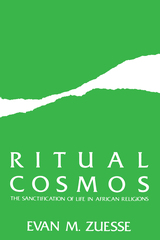 Ritual Cosmos: Sanctification Of Life In
Evan Zuesse
Ohio University Press, 1985 In the West we are accustomed to think of religion as centered in the personal quest for salvation or the longing for unchanging Being. Perhaps this is why we have found it so difficult to understand the religions of Africa. These religions are oriented to very different goals: fecundity, prosperity, health, social harmony. These seemingly trivial and specific goals are not the expressions of inauthentic or undeveloped religion, as we tend to think, but of a distinctive and profound spiritual perspective from which, in fact, we may have much to learn.
African religions, as this study concludes from its close examination of a number of specific African universes, are religions devoted to the sanctification and constant renewal of life. They are dedicated to Becoming rather than to Being, and seek to sustain a flourishing divine order rather than save the isolated self from it. But these religions do not comfortably express themselves in metaphysical abstractions; instead, they use a ritual idiom more effective than any philosophical disquisition.
Ritual Cosmos analyzes the logic and inner meaning of such ritual structures as sacrifice and taboo, harvest festivals and rites of divine kingship, millenary movements, witchcraft, and much else. In the course of the discussion, many of the basic assumptions of the scientists and theologians who have concerned themselves with the role of religion in human society are reexamined; the distinctions often made between the sacred and the secular, or religion and magic, for example, are questioned.
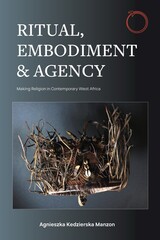 Ritual, Embodiment, and Agency: Making Religion in Contemporary West Africa
Agnieszka Kedzierska Manzon
HAU, 2026 An English translation of a French study of the rituals of the Mande people in West Africa.
Ritual, Embodiment, and Agency shows through rich ethnographic analysis how Mande people in West Africa resort to multiple ritual practices to address an “episteme of doubt.” In the context of armed conflicts and terrorist attacks, climate disruptions, financial crises, and illness, members of “hunter societies," experts who handle certain agentive artifacts, and adepts in a spiritual possession cult deal with a complex past and uncertain future through creative embodied engagement. Formed within and partially against a predominantly Islamic context and the spread of charismatic Christianities, such embodied ways of acting enable these religious specialists to become “virtuous subjects” to change their relations to the world and to themselves. This is an English translation of Corps rituels. La fabrique du religieux en pays mandingue (Mali, Guinée, Côte d'Ivoire).
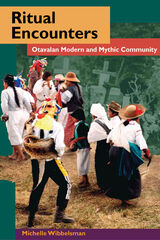 Ritual Encounters: Otavalan Modern and Mythic Community
Michelle Wibbelsman
University of Illinois Press, 2008 This book examines ritual practices and public festivals in the Otavalo and Cotacachi areas of northern Andean Ecuador's Imbabura province. Otavaleños are a unique group in that they maintain their traditional identity but also cultivate a cosmopolitanism through frequent international travel. Ritual Encountersexplores the moral, mythic, and modern crossroads at which Otavaleños stand, and how, at this junction, they come to define themselves as millennial people. Michelle Wibbelsman shows that Otavaleños are deeply engaged in transnational mobility and in the cultural transformations that have resulted from Otavalan participation in global markets, international consumer trends, and technological developments. Rituals have persisted among this ethnic community as important processes for symbolically capturing and critically assessing cultural changes in the face of modern influences. As religious expression, political commentary, transcendental communication, moral judgment, and transformative experience, Otavalan rituals constitute enduring practices that affirm ethnic identities, challenge dominant narratives, and take issue with power inequalities behind hegemony. Ritual Encounters thus offers an appreciation of the modern and mythic community as a single and emergent condition.
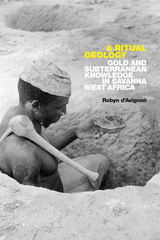 A Ritual Geology: Gold and Subterranean Knowledge in Savanna West Africa
Robyn d'Avignon
Duke University Press, 2022 Set against the ongoing corporate enclosure of West Africa’s goldfields, A Ritual Geology tells the untold history of one of the world’s oldest indigenous gold mining industries: Francophone West Africa’s orpaillage. Establishing African miners as producers of subterranean knowledge, Robyn d’Avignon uncovers a dynamic “ritual geology” of techniques and cosmological engagements with the earth developed by agrarian residents of gold-bearing rocks in savanna West Africa. Colonial and corporate exploration geology in the region was built upon the ritual knowledge, gold discoveries, and skilled labor of African miners even as states racialized African mining as archaic, criminal, and pagan. Spanning the medieval and imperial past to the postcolonial present, d’Avignon weaves together long-term ethnographic and oral historical work in southeastern Senegal with archival and archeological evidence from Burkina Faso, Côte d’Ivoire, Guinea, and Mali. A Ritual Geology introduces transnational geological formations as a new regional framework for African studies, environmental history, and anthropology.
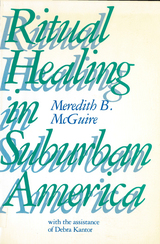 Ritual Healing in Surburban America
McGuire, Meredith
Rutgers University Press, 1988 "One of the more provocative studies of why middle America is making increasing use of ritual healing and what that choice tells us of problems with biomedical care in technological institutions. . . . A welcome addition to anthropological studies of ritual healing in other societies, and it illuminates a huge component of our health care system that is poorly understood."--Arthur Kleinman, M.D., Harvard University "An all too rare volume, namely a scholarly work on the practice of healing in suburban or what we might call middle-class America. McGuire, perhaps uniquely, has set out the religious or 'ritual' healing beliefs and practices that are usually strictly segregated and kept apart. . . . Anyone who takes seriously the need to understand 'healing' . . . should obtain this book."--Health and Healing "The power of the book is in the larger cultural analysis it offers . . . a valuable contribution to medical sociology."--Sociological Analysis "This welcome study of nonmedical healing among upper-middle-class and middle-class persons in Essex County, New Jersey, clearly shows how individuals become attracted to and influenced by alternative healing techniques."--Choice "Develops an innovative sociological approach to the study of alternative healing practices through a methodologically sound qualitative study. . . . The high quality of research and conceptualization and the meticulous documentation of the relevant literature make [this book] essential reading for those interested in the sociology and anthropology of religion and of medicine, and in the study of health and illness in contemporary America."--Contemporary Sociology "A major contribution."--The Christian Century "The remarkable strength of this book about the exotic in the commonplace is that it demonstrates both that ritual healing is widespread in the heartland of medical technology, and that the wide variety of ritual healing practices are based on similar structures."--Culture, Medicine, and Psychiatry
Ritual House: Drawing on Nature's Rhythms for Architecture and Urban Design
Ralph Knowles
Island Press, 2006 Celebrated architect Ralph Knowles, Distinguished Emeritus at USC’s School of Architecture, has carefully crafted a book for architects, designers, planners—anyone who yearns to reconnect to the natural world through the built environment. He shows us how to re-examine a shadow, a wall, a window, a landscape, as they respond to the natural cycles of heat, light, wind, and rain. Analyzing methods of sheltering that range from a Berber tent to a Spanish courtyard to the cityscape of contemporary Los Angeles, Ritual House shows us the future: by coining the concept of solar access zoning, he introduces a radical yet increasingly viable solution for tomorrow’s mega-cities.
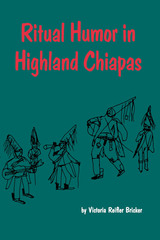 Ritual Humor in Highland Chiapas
By Victoria Reifler Bricker
University of Texas Press, 1973 Zinacantan, Chamula, and Chenalhó are neighboring Mayan communities situated in highland Chiapas, Mexico, near the city of San Cristóbal Las Casas. The inhabitants of the three communities speak dialects of the Tzotzil language. Five religious fiestas, celebrated by these communities in honor of their saints, provide the data for Victoria Bricker's comparative study of ritual humor. In Chenalhó and Chamula performances of ritual humor are concentrated in the five-day period of a single fiesta, while in Zanacantan similar performances are distributed over threee fiestas. In these fiesta settings, performers in distinctive costumes make obscene and sacreligious remarks in the context of religious ritual. These performances are defined as ritual humor because they occur only in ritual settings. Bricker's study constitutes a controlled cross-cultural comparison of ceremonial or ritual humor in its social and cultural setting. Much new information is provided in verbatim texts, recorded during actual fiesta performances. The study reveals that, although the three communities share a common pool of ritual symbols, they elaborate them differently in ritual humor. The study analyzes the symbolic expression of values, social organization, and interethnic relations.
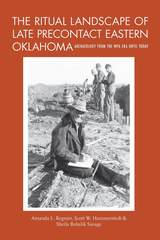 The Ritual Landscape of Late Precontact Eastern Oklahoma: Archaeology from the WPA Era until Today
by Amanda L. Regnier, Scott W. Hammerstedt, and Sheila Bobalik Savage
University of Alabama Press, 2019 Revisits and updates WPA-funded archaeological research on key Oklahoma mound sites
As part of Great Depression relief projects started in the 1930s, the Works Progress Administration (WPA) sponsored massive archaeological projects across Oklahoma. The WPA crews excavated eight mound sites and dozens of nonmound residential sites in the Arkansas River Valley that date between AD 1000 and 1450. These sites are considered the westernmost representations of Mississippian culture in the Southeast.
The results of these excavations were documented in field journals and photographs prepared by the field supervisors and submitted in a series of quarterly reports to WPA headquarters. These reports contain a wealth of unpublished information summarizing excavations at the mound sites and residential sites, including mound profiles, burial descriptions, house maps, artifact tables, and artifact sketches. Of the excavated mound sites, results from only one, Spiro, have been extensively studied and synthesized in academic literature. The seven additional WPA-excavated mound sites—Norman, Hughes, Brackett, Eufaula, Skidgel, Reed, and Lillie Creek—are known to archaeologists outside of Oklahoma only as unlabeled points on maps of mound sites in the Southeast.
The Ritual Landscape of Late Precontact Eastern Oklahoma curates and contextualizes the results of the WPA excavations, showing how they inform archaeological understanding of Mississippian occupation in the Arkansas Valley. Regnier, Hammerstedt, and Savage also relate the history and experiences of practicing archaeology in the 1930s, incorporating colorful excerpts from field journals of the young, inexperienced archaeologists. Finally, the authors update current knowledge of mound and nonmound sites in the region, providing an excellent example of historical archaeology.
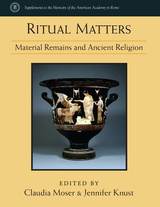 Ritual Matters: Material Remains and Ancient Religion
Claudia Moser and Jennifer Knust, editors
University of Michigan Press, 2017 Ritual Matters interrupts the anachronistic binaries of religious practice and belief, the material and the theological, by taking a new approach to the study of archaeological remains of ancient religions. Focusing on the materiality of ritual—inherent in everything from monumental temples and altars, to votive offerings and codices, to sanctioned inscriptions and reliefs—allows for a novel vantage point from which to consider ancient religious practices, as well as an important counterbalance to more traditional conceptual perspectives often privileged in the field.
Material remains of religious practices may reveal striking local continuity, but they also highlight points of change, as distinct moments of manufacture and use transformed both sites and objects. Yet not every religious practice leaves a trace: the embodied use of imperial statuary, the rationale for the design of particular sacred books or the ephemeral “magical” implements designed by local religious experts leave few traces, if any, and are therefore less amenable to material investigation. What does remain, however, challenges any neat association between representation and reality or literary claim and practical application.
This volume represents a significant contribution to the material approach of studying the ancient Mediterranean’s diverse religious practices. In addition to volume editors Claudia Moser and Jennifer Knust, contributors include Henri Duday, Gunnel Ekroth, David Frankfurter, Richard Gordon, Valérie Huet, William Van Andringa, and Zsuzsanna Várhelyi. Topics covered include funerary remains, sacrificial practices, “magic,” Roman altars, imperial reliefs and statuary, and the role of sacred books.
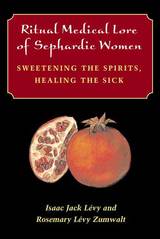 Ritual Medical Lore of Sephardic Women: Sweetening the Spirits, Healing the Sick
Isaac Jack Lévy and Rosemary Lévy Zumwalt
University of Illinois Press, 2002 Winner of the Ellii Kongas-Maranda Prize from the Women's Section of the American Folklore Society, 2003. Ritual Medical Lore of Sephardic Women preserves the precious remnants of a rich culture on the verge of extinction while affirming women's pivotal role in the health of their communities. Centered around extensive interviews with elders of the Sephardic communities of the former Ottoman Empire, this volume illuminates a fascinating complex of preventive and curative rituals conducted by women at home--rituals that ensured the physical and spiritual well-being of the community and functioned as a vital counterpart to the public rites conducted by men in the synagogues. Isaac Jack Lévy and Rosemary Lévy Zumwalt take us into the homes and families of Sephardim in Turkey, Israel, Greece, the former Yugoslavia, and the United States to unravel the ancient practices of domestic healing: the network of blessings and curses tailored to every occasion of daily life; the beliefs and customs surrounding mal ojo (evil eye), espanto (fright), and echizo (witchcraft); and cures involving everything from herbs, oil, and sugar to the powerful mumia (mummy) made from dried bones of corpses. For the Sephardim, curing an illness required discovering its spiritual cause, which might be unintentional thought or speech, accident, or magical incantation. The healing rituals of domesticated medicine provided a way of making sense of illness and a way of shaping behavior to fit the narrow constraints of a tightly structured community. Tapping a rich and irreplaceable vein of oral testimony, Ritual Medical Lore of Sephardic Women offers fascinating insight into a culture where profound spirituality permeated every aspect of daily life.
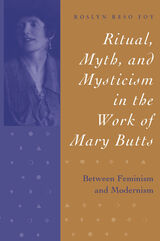 Ritual, Myth, and Mysticism in the Work of Mary Butts: Between Feminism and Modernism
FOY ROSLYN
University of Arkansas Press, 2000 Mary Butts wrote and lived among notable modernist writers such as T.S. Eliot, Ford Madox Ford, Jean Cocteau, H.D., and Ezra Pound, and was on her way to becoming one of the most respected British female writers of the twentieth century. Yet, after her death in 1937 at the age of forty-six, her reputation suffered a decline. Butt's idiosyncratic spirituality did not lend itself to easy critical examination, modernism was generally considered a masculine endeavor, and her papers were not made public for over fifty years. The recent acquisition of those papers by the Beinecke Library at Yale University, however, has brought about a resurgence of interest in her unique writings. Mary Butts confronts and reinterprets reality in extraordinary ways, and her modernist vision recalls the natural origins and powers of the female divine. Her intense dedication to ancient rites and myth, and her dabbling in the occult, became embedded in her fiction and led to her own brand of mysticism. Indeed, the Butts heroine is at once, healer, sacred priestess, earth goddess, lover, and daimon/demon. In presenting her characters this way, Butts valorizes what she calls "the soul living at its fullest capacity." Roslyn Reso Foy gives us the first sustained critical study of Butts, exploring the signficance of feminism, mysticism, and magic in her life and writings. Foy's thoughtful analysis, combining scholarship with straightforward discussion, will serve as an introduction to, and foundation for, further critical studies of this remarkable female modernist whose work coincides with contemporary concerns and who can no longer be ignored.
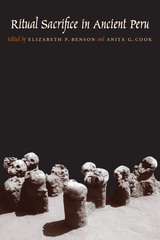 Ritual Sacrifice in Ancient Peru
Edited by Elizabeth P. Benson and Anita G. Cook
University of Texas Press, 2001 Propitiating the supernatural forces that could grant bountiful crops or wipe out whole villages through natural disasters was a sacred duty in ancient Peruvian societies, as in many premodern cultures. Ritual sacrifices were considered necessary for this propitiation and for maintaining a proper reciprocal relationship between humans and the supernatural world. The essays in this book examine the archaeological evidence for ancient Peruvian sacrificial offerings of human beings, animals, and objects, as well as the cultural contexts in which the offerings occurred, from around 2500 B.C. until Inca times just before the Spanish Conquest. Major contributions come from the recent archaeological fieldwork of Steve Bourget, Anita Cook, and Alana Cordy-Collins, as well as from John Verano's laboratory work on skeletal material from recent excavations. Mary Frame, who is a weaver as well as a scholar, offers rich new interpretations of Paracas burial garments, and Donald Proulx presents a fresh view of the nature of Nasca warfare. Elizabeth Benson's essay provides a summary of sacrificial practices.
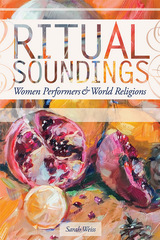 Ritual Soundings: Women Performers and World Religions
Sarah Weiss
University of Illinois Press, 2019 The women of communities in Hindu India and Christian Orthodox Finland alike offer lamentations and mockery during wedding rituals. Catholic women of southern Italy perform tarantella on pilgrimages while Muslim Berger girls recite poetry at Moroccan weddings. Around the world, women actively claim agency through performance during such ritual events. These moments, though brief, allow them a rare freedom to move beyond culturally determined boundaries.
In Ritual Soundings, Sarah Weiss reads deeply into and across the ethnographic details of multiple studies while offering a robust framework for studying music and world religion. Her meta-ethnography reveals surprising patterns of similarity between unrelated cultures. Deftly blending ethnomusicology, the study of gender in religion, and sacred music studies, she invites ethnomusicologists back into comparative work, offering them encouragement to think across disciplinary boundaries. As Weiss delves into a number of less-studied rituals, she offers a forceful narrative of how women assert agency within institutional religious structures while remaining faithful to the local cultural practices the rituals represent.
Ritual, Spectacle, and Theatre in Late Medieval Seville: Performing Empire
Christopher Swift
Arc Humanities Press, 2023 From the fall of Islamic Išbīliya in 1248 to the conquest of the New World, Seville was a nexus of economic and religious power where interconfessional living among Christians, Jews, and Muslims was negotiated on public stages. From out of seemingly irreconcilable ideologies of faith, hybrid performance culture emerged in spectacles of miraculous transformation, disciplinary processionals, and representations of religious identity.
Ritual, Spectacle, and Theatre in Late Medieval Seville reinvigorates the study of medieval Iberian theatre by revealing the ways in which public expressions of devotion, penance, and power fostered cultural reciprocity, rehearsed religious difference, and ultimately helped establish Seville as the imperial centre of Christian Spain.
 Ritual Speech in the Himalayas: Oral Texts and Their Contexts
Martin Gaenszle
Harvard University Press The traditions of oral ritual speech in the Himalayas have a lively existence alongside the written “great” traditions that predominate. However, as Martin Gaenszle shows, the oral traditions are still little known and even less understood. This collection of oral texts from Nepal, Bhutan, and northeast India, rich with translation and interpretation, serves two purposes. First, it presents the texts themselves, not just as fragments, but as coherent performances of ritual speech, varied in their linguistic form. Second, it displays various possible methods of presenting oral ritual texts in written form; no single standard form is yet agreed upon. In Ritual Speech in the Himalayas, each contributor showcases a unique style of transforming the spoken language and its translation or comments into an editorial format to fit the respective genres and scholarly interests, such as interlinear or sectional translation, morphological glossing, or musical scores.
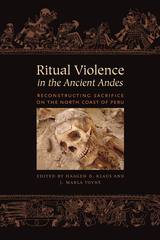 Ritual Violence in the Ancient Andes: Reconstructing Sacrifice on the North Coast of Peru
Edited by Haagen D. Klaus and J. Marla Toyne
University of Texas Press, 2016 Traditions of sacrifice exist in almost every human culture and often embody a society’s most meaningful religious and symbolic acts. Ritual violence was particularly varied and enduring in the prehistoric South American Andes, where human lives, animals, and material objects were sacrificed in secular rites or as offerings to the divine. Spectacular discoveries of sacrificial sites containing the victims of violent rituals have drawn ever-increasing attention to ritual sacrifice within Andean archaeology. Responding to this interest, this volume provides the first regional overview of ritual killing on the pre-Hispanic north coast of Peru, where distinct forms and diverse trajectories of ritual violence developed during the final 1,800 years of prehistory. Presenting original research that blends empirical approaches, iconographic interpretations, and contextual analyses, the contributors address four linked themes—the historical development and regional variation of north coast sacrifice from the early first millennium AD to the European conquest; a continuum of ritual violence that spans people, animals, and objects; the broader ritual world of sacrifice, including rites both before and after violent offering; and the use of diverse scientific tools, archaeological information, and theoretical interpretations to study sacrifice. This research proposes a wide range of new questions that will shape the research agenda in the coming decades, while fostering a nuanced, scientific, and humanized approach to the archaeology of ritual violence that is applicable to archaeological contexts around the world.
Rituals and Ceremonies in Popular Culture
Edited by Ray B. Browne
University of Wisconsin Press, 1980 This collection of essays examines various rituals and ceremonies in American popular culture, including architecture, religion, television viewing, humor, eating, and dancing.
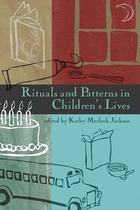 Rituals and Patterns in Children's Lives
Edited by Kathy Merlock Jackson
University of Wisconsin Press, 2005 Trick-or-treating. Flower girls. Bedtime stories. Bar and bat mitvah. In a nation of increasing ethnic, familial, and technological complexity, the patterns of children's lives both persist and evolve. This book considers how such events shape identity and transmit cultural norms, asking such questions as:
* How do immigrant families negotiate between old traditions and new?
* What does it mean when children engage in ritual insults and sick jokes?
* How does playing with dolls reflect and construct feelings of racial identity?
* Whatever happened to the practice of going to the Saturday matinee to see a Western?
* What does it mean for a child to be (in the words of one bride) "flower-girl material"? How does that role
cement a girl's bond to her family and initiate her into society?
* What is the function of masks and costumes, and why do children yearn for these accoutrements of disguise?
Rituals and Patterns in Children's Lives suggests the manifold ways in which America's children come to know their society and themselves.
 Rituals and Sisterhoods: Single Women's Households in Mexico, 1560–1750
Amos Megged
University Press of Colorado, 2019 Rituals and Sisterhoods reveals the previously under-studied world of plebeian single women and single-female-headed households in colonial Mexican urban centers. Focusing on the lower echelons of society, Amos Megged considers why some commoner women remained single and established their own female-headed households, examining their unique discourses and self-representations from various angles.
Megged analyzes these women’s life stories recorded during the Spanish Inquisition, as well as wills and bequests, petitions, parish records, and private letters that describe—in their own words—how they exercised agency in male-dominated and religious spaces. Translations of select documents and accompanying analysis illustrate the conditions in which women dissolved their marriages, remained in long-lasting extramarital cohabitations, and formed female-led households and “sisterhoods” of their own. Megged provides evidence that single women in colonial Mexico played a far more active and central role in economic systems, social organizations, cults, and political activism than has been previously thought, creating spaces for themselves in which they could initiate and maintain autonomy and values distinct from those of elite society.
The institutionalization of female-headed households in mid-colonial Mexico had wide-ranging repercussions and effects on general societal values. Rituals and Sisterhoods details the particular relevance of these changes to the history of emotions, sexuality, gender concepts, perceptions of marriage, life choices, and views of honor and shame in colonial society. This book will be of significant interest to students and scholars of colonial Latin American history, the history of Early Modern Spain and Europe, and gender and women’s studies.
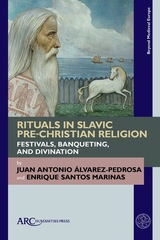 Rituals in Slavic Pre-Christian Religion: Festivals, Banqueting, and Divination
Juan Antonio Álvarez-Pedrosa
Arc Humanities Press, 2023
The authors comprehensively analyze all the available information regarding the ritual practices of Slavic pre-Christian religion that can be found in written medieval texts. After investigating every kind of reference to such practices, they offer a reconstruction of Slavic pre-Christian religion on the basis of these medieval testimonies. In doing so, they overcome the challenges presented by the fact that all of these sources are indirect, since the Slavs did not acquire literacy until they became Christians. Thus the writers of these texts mostly professed a monotheistic religion, being Christians and in some cases Muslims. The picture that they offer is biased and determined by their own faith. The present analysis innovatively combines testimonies from every Slavic area (Eastern, Western, and Southern), showing their mutual correspondences and emphasizing the relationship between the Slavic pre-Christian religion and its Indo-European roots.
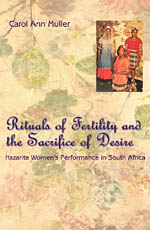 Rituals of Fertility and the Sacrifice of Desire: Nazarite Women's Performance in South Africa
Carol Ann Muller
University of Chicago Press, 1999 With close to one million members, the Church of the Nazarites (ibandla lamaNazaretha) is one of the most popular indigenous religious communities in South Africa. Founded in 1910 by Isaiah Shembe, it offers South Africans—particularly disadvantaged black women and girls—a way to remake and reconnect to ancient sacred traditions disrupted by colonialism and apartheid. Ethnomusicologist Carol Muller explores the everyday lives of Nazarite women through their religious songs and dances, dream narratives, and fertility rituals, which come to life both musically and visually on CD-ROM.
Against the backdrop of South Africa's turbulent history, Muller shows how Shembe's ideas of female ritual purity developed as a response to a regime and culture that pushed all things associated with women, cultural expression, and Africanness to the margins.
Carol Muller breaks new ground in the study of this changing region and along the way includes fascinating details of her own poignant journey, as a young, white South African woman, to the "other" side of a divided society.
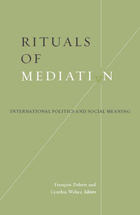 Rituals Of Mediation: International Politics And Social Meaning
Francois Debrix
University of Minnesota Press, 2003 A timely consideration of the meaning of transnational cultural interactions today In an era of increasing globalization, the cultural and the international have borders as permeable as most nations’s—and an understanding of one requires making sense of the other. Foregrounding the role of mediation—understood here as a site of representation, transformation, and pluralization—the authors engage two specific questions: How might we make theoretical and practical sense of transnational cultural interactions? And how are we to understand the ways in which the sites of mediation represent, transform, and remediate internationals? Accordingly, the authors consider international issues like security, development, political activism, and the war against terrorism through the lens of cultural practices such as traveling through airports, exhibiting art and photography, logging on to the Internet, and spinning news stories. Contributors: Robin Brown, U of Leeds; David Campbell, U of Newcastle upon Tyne; Michael Dillon, U of Lancaster; Debbie Lisle, Queen’s U, Belfast; Moya Lloyd, Queen’s U, Belfast; Timothy W. Luke, Virginia Polytechnic Institute and State U; Patricia L. Price, Florida International U; Jayne Rodgers, U of Leeds; Marysia Zalewski, Queen’s U, Belfast.
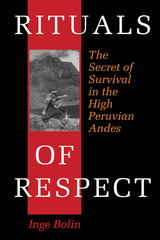 Rituals of Respect: The Secret of Survival in the High Peruvian Andes
By Inge Bolin
University of Texas Press, 1998 "In the remoteness of their mountain retreat, the herders of Chillihuani, Peru, recognize that respect for others is the central and most significant element of all thought and action," observes Inge Bolin. "Without respect, no society, no civilization, can flourish for long. Without respect, humanity is doomed and so is the earth, sustainer of all life." In this beautifully written ethnography, Bolin describes the rituals of respect that maintain harmonious relations among people, the natural world, and the realm of the gods in an isolated Andean community of llama and alpaca herders that reaches up to 16,500 feet. Bolin was the first foreigner to visit Chillihuani, and she was permitted to participate in private family rituals, as well as public ceremonies. In turn, she allows the villagers to explain the meaning of their rituals in their own words. From these first-hand experiences, Bolin offers an intimate portrait of an annual ritual cycle that dates back to Inca and pre-Inca times, including the ancient Pukllay; weddings; the Fiesta de Santiago, with its horse races on the top of the world; and Peru's Independence Day, when the Rituals of Respect for elders and young people alike are carried out within male and female hierarchies reminiscent of Inca times.
Rituals of Self-Revelation: Shishōsetsu as Literary Genre and Socio-Cultural Phenomenon
Irmela Hijiya-Kirschnerei
Harvard University Press, 1996 Irmela Hijiya-Kirschnereit brings a sophisticated and graceful method of analysis to this English translation of her book on the shishōsetsu, one of the most important yet misunderstood genres in Japanese literature. Thorough and insightful, this study of the Japanese version of the I-novel provides a means of researching and interpreting the tradition of the genre, linking it to forms of autobiographical fiction as well as to cultural assumptions of the classical period of Japanese history. Hijiya-Kirschnereit provides a model of systematic inquiry into literary traditions that will stimulate American and English Japanologists, providing a much-needed bridge between German Japanologists and the rest of the field.
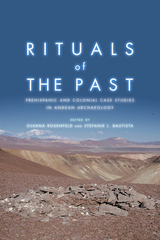 Rituals of the Past: Prehispanic and Colonial Case Studies in Andean Archaeology
Silvana Rosenfeld
University Press of Colorado, 2017 Rituals of the Past explores the various approaches archaeologists use to identify ritual in the material record and discusses the influence ritual had on the formation, reproduction, and transformation of community life in past Andean societies. A diverse group of established and rising scholars from across the globe investigates how ritual influenced, permeated, and altered political authority, economic production, shamanic practice, landscape cognition, and religion in the Andes over a period of three thousand years. Contributors deal with theoretical and methodological concerns including non-human and human agency; the development and maintenance of political and religious authority, ideology, cosmologies, and social memory; and relationships with ritual action. The authors use a diverse array of archaeological, ethnographic, and linguistic data and historical documents to demonstrate the role ritual played in prehispanic, colonial, and post-colonial Andean societies throughout the regions of Peru, Chile, Bolivia, and Argentina. By providing a diachronic and widely regional perspective, Rituals of the Past shows how ritual is vital to understanding many aspects of the formation, reproduction, and change of past lifeways in Andean societies. Contributors: Sarah Abraham, Carlos Angiorama, Florencia Avila, Camila Capriata Estrada, David Chicoine, Daniel Contreras, Matthew Edwards, Francesca Fernandini, Matthew Helmer, Hugo Ikehara, Enrique Lopez-Hurtado, Jerry Moore, Axel Nielsen, Yoshio Onuki, John Rick, Mario Ruales, Koichiro Shibata, Hendrik Van Gijseghem, Rafael Vega-Centeno, Verity Whalen
 Ritwik Ghatak: Occasional Essays for a 100th Birthday
Edited by Gayatri Chakravorty Spivak and Surya Parekh
Seagull Books, 2025 A bold, transnational interpretation of Ritwik Ghatak’s cinema that invites readers to encounter his films as meditations on history, migration, and collective survival.
The cinema of Ritwik Ghatak (1925–76) continues to resonate across borders and generations. His films—largely shaped by the 1947 Partition of Bengal and the experience of displacement—probe the fractured human condition through bold formal experimentation, unforgettable soundscapes, and a profound sense of myth and memory. Though his body of work was modest in size, Ghatak’s influence has steadily expanded, securing his place as a major figure in world cinema. This distinctive volume, which marks the centenary of this visionary filmmaker, gathers essays by important scholars and thinkers from around the world.
Moving beyond conventional film criticism and area studies, the collection stages new, transnational encounters with Ghatak’s films—approaching them as world texts, as sonic and visual experiments, and as meditations on migration, collectivity, and social existence.
The Rival
Sara Wallace
University of Utah Press, 2015 Winner of the Agha Shahid Ali Poetry Prize
In The Rival, Sara Wallace takes her readers on an intimate journey through a woman’s solitary, surreal rural childhood and her brutal, sexually fraught first marriage to the conflicted redemption she finds in motherhood and a second chance at love. In this debut poetry collection, Wallace reveals how closely emotional devastation and transcendence can coexist. The Rival is sensuous, darkly humorous, and frequently luminous in its unflinching exploration of the inner life.
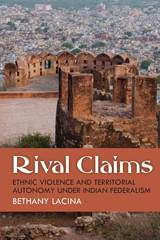 Rival Claims: Ethnic Violence and Territorial Autonomy under Indian Federalism
Bethany Lacina
University of Michigan Press, 2017 In this study of struggles for ethnoterritorial autonomy, Bethany Lacina explains regional elites’ decision whether or not to fight for autonomy, and the central government’s response to this decision. In India, the prime minister’s respective electoral ties to separate, rival regional interests determine whether ethnoterritorial demands occur and whether they are repressed or accommodated.
Using new data on ethnicity and sub-national discrimination in India, national and state archives, parliamentary records, cross-national analysis and her original fieldwork, Lacina explains ethnoterritorial politics as a three-sided interaction of the center and rival interests in the periphery. Ethnic entrepreneurs use militancy to create national political pressure in favor of their goals when the prime minister lacks clear electoral reasons to court one regional group over another. Second, ethnic groups rarely win autonomy or mobilize for violence in regions home to electorally influential anti-autonomy interests. Third, when a regional ethnic majority is politically important to the prime minister, its leaders can deter autonomy demands within their borders, while actively discriminating against minorities.
Rival Claims challenges the conventional beliefs that territorial autonomy demands are a reaction to centralized power and that governments resist autonomy to preserve central prerogatives. The center has allegiances in regional politics, and ethnoterritorial violence reflects the center’s entanglement with rival interests in the periphery.
 Rival Empires of Trade in the Orient, 1600-1800
Holden Furber
University of Minnesota Press, 1978
Rival Empires of Trade in the Orient, 1600-1800 was first published in 1976. Minnesota Archive Editions uses digital technology to make long-unavailable books once again accessible, and are published unaltered from the original University of Minnesota Press editions.
This volume presents an account of European expansion in Asia through the seventeenth and eighteenth centuries - the story of the rivalries of the East India companies and the growth of British maritime dominance which forged the Pax Britannica destined to keep Asia under European control until 1941. The author explains that it is called Rival Empires of Trade in the Orient because the few thousands of Europeans who built these empires thought of themselves primarily as merchants rather than as rulers.
The book consists of two parts, the first, narrative, the second, interpretive. The story of European commercial activity in the East is told in three chapters, the first ending with the Dutch conquest of Ceylon in 1656 and the reorganization and revival of the English East India Company as a permanent joint stock company under Oliver Cromwell's charter of 1657. The second chapter ends with the European peace settlement at Utrecht in 1713, and the third with the establishment of British preponderance in the East India trade at the close of the eighteenth century.
In the second part the author discusses the organization and structure of East India companies, the commodities in East India trade, the nature, growth, and development of the "country trade," and the relations between Europeans and Asians with some reference to the growth of European knowledge of Asia and the influence of the European presence in Asia on social history in both Asia and Europe.
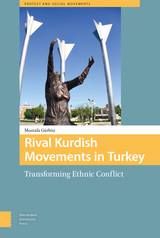 Rival Kurdish Movements in Turkey: Transforming Ethnic Conflict
Mustafa Gürbüz
Amsterdam University Press, 2016 This book explores the conditions that encourage non-violent civic engagement in emerging civil societies. Gürbüz examines the radical transformations over the past decade in the politics of Turkey's Kurdish minority. On the eve of the new millennium, the Turkish state was still openly denying the existence of Kurds, calling them "mountain Turks," and Kurdish populated cities were ruled under martial law. Kurdish politics in Turkey was dominated by a revolutionary movement, the PKK, which engaged in violent clashes with the state. Less than a decade later, the PKK's rebellion had all but ended, and Kurdish political and civic movements of numerous stripes had emerged. The Turkish state even introduced an official Kurdish-language TV channel. How did this rapid change occur? Gürbüz proposes that contending social movements has transformed the politics of the region, ushering in an era of post-conflict political and cultural competition.
 Rival Partners: How Taiwanese Entrepreneurs and Guangdong Officials Forged the China Development Model
Wu Jieh-Min
Harvard University Press, 2022 Taiwan has been depicted as an island facing the incessant threat of forcible unification with the People's Republic of China. Why, then, has Taiwan spent more than three decades pouring capital and talent into China?
In award-winning Rival Partners, Wu Jieh-min follows the development of Taiwanese enterprises in China over twenty-five years and provides fresh insights. The geopolitical shift in Asia beginning in the 1970s and the global restructuring of value chains since the 1980s created strong incentives for Taiwanese entrepreneurs to rush into China despite high political risks and insecure property rights. Taiwanese investment, in conjunction with Hong Kong capital, laid the foundation for the world’s factory to flourish in the southern province of Guangdong, but official Chinese narratives play down Taiwan’s vital contribution. It is hard to imagine the Guangdong model without Taiwanese investment, and, without the Guangdong model, China’s rise could not have occurred. Going beyond the received wisdom of the “China miracle” and “Taiwan factor,” Wu delineates how Taiwanese businesspeople, with the cooperation of local officials, ushered global capitalism into China. By partnering with its political archrival, Taiwan has benefited enormously, while helping to cultivate an economic superpower that increasingly exerts its influence around the world.
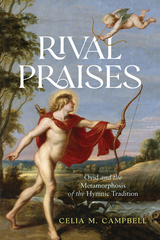 Rival Praises: Ovid and the Metamorphosis of the Hymnic Tradition
Celia M. Campbell
University of Wisconsin Press, 2024 The Metamorphoses, written by the Roman poet Ovid, has fascinated readers ever since it was written in the first century CE, and here Celia M. Campbell offers a bold new interpretive approach. Reasserting the significance of the ancient hymnic tradition, she argues that the first pentad of Ovid’s Metamorphoses draws a programmatic strain of influence from hymns to the gods, in particular conversation—and competition—with the work of the Alexandrian poet Callimachus, a favored source of inspiration to Augustan writers. She suggests that Ovid read Callimachus’ six hymns as a self-conscious set—and reading the first five books of the Metamorphoses through Callimachus’ hymnic collection allows us to pierce the occasionally opaque and seemingly idiosyncratic mythology Ovid constructs. Through careful, innovative close readings, Campbell illustrates that Callimachus and the hymnic tradition provide a kind of interpretative key to unlocking the dynamic landscape of divine power in Ovid’s poetic cosmos.
Rival Views of Market Society and Other Recent Essays
Albert O. Hirschman
Harvard University Press, 1992 Since the mid-twentieth century Albert O. Hirschman has been known for his innovative, lucid, and brilliantly argued contributions to economics, the history of ideas, and the social sciences. Two central and already widely admired essays in this collection explore new territory. The title essay distinguishes among four very different conceptions of the characteristics and dynamics of capitalist societies. A related plea for embracing complexity is made in “Against Parsimony,” a wide-ranging critique of traditional economic models. In other writings Hirschman revisits his own views on economic development, the concept of interest, and the roles of “exit” and “voice” in economic and social systems. This volume reaffirms the powerful originality and enduring value of Hirschman’s work.
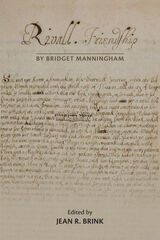 Rivall Friendship, by Bridget Manningham
Edited by Jean R. Brink
Arizona Center for Medieval and Renaissance Studies, 2021 The manuscript for Rivall Friendship was first acquired by the Newberry Library in 1937. At the time of the acquisition, the author of this seventeenth-century romance was anonymous. Scholar Jean R. Brink now suggests, based on dating of the manuscript and her analysis of its feminist themes, that the author was a woman. Specifically, Brink attributes the text to Bridget Manningham, who was the older sister of Thomas Manningham, a Jacobean and Caroline bishop, and the granddaughter of John Manningham, a diarist who recorded performances of Shakespeare’s plays. Rivall Friendship is a post–English Civil War romance that examines proto-feminist issues, such as patriarchal dominance in the family and marriage. Manningham is scrupulous about maintaining verisimilitude, and unlike more fantastical romances of the period that feature monsters, giants, and magic, this text aspires to a level of probability in its historical and geographical details. The text of Rivall Friendship is accessible to most modern readers, particularly to students and scholars accustomed to working with seventeenth-century texts.
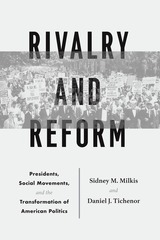 Rivalry and Reform: Presidents, Social Movements, and the Transformation of American Politics
Sidney M. Milkis and Daniel J. Tichenor
University of Chicago Press, 2019 Few relationships have proved more pivotal in changing the course of American politics than those between presidents and social movements. For all their differences, both presidents and social movements are driven by a desire to recast the political system, often pursuing rival agendas that set them on a collision course. Even when their interests converge, these two actors often compete to control the timing and conditions of political change. During rare historical moments, however, presidents and social movements forged partnerships that profoundly recast American politics.
Rivalry and Reform explores the relationship between presidents and social movements throughout history and into the present day, revealing the patterns that emerge from the epic battles and uneasy partnerships that have profoundly shaped reform. Through a series of case studies, including Abraham Lincoln and abolitionism, Lyndon Johnson and the civil rights movement, and Ronald Reagan and the religious right, Sidney M. Milkis and Daniel J. Tichenor argue persuasively that major political change usually reflects neither a top-down nor bottom-up strategy but a crucial interplay between the two. Savvy leaders, the authors show, use social movements to support their policy goals. At the same time, the most successful social movements target the president as either a source of powerful support or the center of opposition. The book concludes with a consideration of Barack Obama’s approach to contemporary social movements such as Black Lives Matter, United We Dream, and Marriage Equality.
Rivals: Legendary Matchups That Made Sports History
David K. Wiggins
University of Arkansas Press, 2010 The sixteen original essays in this collection cover influential and famous rivalries from a variety of sports, including track and field, golf, boxing, basketball, tennis, ice skating, baseball, football, soccer, and more. The essays are diverse, but together they illustrate what is common to any rivalry: equally matched opponents that often have decidedly different backgrounds, styles, and personalities. These differences may center on race and culture, political and societal ideologies, personality, geography, or religion—a mix intensified by fans and the media. From highly publicized and emotionally charged individual competitions to bitterly fought team contests, Rivals illuminates what one-of-a-kind opponents and the passion they inspire tell us about ourselves and our society.
Rivāyat-i Hēmīt-i Ašawahistān: A Study in Zoroastrian Law
Nezhat Safa-Isfehani
Harvard University Press, 1980 The present work is the only complete translation into English of a Middle Persian text written about 955 A.D. which tells us about the legal problems of Zoroastrians living in Iran under Muslim rule. The form of the book is a series of dogmatic questions and answers which present a kind of compilation of Zoroastrian religious, social, and civil laws. The dialogue comprises some of the rules and institutions which grew out of and were intimately connected with the Zoroastrian religion that dominated Persian life and thought during the Sasanian era and also the period immediately following the advent of Islam.
Nezhat Safa-Isfehani has carefully compared other juridical works in Pahlavi with the present text and has taken into account studies on the present Rivāyat made by other scholars.
 River and Society in Northern Italy: The Po Valley, 500-1000 AD
Marco Panato
Amsterdam University Press, 2024 This book considers for the first time the relationship between the river environment and the economic and political structures of northern Italy in the post-Roman period. Through the study of the relationship between river and society over time, it shows how the Carolingian conquest and other major political events in northern Italy did not seem to introduce radical changes in the daily life or broad economic systems. In fact, ecological circuits, local networks, family strategies and monastic policies seem to have been equal factors that shaped the relationship between river and society.
This monograph offers an innovative approach to the study of the early Middle Ages, integrating social sciences, historical records, archaeological and geoenvironmental data analyses to overcome the lack of written and material sources. These new integrated perspectives on the post-Roman world shed light on the relationship between humans and their environment and on the social complexity of the riverscape, topics not yet fully investigated in the historiographical debate.
The River and the Railroad: An Archaeological History of Reno
Mary Ringhoff
University of Nevada Press, 2011 When the City of Reno decided at the beginning of this century to create a trench to lower the railroad tracks that ran through its center, archaeologists associated with the ReTRAC (Reno Transportation Rail Access Corridor) project had a unique opportunity to explore the evidence of thousands of years of human history locked beneath downtown’s busy streets. The River and the Railroad traces the people and events that shaped the city, incorporating archaeological findings to add a more tangible physical dimension to the known history. It offers fascinating insights into the lives of many different people from Reno’s past and helps to correct some common misperceptions about the history of the American West.
River Cities, City Rivers
Thaïsa Way
Harvard University Press Cities have been built alongside rivers throughout history. These rivers can shape a city’s success or cause its destruction. At the same time, city-building reshapes rivers and their landscapes. Cities have harnessed, modified, and engineered rivers, altering ecologies and creating new landscapes in the process of urbanization. Rivers are also shaped by the development of cities as urban landscapes, just as the cities are shaped by their relationship to the river.
In the river city, the city river is a dynamic contributor to the urban landscape with its flow of urban economies, geographies, and cultures. Yet we have rarely given these urban landscapes their due. Building on emerging interest in the resilience of cities, this book and the original symposium consider river cities and city rivers to explore how histories have shaped the present and how they might inform our visions of the future.
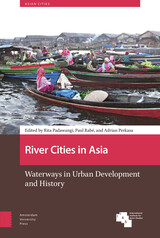 River Cities in Asia: Waterways in Urban Development and History
Rita Padawangi
Amsterdam University Press, 2022 River Cities in Asia uncovers the intimate relationship between rivers and cities in Asia from a multi-disciplinary perspective in the humanities and the social sciences. As rivers have shaped human settlement patterns, economies, culture and rituals, so too have humans impacted the flow and health of rivers. In Asia, the sheer scale of urbanization increases the urgency of addressing challenges facing urban rivers, leading to the importance of historically, socially, and culturally relevant solutions. However, cities are also uneven landscapes of power, affecting chances to achieve holistic ecological approaches. The central premise of River Cities in Asia is that a “river city” is one where proximity between a river and a city exists across time and space, natural and social dimensions. Recognition of these deep connections can help to better contextualize policy solutions aimed at rivers and their ecologies, including human life.
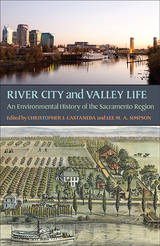 River City and Valley Life: An Environmental History of the Sacramento Region
Christopher J. Castaneda
University of Pittsburgh Press, 2013 Often referred to as “the Big Tomato,” Sacramento is a city whose makeup is significantly more complex than its agriculture-based sobriquet implies. In River City and Valley Life, seventeen contributors reveal the major transformations to the natural and built environment that have shaped Sacramento and its suburbs, residents, politics, and economics throughout its history.
The site that would become Sacramento was settled in 1839, when Johann Augustus Sutter attempted to convert his Mexican land grant into New Helvetia (or “New Switzerland”). It was at Sutter’s sawmill fifty miles to the east that gold was first discovered, leading to the California Gold Rush of 1849. Nearly overnight, Sacramento became a boomtown, and cityhood followed in 1850.
Ideally situated at the confluence of the American and Sacramento Rivers, the city was connected by waterway to San Francisco and the surrounding region. Combined with the area’s warm and sunny climate, the rivers provided the necessary water supply for agriculture to flourish. The devastation wrought by floods and cholera, however, took a huge toll on early populations and led to the construction of an extensive levee system that raised the downtown street level to combat flooding. Great fortune came when local entrepreneurs built the Central Pacific Railroad, and in 1869 it connected with the Union Pacific Railroad to form the first transcontinental passage. Sacramento soon became an industrial hub and major food-processing center. By 1879, it was named the state capital and seat of government.
In the twentieth century, the Sacramento area benefitted from the federal government’s major investment in the construction and operation of three military bases and other regional public works projects. Rapid suburbanization followed along with the building of highways, bridges, schools, parks, hydroelectric dams, and the Rancho Seco nuclear power plant, which activists would later shut down. Today, several tribal gaming resorts attract patrons to the area, while “Old Sacramento” revitalizes the original downtown as it celebrates Sacramento’s pioneering past.
This environmental history of Sacramento provides a compelling case study of urban and suburban development in California and the American West. As the contributors show, Sacramento has seen its landscape both ravaged and reborn. As blighted areas, rail yards, and riverfronts have been reclaimed, and parks and green spaces created and expanded, Sacramento’s identity continues to evolve. As it moves beyond its Gold Rush, Transcontinental Railroad, and government-town heritage, Sacramento remains a city and region deeply rooted in its natural environment.
 River Crossings: Contemporary Art Comes Home
Jason Rosenfeld
The Artist Book Foundation, 2015 In a unique and groundbreaking 2015 presentation of important contemporary art rarely seen in the traditional environs of the Hudson River Valley, the Thomas Cole National Historic Site and Olana, Frederic Edwin Church’s Persian-inspired mansion, showcased the work of contemporary American artists such as Chuck Close, Cindy Sherman, Maya Lin, Martin Puryear, and Gregory Crewdson, some of the 30 artists featured in the exhibition. Stephen Hannock, celebrated Luminist painter and one of the exhibition’s co-curators, stated that “this is a terrific opportunity to open up contemporary art, as well as these historic properties, to audiences who will see firsthand these shared artistic concerns.”
The works of art selected for the exhibition were shown at the two venues to encourage visitors to experience both of the distinguished properties and the grandeur of their surroundings, and to present a complete overview and understanding of these contemporary works in a location where many art historians believe American art was born. The accompanying publication, River Crossings: Contemporary Art Comes Home, provides readers with a lavish record of this extraordinary and innovative exhibition, and offers unique and highly informative perspectives on the continuity of the American artistic tradition in two of the nation’s most historic sites.
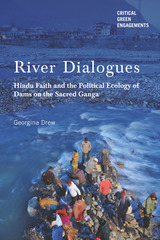 River Dialogues: Hindu Faith and the Political Ecology of Dams on the Sacred Ganga
Georgina Drew
University of Arizona Press, 2017 India’s sacred Ganga River is arguably one of the most iconic sites for worship, with a continuity of rituals for the living and the dead that span over two millennia. Along the river, from high in the Himalaya to the vast plains below, people gather daily to worship the Ganga through prayer and song. But large government-sponsored dams threaten to upend these practices. In River Dialogues, Georgina Drew offers a detailed ethnographic engagement with the social movements contesting hydroelectric development on the Ganga. The book examines the complexity of the cultural politics that, on the one hand, succeeded in influencing an unprecedented reversal of government plans for three contested hydroelectric projects, and how, on the other hand, this decision sparked ripples of discontent after being paired with the declaration of a conservation zone where the projects were situated. The book follows the work of women who were initially involved in efforts to stop the disputed projects. After looking to their discourses and actions, Drew argues for the use of a political ecology analysis that incorporates the everyday practice and everyday religious connections that animated the cultural politics of development. Drew offers a nuanced understanding of the struggles that communities enact to assert their ways of knowing and caring for resources that serves as an example for others critically engaging with the growing global advocacy of the “green economy” model for environmental stewardship.
River Fever: Adventures on the Mississippi, 1969-1972
Will Bagley
Signature Books, 2019 Beginning in the spring of 1969, Huckleberry Finn inspired a question: Could you build a raft, float down the Mississippi River to New Orleans, and on the way learn something about America and its peoples? Will Bagley, a vagrant longhair and future prize-winning western historian, and his friends could, and did. Now, a half century after the adventure, Bagley tells his story.
River Flowing From The Sunrise: An Environmental History of the Lower San Juan
James M. Aton and Robert S. McPherson
Utah State University Press, 2000 The authors recount twelve millennia of history along the lower San Juan River, much of it the story of mostly unsuccessful human attempts to make a living from the river's arid and fickle environment. From the Anasazi to government dam builders, from Navajo to Mormon herders and farmers, from scientific explorers to busted miners, the San Juan has attracted more attention and fueled more hopes than such a remote, unpromising, and muddy stream would seem to merit.
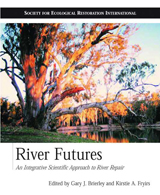 River Futures: An Integrative Scientific Approach to River Repair
Edited by Gary J. Brierley and Kirstie A. Fryirs
Island Press, 2008 Across much of the industrialized world, rivers that were physically transformed and ecologically ruined to facilitate industrial and agricultural development are now the focus of restoration and rehabilitation efforts. River Futures discusses the emergence of this new era of river repair and documents a comprehensive biophysical framework for river science and management. The book considers what can be done to maximize prospects for improving river health while maintaining or enhancing the provision of ecosystem services over the next fifty to one-hundred years. It provides a holistic overview of considerations that underpin the use of science in river management, emphasizing cross-disciplinary understanding that builds on a landscape template. The book - frames the development of integrative river science and its application to river rehabilitation programs
- develops a coherent set of guiding principles with which to approach integrative river science
- considers the application of cross-disciplinary thinking in river rehabilitation experiences from around the world
- examines the crossover between science and management, outlining issues that must be addressed to promote healthier river futures
Case studies explore practical applications in different parts of the world, highlighting approaches to the use of integrative river science, measures of success, and steps that could be taken to improve performance in future efforts. River Futures offers a positive, practical, and constructive focus that directly addresses the major challenge of a new era of river conservation and rehabilitation—that of bringing together the diverse and typically discipline-bound sets of knowledge and practices that are involved in repairing rivers. It is a valuable resource for anyone involved in river restoration and management, including restorationists, scientists, managers, and policymakers, as well as undergraduate and graduate students.
The River Gods
Brian Kiteley
University of Alabama Press, 2009 The River Gods is a novel in fragments, a mix of fact and fiction, in which various inhabitants of the area around what is now Northampton, Massachusetts, from the eleventh century through the 1990s, speak of their lives and of the community, a place haunted by the pervasive melancholy of extinguished desire.
Each of the voices--including a character named Brian Kiteley and his family, the original Native American inhabitants, the actor Richard Burton, Sojourner Truth, Richard Nixon, Ludwig Wittgenstein, Jonathan Edwards, and many nameless others--ruminate on a past that is startlingly present and tangible. The main character, though, is the world of Northampton, irrevocably woven into the fabric of Western history, yet still grounded by the everyday concerns of health, money, food, love, and family. It is a novel of voices, the living and the dead, that illuminate the passage of time.
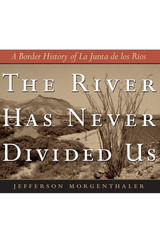 The River Has Never Divided Us: A Border History of La Junta de los Rios
By Jefferson Morgenthaler
University of Texas Press, 2004 Winner, William P. Clements Prize, Best Non-Fiction Book on Southwestern America, 2004 Not quite the United States and not quite Mexico, La Junta de los Rios straddles the border between Texas and Chihuahua, occupying the basin formed by the conjunction of the Rio Grande and the Rio Conchos. It is one of the oldest continuously inhabited settlements in the Chihuahuan Desert, ranking in age and dignity with the Anasazi pueblos of New Mexico. In the first comprehensive history of the region, Jefferson Morgenthaler traces the history of La Junta de los Rios from the formation of the Mexico-Texas border in the mid-19th century to the 1997 ambush shooting of teenage goatherd Esquiel Hernandez by U.S. Marines performing drug interdiction in El Polvo, Texas. "Though it is scores of miles from a major highway, I found natives, soldiers, rebels, bandidos, heroes, scoundrels, drug lords, scalp hunters, medal winners, and mystics," writes Morgenthaler. "I found love, tragedy, struggle, and stories that have never been told." In telling the turbulent history of this remote valley oasis, he examines the consequences of a national border running through a community older than the invisible line that divides it.
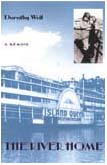 The River Home: A Memoir
Dorothy Weil
Ohio University Press, 2001 The death of her father begins Dorothy Weil’s search for what causes the family’s “spinning of in all directions like the pieces of Chaos.” She embarks on a river odyssey, traveling the Ohio, Missouri, and Mississippi Rivers by steamboat, towboat, and even an old-fashioned flatboat. The river brings her family back, as she records the stories of her fellow “river rats”: steamboat veterans, deckhands, captains, and cooks. The River Home takes the reader into a world few ever glimpse, that of America’s riverboats. In the fast-paced narrative, with incisive characterizations and dialogue, the author introduces us to this vivid milieu and a gallery of fascinating people. We meet her father, a “wild river man from the Kentucky hills,” her mother, “a proper girl from a Cincinnati Dutch clan,” and her brother, a fourth-generation river man, as well as the artists and academics she meets in her adult life. Weil’s voice is clear and wry, as well as poetic, bringing out both the sadness and joys of a family torn by mismatched backgrounds. Her themes speak to all: the confusion brought by family conflict, the strength of family love no matter how troubled the relationships, the mortality we all face, the importance of where we come from and where we go.
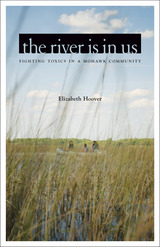 The River Is in Us: Fighting Toxics in a Mohawk Community
Elizabeth Hoover
University of Minnesota Press, 2017
Winner of the Labriola Center American Indian National Book Award 2017
Mohawk midwife Katsi Cook lives in Akwesasne, an indigenous community in upstate New York that is downwind and downstream from three Superfund sites. For years she witnessed elevated rates of miscarriages, birth defects, and cancer in her town, ultimately drawing connections between environmental contamination and these maladies. When she brought her findings to environmental health researchers, Cook sparked the United States’ first large-scale community-based participatory research project.
In The River Is in Us, author Elizabeth Hoover takes us deep into this remarkable community that has partnered with scientists and developed grassroots programs to fight the contamination of its lands and reclaim its health and culture. Through in-depth research into archives, newspapers, and public meetings, as well as numerous interviews with community members and scientists, Hoover shows the exact efforts taken by Akwesasne’s massive research project and the grassroots efforts to preserve the Native culture and lands. She also documents how contaminants have altered tribal life, including changes to the Mohawk fishing culture and the rise of diabetes in Akwesasne.
Featuring community members such as farmers, health-care providers, area leaders, and environmental specialists, while rigorously evaluating the efficacy of tribal efforts to preserve its culture and protect its health, The River Is in Us offers important lessons for improving environmental health research and health care, plus detailed insights into the struggles and methods of indigenous groups. This moving, uplifting book is an essential read for anyone interested in Native Americans, social justice, and the pollutants contaminating our food, water, and bodies.
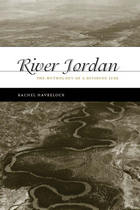 River Jordan: The Mythology of a Dividing Line
Rachel Havrelock
University of Chicago Press, 2011 As the site of several miracles in the Jewish and Christian traditions, the Jordan is one of the world’s holiest rivers. It is also the major political and symbolic border contested by Israelis and Palestinians. Combining biblical and folkloric studies with historical geography, Rachel Havrelock explores how the complex religious and mythological representations of the river have shaped the current conflict in the Middle East. Havrelock contends that the intractability of the Israeli-Palestinian conflict stems from the nationalist myths of the Hebrew Bible, where the Jordan is defined as a border of the Promised Land. Both Israelis and Palestinians claim the Jordan as a necessary boundary of an indivisible homeland. Examining the Hebrew Bible alongside ancient and modern maps of the Jordan, Havrelock chronicles the evolution of Israel’s borders based on nationalist myths while uncovering additional myths that envision Israel as a bi-national state. These other myths, she proposes, provide roadmaps for future political configurations of the nation. Ambitious and masterful in its scope, River Jordan brings a fresh, provocative perspective to the ongoing struggle in this violence-riddled region.
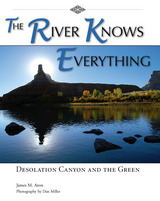 The River Knows Everything: Desolation Canyon and the Green
James M Aton
Utah State University Press, 2009 Desolation Canyon is one of the West's wild treasures. Visitors come to study, explore, run the river, and hike a canyon that is deeper at its deepest than the Grand Canyon, better preserved than most of the Colorado River system, and full of eye-catching geology-castellated ridges, dramatic walls, slickrock formations, and lovely beaches. Rafting the river, one may see wild horses, blue herons, bighorn sheep, and possibly a black bear. Signs of previous people include the newsworthy, well-preserved Fremont Indian ruins along Range Creek and rock art panels of Nine Mile Canyon, both Desolation Canyon tributaries. Historic Utes also pecked rock art, including images of graceful horses and lively locomotives, in the upper canyon. Remote and difficult to access, Desolation has a surprisingly lively history. Cattle and sheep herding, moonshine, prospecting, and hideaways brought a surprising number of settlers--ranchers, outlaws, and recluses--to the canyon.
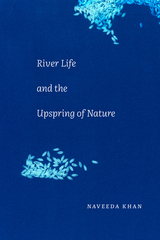 River Life and the Upspring of Nature
Naveeda Khan
Duke University Press, 2023 In River Life and the Upspring of Nature Naveeda Khan examines the relationship between nature and culture through the study of the everyday existence of chauras, the people who live on the chars (sandbars) within the Jamuna River in Bangladesh. Nature is a primary force at play within this existence as chauras live itinerantly and in flux with the ever-changing river flows; where land is here today and gone tomorrow, the quality of life itself is intertwined with this mutability. Given this centrality of nature to chaura life, Khan contends that we must think of nature not simply as the physical landscape and the plants and animals that live within it but as that which exists within the social and at the level of cognition, the unconscious, intuition, memory, embodiment, and symbolization. By showing how the alluvial flood plains configure chaura life, Khan shows how nature can both give rise to and inhabit social, political, and spiritual forms of life.
 River Life and the Upspring of Nature
Naveeda Khan
Duke University Press, 2023 In River Life and the Upspring of Nature Naveeda Khan examines the relationship between nature and culture through the study of the everyday existence of chauras, the people who live on the chars (sandbars) within the Jamuna River in Bangladesh. Nature is a primary force at play within this existence as chauras live itinerantly and in flux with the ever-changing river flows; where land is here today and gone tomorrow, the quality of life itself is intertwined with this mutability. Given this centrality of nature to chaura life, Khan contends that we must think of nature not simply as the physical landscape and the plants and animals that live within it but as that which exists within the social and at the level of cognition, the unconscious, intuition, memory, embodiment, and symbolization. By showing how the alluvial flood plains configure chaura life, Khan shows how nature can both give rise to and inhabit social, political, and spiritual forms of life.
 River Notes: A Natural and Human History of the Colorado
Wade Davis
Island Press, 2013 Plugged by no fewer than twenty-five dams, the Colorado is the world’s most regulated river drainage, providing most of the water supply of Las Vegas, Tucson, and San Diego, and much of the power and water of Los Angeles and Phoenix, cities that are home to more than 25 million people. If it ceased flowing, the water held in its reservoirs might hold out for three to four years, but after that it would be necessary to abandon most of southern California and Arizona, and much of Colorado, New Mexico, Utah and Wyoming. For the entire American Southwest the Colorado is indeed the river of life, which makes it all the more tragic and ironic that by the time it approaches its final destination, it has been reduced to a shadow upon the sand, its delta dry and deserted, its flow a toxic trickle seeping into the sea.
In this remarkable blend of history, science, and personal observation, acclaimed author Wade Davis tells the story of America’s Nile, how it once flowed freely and how human intervention has left it near exhaustion, altering the water temperature, volume, local species, and shoreline of the river Theodore Roosevelt once urged us to “leave it as it is.” Yet despite a century of human interference, Davis writes, the splendor of the Colorado lives on in the river’s remaining wild rapids, quiet pools, and sweeping canyons. The story of the Colorado River is the human quest for progress and its inevitable if unintended effects—and an opportunity to learn from past mistakes and foster the rebirth of America’s most iconic waterway.
A beautifully told story of historical adventure and natural beauty, River Notes is a fascinating journey down the river and through mankind’s complicated and destructive relationship with one of its greatest natural resources.
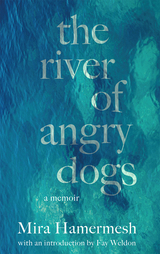 The River of Angry Dogs: A Memoir
Mira Hamermesh
Pluto Press, 2004 Mira Hamermesh is an award-winning film maker, painter and writer. This moving memoir gives a vivid account of her remarkable life.
As a young Jewish teenager Hamermesh escaped the horrors of German-occupied Poland and was spared the experience of the ghetto and the concentration camp that claimed most of her family. Mira shows how her status as a refugee has continued to influence her throughout her life. The journey led her across Europe and eventually to Palestine in 1941; her account of that region, before the establishment of Israel, provides a fascinating insight into the historical setting for today's conflict.
Having settled in London where she studied art and married, she eventually won a place at the celebrated Polish Film School in Lodz. At the height of the Cold War Mira Hamermesh commuted across the Iron Curtain – her experience of a divided Europe offers many insights into the political factors that affected people's everyday lives. Mira's theme of political conflict, so often explored in her films, is brought to life here in an intimate account that will live long in the memory.
River of Books
Donna Seaman
Prickly Paradigm Press, 2024 A memoir of reading and working with books by the renowned Booklist editor.
With the infectious curiosity of an inveterate bibliophile and the prose of a fine stylist, Donna Seaman charts the course of her early reading years in a book-by-book chronicle of the significance books have held in her life. River of Books recounts Seaman’s journey in becoming an editor for Booklist, a reviewer, an author, and a literary citizen, and lays bare how she nourished both body and soul in working with books. Seaman makes palpable the power and self-recognition that she discovered in a life dedicated to reading.
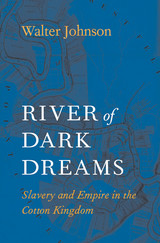 River of Dark Dreams: Slavery and Empire in the Cotton Kingdom
Walter Johnson
Harvard University Press, 2013 Winner of the SHEAR Book Prize
Honorable Mention, Avery O. Craven Award
“Few books have captured the lived experience of slavery as powerfully.”
—Ari Kelman, Times Literary Supplement
“[One] of the most impressive works of American history in many years.”
—The Nation
“An important, arguably seminal, book…Always trenchant and learned.”
—Wall Street Journal
A landmark history, by the author of National Book Critics Circle Award finalist The Broken Heart of America, that shows how slavery fueled Southern capitalism.
When Jefferson acquired the Louisiana Territory, he envisioned an “empire for liberty” populated by self-sufficient white farmers. Cleared of Native Americans and the remnants of European empires by Andrew Jackson, the Mississippi Valley was transformed instead into a booming capitalist economy commanded by wealthy planters, powered by steam engines, and dependent on the coerced labor of slaves. River of Dark Dreams places the Cotton Kingdom at the center of worldwide webs of exchange and exploitation that extended across oceans and drove an insatiable hunger for new lands. This bold reconsideration dramatically alters our understanding of American slavery and its role in U.S. expansionism, global capitalism, and the upcoming Civil War.
Walter Johnson deftly traces the connections between the planters’ pro-slavery ideology, Atlantic commodity markets, and Southern schemes for global ascendency. Using slave narratives, popular literature, legal records, and personal correspondence, he recreates the harrowing details of daily life under cotton’s dark dominion. We meet the confidence men and gamblers who made the Valley shimmer with promise, the slave dealers, steamboat captains, and merchants who supplied the markets, the planters who wrung their civilization out of the minds and bodies of their human property, and the true believers who threatened the Union by trying to expand the Cotton Kingdom on a global scale.
But at the center of the story are the enslaved people who pulled down the forests, planted the fields, picked the cotton—who labored, suffered, and resisted on the dark underside of the American dream.
“Shows how the Cotton Kingdom of the 19th-century Deep South, far from being a backward outpost of feudalism, was a dynamic engine of capitalist expansion built on enslaved labor.”
—A. O. Scott, New York Times
“River of Dark Dreams delivers spectacularly on the long-standing mission to write ‘history from the bottom up.’”
—Maya Jasanoff, New York Review of Books
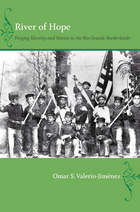 River of Hope: Forging Identity and Nation in the Rio Grande Borderlands
Omar S. Valerio-Jiménez
Duke University Press, 2012 In River of Hope, Omar S. Valerio-Jiménez examines state formation, cultural change, and the construction of identity in the lower Rio Grande region during the eighteenth and nineteenth centuries. He chronicles a history of violence resulting from multiple conquests, of resistance and accommodation to state power, and of changing ethnic and political identities. The redrawing of borders neither began nor ended the region's long history of unequal power relations. Nor did it lead residents to adopt singular colonial or national identities. Instead, their regionalism, transnational cultural practices, and kinship ties subverted state attempts to control and divide the population. Diverse influences transformed the borderlands as Spain, Mexico, and the United States competed for control of the region. Indian slaves joined Spanish society; Mexicans allied with Indians to defend river communities; Anglo Americans and Mexicans intermarried and collaborated; and women sued to confront spousal abuse and to secure divorces. Drawn into multiple conflicts along the border, Mexican nationals and Mexican Texans (tejanos) took advantage of their transnational social relations and ambiguous citizenship to escape criminal prosecution, secure political refuge, and obtain economic opportunities. To confront the racialization of their cultural practices and their increasing criminalization, tejanos claimed citizenship rights within the United States and, in the process, created a new identity. Published in cooperation with the William P. Clements Center for Southwest Studies, Southern Methodist University.
The River of Life: Sustainable Practices of Native Americans and Indigenous Peoples
Michael E. Marchand
Michigan State University Press, 2014 Sustainability defines the need for any society to live within the constraints of the land’s capacity to deliver all natural resources it consumes. To be sustainable, nature and its endowment need to be linked to human behavior, similar to the practices of indigenous peoples. The River of Life compares the general differences between Native Americans’ and the Western world’s view of resources and provides the nuts and bolts of a sustainability portfolio designed by indigenous peoples. It also introduces ideas on how to link nature and society to make sustainable choices, aiming to facilitate thinking about how to change destructive behaviors and to integrate indigenous culture into thinking and decision processes.
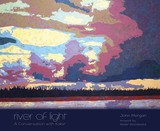 River of Light: A Conversation with Kabir
John Morgan
University of Alaska Press, 2014 Surrender to a wild river and unexpected things can happen. Time on the water can produce moments of pristine clarity or hatch wild thoughts, foster a deep connection with the real world or summon the spiritual.
River of Light: A Conversation with Kabir is centered in one man’s meditations and revelations while traveling on a river. John Morgan spent a week traveling the Copper River in Southcentral Alaska, and the resulting encounters form the heart of this book-length poem. The river’s shifting landscape enriches the poem’s meditative mood while currents shape the poem and the pacing of its lines. The mystic poet Kabir is Morgan’s internal guide and serves as a divine foil through quiet stretches that bring to mind questions about war and human nature. Artwork by distinguished Alaska artist Kesler Woodward is a sublime companion to the text.
A combination of adventurer’s tale and spiritual quest, River of Light: A Conversation with Kabir takes the reader on a soulful journey that is both deeply personal and profoundly universal.
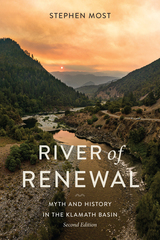 River of Renewal: Myth and History in the Klamath Basin
Stephen Most
Oregon State University Press, 2024 River of Renewal tells the remarkable story of the Klamath Basin, a region of the Pacific Northwest spanning the Oregon-California border. Indian reservations are at the headwaters, along the estuary, and across the major tributary of the Klamath River. In this place that has witnessed, since the Gold Rush, genocide, war, and conflicts over resources, myths of the West loom large, amplifying differences among inhabitants of a land united by water and divided by people. Yet when faced with ecological catastrophe, farmers, tribes, and other regional stakeholders forged a consensus that led to the largest dam removal and watershed restoration project in history.
The only history of the entire Klamath Basin, River of Renewal tells the stories of the region’s diverse communities and stakeholders, including the government agencies that manage most of its land. Based on author Stephen Most’s original research and interviews with tribal leaders, ranchers, farmers, fishermen, forest managers, and others, River of Renewal is a political as well as an environmental history, one that underscores the power of commitment to a place and the vital importance of traditional knowledge in ecological stewardship. It offers an indispensable resource for anyone who wishes to better understand the peoples of the Klamath Basin and their extraordinary accomplishment of bringing about the removal of the four hydroelectric dams that harmed their cultures, economies, and environment for a century.
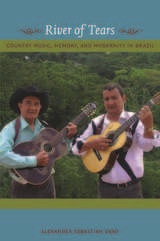 River of Tears: Country Music, Memory, and Modernity in Brazil
Alexander Sebastian Dent
Duke University Press, 2009 River of Tears is the first ethnography of Brazilian country music, one of the most popular genres in Brazil yet least-known outside it. Beginning in the mid-1980s, commercial musical duos practicing música sertaneja reached beyond their home in Brazil’s central-southern region to become national bestsellers. Rodeo events revolving around country music came to rival soccer matches in attendance. A revival of folkloric rural music called música caipira, heralded as música sertaneja’s ancestor, also took shape. And all the while, large numbers of Brazilians in the central-south were moving to cities, using music to support the claim that their Brazil was first and foremost a rural nation. Since 1998, Alexander Sebastian Dent has analyzed rural music in the state of São Paulo, interviewing and spending time with listeners, musicians, songwriters, journalists, record-company owners, and radio hosts. Dent not only describes the production and reception of this music, he also explains why the genre experienced such tremendous growth as Brazil transitioned from an era of dictatorship to a period of intense neoliberal reform. Dent argues that rural genres reflect a widespread anxiety that change has been too radical and has come too fast. In defining their music as rural, Brazil’s country musicians—whose work circulates largely in cities—are criticizing an increasingly inescapable urban life characterized by suppressed emotions and an inattentiveness to the past. Their performances evoke a river of tears flowing through a landscape of loss—of love, of life in the countryside, and of man’s connections to the natural world.
The River of the Mother of God: and other Essays by Aldo Leopold
Aldo Leopold; Edited by J. Baird Callicott and Susan L. Flader
University of Wisconsin Press, 1992 His name is inextricably linked with a single work, A Sand County Almanac, a classic of natural history literature and the conservationist's bible. This book brings together the best of Leopold's essays.
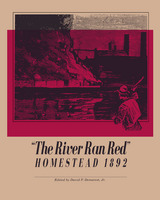 The River Ran Red
David P. Demarest
University of Pittsburgh Press, 1992 The violence that erupted at Carnegie Steel's giant Homestead mill near Pittsburgh on July 6. 1892, caused a congressional investigation and trials for treason, motivated a nearly successful assassination attempt on Frick, contributed to the defeat of President Benjamin Harrison for a second term, and changed the course of the American labor movement.
"The River Ran Red" commemorates the one-hundredth anniversary of the Homestead strike of 1892. Instead of retelling the story of the strike, it recreates the events of that summer in excerpts from contemporary newspapers and magazines, reproductions of pen-and-ink sketches and photographs made on the scene, passages from the congressional investigation that resulted from the strike, first-hand accounts by observers and participants, and poems, songs, and sermons from across the country. Contributions by outstanding scholars provide the context for understanding the social and cultural aspects of the strike, as well as its violence.
"The River Ran Red" is the collaboration of a team of writers, archivists, and historians, including Joseph Frazier Wall, who writes of the role of Andrew Carnegie at Homestead, and David Montgomery, who considers the significance of the Homestead Strike for the present. The book is both readable and richly illustrated. It recalls public and personal reactions to an event in our history who's reverberations can still be felt today.
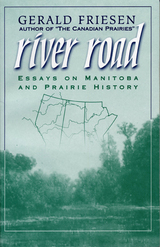 River Road: Essays on Manitoba and Prairie History
Gerald Friesen
University of Manitoba Press, 1996 The prairies are a focal point for momentous events in Canadian history, a place where two visions of Canada have often clashed: Louis Riel, the Manitoba School Question, French language rights, the 1919 Winnipeg General Strike, and the dramatic collapse of the Meech Lake Accord when MLA Elijah Harper voted “No.”Gerald Friesen believes that it is the responsibility of the historian to “tell local stories in terms and concepts that make plain their intrinsic value and worth, that explain the relationship between the past and the present.” For local experiences to have any relevant meaning, they must be put into the context of the wider world.These essays were written for the general reader and the academic historian. They include previously published works (many of them revised and updated) from a wide variety of sources, and new pieces written specifically for River Road, examining aspects of prairie and Manitoba history from many different perspectives. They offer portraits of representatives from different sides of the prairie experience, such as Bob Russell, radical socialist and leader of the 1919 General Strike, and J.H. Riddell, conservative Methodist minister who represented “sane and safe” stewardship in the 1920s and 1930s. They explore the changing relationship between Aboriginal peoples and the “dominant” society, from the prosperous Metis community that flourished along the Red River in the 19th century (and produced Manitoba’s first Metis premier) to the events that led to the Manitoba Aboriginal Justice Inquiry in the 1980s.Other essays consider new viewpoints of the prairie past, using the perspectives of ethnic and cultural history, women’s history, regional history, and labour history to raise questions of interpretation and context. The time frame considered is equally wide-ranging, from the Aboriginal and Red River society to the political arena of current constitutional debates.
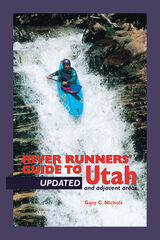 River Runners' Guide To Utah and Adjacent Areas
Gary C Nichols
University of Utah Press, 1986 A fully revised and updated edition of Gary Nichols’ widely used guide to river running in Utah. Major changes have occurred on Big and Little Cottonwood Creeks, which have many new drops with dangerous hydraulics. This edition accounts for these and other alterations in the state’s waterways over the past fifteen years. Also, several of the original river access points are now on private land. Alternative access points are presented and users are alerted to the necessity of requesting permission. All this and much more will once again make A River Runners’ Guide to Utah and Adjacent Areas the one source for vital and reliable information on more than ninety river trips for beginner and expert alike. It includes:
-Over 90 river trips with descriptions and maps
-Location of access and take-out points
-Instructions for all skill levels
-Ratings of all waterways by levels of difficulty
-Identification of danger areas and obstacles
 A River Runs through It
Norman Maclean
University of Chicago Press, 1989 From its first magnificent sentence, "In our family, there was no clear line between religion and fly fishing", to the last, "I am haunted by waters", A River Runs through It is an American classic.
Based on Norman Maclean's childhood experiences, A River Runs through It has established itself as one of the most moving stories of our time; it captivates readers with vivid descriptions of life along Montana's Big Blackfoot River and its near magical blend of fly fishing with the troubling affections of the heart.
This handsome edition is designed and illustrated by Barry Moser. There are thirteen two-color wood engravings.
"A masterpiece. . . . This is more than stunning fiction: It is a lyric record of a time and a life, shining with Maclean's special gift for calling the reader's attention to arts of all kinds—the arts that work in nature, in personality, in social intercourse, in fly-fishing."—Kenneth M. Pierce, Village Voice
"Wise, witty, wonderful, Maclean spins his tales, casts his flies, fishes the rivers and woods for what he remembers of his youth in the Rockies."—Barbara Bannon, Publishers Weekly
"Maclean's book is surely destined to be one of those rare memoirs that can be called a masterpiece. . . . Earthy, whimsical, authoritative, wise; it touches the heart without blushing and traces lasting images for the eye. . . . This book is a gem."—Nick Lyons, Fly-Fisherman
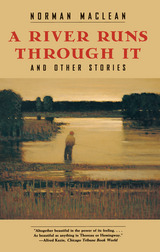 A River Runs Through It, and Other Stories
Norman Maclean
University of Chicago Press, 1976 From its first magnificent sentence, "In our family, there was no clear line between religion and fly fishing", to the last, "I am haunted by waters", A River Runs Through It is an American classic.
Based on Norman Maclean's childhood experiences, the title novella has established itself as one of the most moving stories of our time; it captivates readers with vivid descriptions of life along Montana's Big Blackfoot River and its near magical blend of fly fishing with the troubling affections of the heart.
The paperback edition is now available with an evocative new cover by acclaimed Montana painter Russell Chatham.
"A masterpiece. . . . This is more than stunning fiction: It is a lyric record of a time and a life, shining with Maclean's special gift for calling the reader's attention to arts of all kinds—the arts that work in nature, in personality, in social intercourse, in fly-fishing."—Kenneth M. Pierce, Village Voice
Norman Maclean (1902-90), woodsman, scholar, teacher, and storyteller, grew up in the Western Rocky Mountains of Montana and worked for many years in logging camps and for the United States Forestry Service before beginning his academic career. He retired from the University of Chicago in 1973.
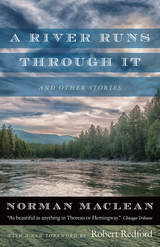 A River Runs through It and Other Stories
Norman Maclean
University of Chicago Press, 2017 When Norman Maclean sent the manuscript of A River Runs through It and Other Stories to New York publishers, he received a slew of rejections. One editor, so the story goes, replied, “it has trees in it.” Forty years later, the title novella is recognized as one of the great American tales of the twentieth century, and Maclean as one of the most beloved writers of our time. The finely distilled product of a long life of often surprising rapture—for fly-fishing, for the woods, for the interlocked beauty of life and art—A River Runs through It has established itself as a classic of the American West. This new edition will introduce a fresh audience to Maclean’s beautiful prose and understated emotional insights.
Elegantly redesigned, A River Runs through It includes a new foreword by Robert Redford, director of the Academy Award-winning 1992 film adaptation of River. Based on Maclean’s own experiences as a young man, the book’s two novellas and short story are set in the small towns and mountains of western Montana. It is a world populated with drunks, loggers, card sharks, and whores, but also one rich in the pleasures of fly-fishing, logging, cribbage, and family. By turns raunchy and elegiac, these superb tales express, in Maclean’s own words, “a little of the love I have for the earth as it goes by.”
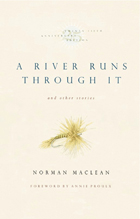 A River Runs Through It and Other Stories, Twenty-fifth Anniversary Edition
Norman Maclean
University of Chicago Press, 2001 Just as Norman Maclean writes at the end of "A River Runs through It" that he is "haunted by waters," so have readers been haunted by his novella. A retired English professor who began writing fiction at the age of 70, Maclean produced what is now recognized as one of the classic American stories of the twentieth century. Originally published in 1976, A River Runs through It and Other Stories now celebrates its twenty-fifth anniversary, marked by this new edition that includes a foreword by Annie Proulx.
Maclean grew up in the western Rocky Mountains in the first decades of the twentieth century. As a young man he worked many summers in logging camps and for the United States Forest Service. The two novellas and short story in this collection are based on his own experiences—the experiences of a young man who found that life was only a step from art in its structures and beauty. The beauty he found was in reality, and so he leaves a careful record of what it was like to work in the woods when it was still a world of horse and hand and foot, without power saws, "cats," or four-wheel drives. Populated with drunks, loggers, card sharks, and whores, and set in the small towns and surrounding trout streams and mountains of western Montana, the stories concern themselves with the complexities of fly fishing, logging, fighting forest fires, playing cribbage, and being a husband, a son, and a father.
By turns raunchy, poignant, caustic, and elegiac, these are superb tales which express, in Maclean's own words, "a little of the love I have for the earth as it goes by." A first offering from a 70-year-old writer, the basis of a top-grossing movie, and the first original fiction published by the University of Chicago Press, A River Runs through It and Other Stories has sold more than a million copies. As Proulx writes in her foreword to this new edition, "In 1990 Norman Maclean died in body, but for hundreds of thousands of readers he will live as long as fish swim and books are made."
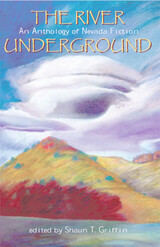 The River Underground: An Anthologyof Nevada Fiction
Shaun T. Griffin
University of Nevada Press, 2001 Few readers outside Nevada are aware of the richness and diversity of the state’s literary community, or of the number of nationally respected writers who make the state their home and often the subject matter of their work. Editor Shaun Griffin, in this compelling anthology of contemporary fiction from Nevada, makes a convincing case that the state’s wealth runs to far more than glitz and minerals.
Here we find a delightful and long-forgotten story by the doyen of Nevada writers, Robert Laxalt; a moving story by Adrian C. Louis, a Native American from Lovelock who has found national acclaim for his powerful fiction and poetry about reservation life; and excerpts from work by best-selling writers Teresa Jordan, Steven Nightingale, Douglas Unger, and Richard Wiley.
Settings range from rural Nevada to rural post-revolutionary China, from the glitz of Las Vegas to a Basque immigrant household in Carson City, from the hills of Appalachia to the Pacific during World War II. Characters include a pair of Mormon teenagers trying to escape the moral rigors of their faith, a fugitive Shoshone Indian trying to preserve the ways of his ancestors against the pressures of history, an immigrant family in Las Vegas coping with the father’s final illness, a trio of escaped prisoners bent on revenge, and an aging African American jazz musician. There is work by writers whose names are known to readers of fine fiction everywhere and work by talented newcomers.
Editor Griffin has provided for each selection a brief biographical sketch of the author and some comments on the qualities of the piece that prompted its inclusion in the anthology. As a collection of fiction, this is exciting reading—provocative, often moving, sometimes startling in its brilliance. It demonstrates unequivocally that writing, and writers, are flourishing in Nevada, and that the state’s literary community is remarkably abundant in talent, creativity, and the range of its voices and concerns.
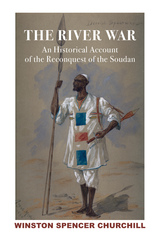 River War 2V: Historical Account of Reconquest of Soudan
Winston S. Churchill
St. Augustine's Press, 2021 Winston Churchill wrote five books before he was elected to Parliament at the age of twenty-five. The most impressive of these books, The River War tells the story of Britain’s arduous and risky campaign to reconquer the Sudan at the end of the nineteenth century. More than half a century of subjection to Egypt had ended a decade earlier when Sudanese Dervishes rebelled against foreign rule and killed Britain’s envoy Charles Gordon at his palace in Khartoum in 1885. Political Islam collided with European imperialism. Herbert Kitchener’s Anglo-Egyptian army, advancing hundreds of miles south along the Nile through the Sahara Desert, defeated the Dervish army at the battle of Omdurman on September 2, 1898.
Churchill, an ambitious young cavalry officer serving with his regiment in India, had already published newspaper columns and a book about fighting on the Afghan frontier. He yearned to join Kitchener’s campaign. But the general, afraid of what he would write about it, refused to have him. Churchill returned to London. With help from his mother and the prime minister, he managed to get himself attached to an English cavalry regiment sent to strengthen Kitchener’s army. Hurriedly travelling to Egypt, Churchill rushed upriver to Khartoum, catching up with Kitchener’s army just in time to take part in the climactic battle. That day he charged with the 21st Lancers in the most dangerous fighting against the Dervish host.
He wrote fifteen dispatches for the Morning Post in London. As Kitchener had expected, Churchill’s dispatches and his subsequent book were highly controversial. The precocious officer, having earlier seen war on two other continents, showed a cool independence of his commanding officer. He even resigned from the army to be free to write the book as he pleased. He gave Kitchener credit for his victory but found much to criticize in his character and campaign.
Churchill’s book, far from being just a military history, told the whole story of the Egyptian conquest of the Sudan and the Dervishes’ rebellion against imperial rule. The young author was remarkably even-handed, showing sympathy for the founder of the rebellion, Muhammad Ahmed, and for his successor the Khalifa Abdullahi, whom Kitchener had defeated. He considered how the war in northeast Africa affected British politics at home, fit into the geopolitical rivalry between Britain and France, and abruptly thrust the vast Sudan, with the largest territory in Africa, into an uncertain future in Britain’s orbit.
In November 1899, The River War was published in “two massive volumes, my magnum opus (up to date), upon which I had lavished a whole year of my life,” as Churchill recalled later in his autobiography. The book had twenty-six chapters, five appendices, dozens of illustrations, and colored maps. Three years later, in 1902, it was shortened to fit into one volume. Seven whole chapters, and parts of every other chapter, disappeared in the abridgment. Many maps and most illustrations were also dropped. Since then the abridged edition has been reprinted regularly, and eventually it was even abridged further. But the full two-volume book, which is rare and expensive, was never published again—until now.
St. Augustine’s Press, in collaboration with the International Churchill Society, brings back to print in two handsome volumes The River War: An Historical Account of the Reconquest of the Soudan unabridged, for the first time since 1902. Every chapter and appendix from the first edition has been restored. All the maps are in it, in their original colors, with all the illustrations by Churchill’s brother officer Angus McNeill.
More than thirty years in the making, under the editorship of James W. Muller, this new edition of The River War will be the definitive one for all time. The whole book is printed in two colors, in black and red type, to show what Churchill originally wrote and how it was abridged or altered later. For the first time, a new appendix reproduces Churchill’s Sudan dispatches as he wrote them, before they were edited by the Morning Post. Other new appendices reprint Churchill’s subsequent writings on the Sudan. Thousands of new footnotes have been added to the book by the editor, identifying Churchill’s references to people, places, writings, and events unfamiliar to readers today. Professor Muller’s new introduction explains how the book fits into Churchill’s career as a writer and an aspiring politician. He examines the statesman’s early thoughts about war, race, religion, and imperialism, which are still our political challenges in the twenty-first century.
Half a century after The River War appeared, this book was one of a handful of his works singled out by the Swedish Academy when it awarded Churchill the Nobel Prize for Literature in 1953. Now, once again, its reader can follow Churchill back to the war he fought on the Nile, beginning with the words of his youngest daughter. Before she died, Mary Soames wrote a new foreword, published here, which concludes that “In this splendid new edition…we have, in effect, the whole history of The River War as Winston Churchill wrote it—and it makes memorable reading.”
The River We Have Wrought: A History of the Upper Mississippi
John O. Anfinson
University of Minnesota Press, 2005 The River We Have Wrought is a landmark history of the upper Mississippi, from early European exploration through the completion of a navigable channel and a system of locks and dams in the mid-twentieth century. John Anfinson examines how politics has shaped the landscapes of the Upper Midwest and how taming the Mississippi River has affected economic sustainability, river ecology, and biological diversity.
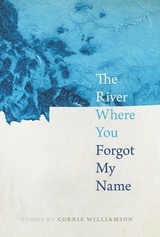 The River Where You Forgot My Name
Corrie Williamson
Southern Illinois University Press, 2019 Winner, Montana Book Award-Honor Book, 2019
The River Where You Forgot My Name travels between early 1800s Virginia and Missouri and present-day western Montana, a place where “bats sail the river of dark.” In their crosscutting, the poems in this collection reflect on American progress; technology, exploration, and environment; and the ever-changing landscape at the intersection of wilderness and civilization.
Three of the book’s five sections follow poet Corrie Williamson’s experiences while living for five years in western Montana. The remaining sections are persona poems written in the voice of Julia Hancock Clark, wife of William Clark, who she married soon after he returned from his western expedition with Meriwether Lewis. Julia lived with Clark in the then-frontier town of St. Louis until her early death in 1820. She offers a foil for the poet’s first-person Montana narrative and enriches the historical perspective of the poetry, providing a female voice to counterbalance the often male-centered discovery and frontier narrative.
The collection shines with all-too human moments of levity, tragedy, and beauty such as when Clark names a river Judith after his future wife, not knowing that everyone calls her Julia, or when the poet on a hike to Goldbug Hot Springs imagines a mercury-poisoned Lewis waking “with the dawn between his teeth.” Williamson turns a curious and critical eye on the motives and impact of expansionism, unpacking some of the darker ramifications of American hunger for land and resources. These poems combine breathtaking natural beauty with backbreaking human labor, all in the search for something that approaches grace.
 The River Wild: A Celebrated Journey Down the Whitewater Rapids of the Grand Canyon
Cecil Kuhne
University of Utah Press, 2026 The Colorado River through the Grand Canyon has a well-deserved reputation for whitewater—the feature that draws many boaters to the raging torrent amidst its spectacular chasms. This guide offers a literary guide down the river, through each rapid.
Embark on an unforgettable adventure down the mighty Colorado River in The River Wild: A Celebrated Journey down the Whitewater Rapids of the Grand Canyon. Former professional river guide Cecil Kuhne takes readers through 225 miles of towering canyon walls, surging currents, and legendary rapids that have challenged explorers for over 150 years. From the historic first descent of John Wesley Powell’s expedition to the modern thrill-seekers navigating Lava Falls, Crystal, and Hance, this book captures the heart-pounding excitement of whitewater rafting.
With vivid descriptions of the canyon’s breathtaking geology, lush flora, and abundant wildlife, Kuhne blends history, adventure, and natural beauty into an immersive journey. Whether you’re a seasoned river runner or an armchair explorer, The River Wild offers a front-row seat to one of the world’s most exhilarating river expeditions.
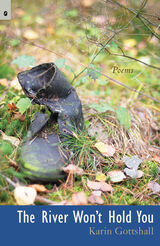 The River Won’t Hold You
Karin Gottshall
Ohio State University Press, 2014 Haunting and haunted, The River Won’t Hold You interrogates loneliness and loss with quiet insistence. In poems fashioned at the difficult intersection of imagination and experience, Karin Gottshall seeks an uneasy solace in the mysterious gaps between them: “I tell myself I can be content with the pleasures / permitted ghosts,” she writes in “Afterlife,” “but my body wakes up / leaking saltwater, and won’t let my ghost-self be.” Poetic structure and the music of language offer a seductive repository for memory, philosophy, and pain. These poems are generous in both their formal approaches and their palettes of sound and silences. But Gottshall never settles for an easy or artificial solution to the questions her poems ask; the beauty of her work comes, instead, from the directness of her gaze and the images that gaze fixes itself upon: “Wide-open, staring eyes of the tiger / I drew and had to destroy because it wouldn’t sleep.”
 Riverine Citizenship: A Bosnian City in Love with the River
Azra Hromadžic
Central European University Press, 2024 Water potential is a significant natural wealth of most parts of the Balkans, and it has given rise to a surge in hydropower investments unparalleled across Europe. As part of the process, a dam was planned to be built on the Una River, which runs through the Bosnian town of Bihać. This prospect alarmed the city’s residents, culminating in a protest in 2015. The book begins with this protest, and it explores how the threat of dam construction transformed the seemingly apolitical love of the river into a powerful political force around which thousands of people mobilized: riverine citizenship. The book is based on interviews with participants, archival research, and over twenty years of ethnographic research. Azra Hromadžić focuses on the tension between ecological sustainability efforts in favor of renewable energy, on the one hand, and citizens’ historically shaped, deeply-felt, love for the river, on the other. She shows how the language and promises of green transition can mask the forces of capitalist accumulation that drive this change — whether in the form of building hydroelectric dams or promoting eco-tourism — and thus set in motion another cycle of environmental degradation, social dispossession, and economic exploitation.
 Riverine Dreams: Away to the Glorious and Forgotten Grassland Rivers of America
George Frazier
University of Chicago Press, 2025 The inspirational story of grassland rivers—and the people who paddle and protect them.
The North American grasslands that once covered vast areas of the central United States are now our most endangered ecosystems. But not far from any spot in the grasslands is a river. Grassland rivers are as central to the story of prairies as bison and bluestem. Defined as rivers that drain prairie watersheds, these waterways are crucial to plains ecosystems and no less endangered than the grasslands surrounding them. They are also enigmatic: some are restricted by local access laws and others have simply been forgotten. In any given year, fewer than a dozen people might lay eyes on tens of thousands of miles of America’s grassland rivers. But, as environmental writer George Frazier shows, following their twists and turns is one of the best ways to experience the wild essence of the prairies.
Riverine Dreams invites us on a trip along eight grassland rivers—including the Missouri, the Niobrara, and Purgatoire—traversing their environmental and cultural histories and introducing us to the people who study, paddle, and conserve them. This journey takes Frazier across the North American interior—from Montana and Colorado to Nebraska and Missouri—where he uncovers a remarkable movement to celebrate and preserve these natural treasures: nothing less than a grassland river revival.
The first accessible introduction to these waters, Riverine Dreams is a personal exploration of the rivers that are so vital to the health of the prairies.
Rivers at Risk: Concerned Citizen's Guide To Hydropower
John D. Echeverria, Pope Barrow, and Richard Roos-Collins; American Rivers
Island Press, 1989 Rivers at Risk is an invaluable handbook that offers a practical understanding of how to influence government decisions about hydropower development on America's rivers.
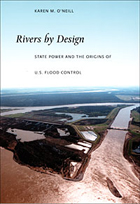 Rivers by Design: State Power and the Origins of U.S. Flood Control
Karen M. O Neill
Duke University Press, 2006 The United States has one of the largest and costliest flood control systems in the world, even though only a small proportion of its land lies in floodplains. Rivers by Design traces the emergence of the mammoth U.S. flood management system, which is overseen by the federal government but implemented in conjunction with state governments and local contractors and levee districts. Karen M. O’Neill analyzes the social origins of the flood control program, showing how the system initially developed as a response to the demands of farmers and the business elite in outlying territories. The configuration of the current system continues to reflect decisions made in the nineteenth century and early twentieth. It favors economic development at the expense of environmental concerns. O’Neill focuses on the creation of flood control programs along the lower Mississippi River and the Sacramento River, the first two rivers to receive federal flood control aid. She describes how, in the early to mid-nineteenth century, planters, shippers, and merchants from both regions campaigned for federal assistance with flood control efforts. She explains how the federal government was slowly and reluctantly drawn into water management to the extent that, over time, nearly every river in the United States was reengineered. Her narrative culminates in the passage of the national Flood Control Act of 1936, which empowered the Army Corps of Engineers to build projects for all navigable rivers in conjunction with local authorities, effectively ending nationwide, comprehensive planning for the protection of water resources.
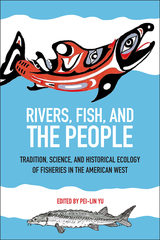 Rivers, Fish, and the People: Tradition, Science, and Historical Ecology of Fisheries in the American West
Pei-Lin Yu
University of Utah Press, 2015 America’s western rivers are under assault from development, pollution, invasive species, and climate change. Returning these eco- systems to the time of European contact is often the stated goal for restoration efforts, yet neither the influence of indigenous societ- ies on rivers at the time of contact nor the deeper evolutionary relationships are yet understood by the scientific world. This volume presents a unique synthesis of scientific discoveries and traditional knowledge about the ecology of iconic river species in the American West. Building from a foundation in fisheries biology and life history data about key species, the book reveals ancient human relationships with those species and describes time-tested Native resource management techniques, drawing from the archaeological record and original ethnographic sources. It evaluates current research trends, summarizes the conceptual foundations for the cultural and evolutionary significance of sustainable use of fish, and seeks pathways for future research. Geographic areas described include the Columbia Plateau, Idaho’s Snake River Plain, the Sacramento River Delta, and the mid-Fraser River of British Columbia. Previously unpublished information is included with the express permission and approval of tribal communities. This approach broadens and deepens the available body of data and establishes a basis for future collaboration between scientists and Native stakeholders toward mutual goals of river ecosystem health.
 Rivers for Life: Managing Water For People And Nature
Sandra Postel and Brian Richter
Island Press, 2003 The conventional approach to river protection has focused on water quality and maintaining some "minimum" flow that was thought necessary to ensure the viability of a river. In recent years, however, scientific research has underscored the idea that the ecological health of a river system depends not on a minimum amount of water at any one time but on the naturally variable quantity and timing of flows throughout the year.
In Rivers for Life, leading water experts Sandra Postel and Brian Richter explain why restoring and preserving more natural river flows are key to sustaining freshwater biodiversity and healthy river systems, and describe innovative policies, scientific approaches, and management reforms for achieving those goals. Sandra Postel and Brian Richter: explain the value of healthy rivers to human and ecosystem health; describe the ecological processes that support river ecosystems and how they have been disrupted by dams, diversions, and other alterations; consider the scientific basis for determining how much water a river needs; examine new management paradigms focused on restoring flow patterns and sustaining ecological health; assess the policy options available for managing rivers and other freshwater systems; explore building blocks for better river governance.
Sandra Postel and Brian Richter offer case studies of river management from the United States (the San Pedro, Green, and Missouri), Australia (the Brisbane), and South Africa (the Sabie), along with numerous examples of new and innovative policy approaches that are being implemented in those and other countries.
Rivers for Life presents a global perspective on the challenges of managing water for people and nature, with a concise yet comprehensive overview of the relevant science, policy, and management issues. It presents exciting and inspirational information for anyone concerned with water policy, planning and management, river conservation, freshwater biodiversity, or related topics.
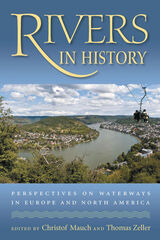 Rivers in History: Perspectives on Waterways in Europe and North America
Christof Mauch
University of Pittsburgh Press, 2008 Throughout history, rivers have run a wide course through human temporal and spiritual experience. They have demarcated mythological worlds, framed the cradle of Western civilization, and served as physical and psychological boundaries among nations. Rivers have become a crux of transportation, industry, and commerce. They have been loved as nurturing providers, nationalist symbols, and the source of romantic lore but also loathed as sites of conflict and natural disaster.
Rivers in History presents one of the first comparative histories of rivers on the continents of Europe and North America in the modern age. The contributors examine the impact of rivers on humans and, conversely, the impact of humans on rivers. They view this dynamic relationship through political, cultural, industrial, social, and ecological perspectives in national and transnational settings.
As integral sources of food and water, local and international transportation, recreation, and aesthetic beauty, rivers have dictated where cities have risen, and in times of flooding, drought, and war, where they've fallen. Modern Western civilizations have sought to control rivers by channeling them for irrigation, raising and lowering them in canal systems, and damming them for power generation.
Contributors analyze the regional, national, and international politicization of rivers, the use and treatment of waterways in urban versus rural environments, and the increasing role of international commissions in ecological and commercial legislation for the protection of river resources. Case studies include the Seine in Paris, the Mississippi, the Volga, the Rhine, and the rivers of Pittsburgh. Rivers in History is a broad environmental history of waterways that makes a major contribution to the study, preservation, and continued sustainability of rivers as vital lifelines of Western culture.
Rivers in Russian Literature
Margaret Ziolkowski
University of Delaware Press, 2011 Rivers in Russian Literature focuses on the Russian literary and folkloric treatment of five rivers—the Dnieper, Volga, Neva, Don, and Angara. Each chapter traces, within a geographical and historical context, the evolution of the literary representation of one river. Imagination may endow a river with aesthetic or spiritual qualities; ethnic, national, or racial associations; or commercial or agricultural symbolism of many kinds. Russian literary responses to these five rivers have much to tell us about the society that produced them as well as the rivers they treat.
Published by University of Delaware Press. Distributed worldwide by Rutgers University Press.
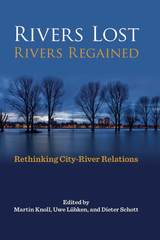 Rivers Lost, Rivers Regained: Rethinking City-River Relations
Martin Knoll
University of Pittsburgh Press, 2016 Many cities across the globe are rediscovering their rivers. After decades or even centuries of environmental decline and cultural neglect, waterfronts have been vamped up and become focal points of urban life again; hidden and covered streams have been daylighted while restoration projects have returned urban rivers in many places to a supposedly more natural state. This volume traces the complex and winding history of how cities have appropriated, lost, and regained their rivers. But rather than telling a linear story of progress, the chapters of this book highlight the ambivalence of these developments.
The four sections in Rivers Lost, Rivers Regained discuss how cities have gained control and exerted power over rivers and waterways far upstream and downstream; how rivers and floodplains in cityscapes have been transformed by urbanization and industrialization; how urban rivers have been represented in cultural manifestations, such as novels and songs; and how more recent strategies work to redefine and recreate the place of the river within the urban setting.
At the nexus between environmental, urban, and water histories, Rivers Lost, Rivers Regained points out how the urban-river relationship can serve as a prime vantage point to analyze fundamental issues of modern environmental attitudes and practices.
Rivers of Change: Essays on Early Agriculture in Eastern North America
Bruce D. Smith
University of Alabama Press, 2007 Organized into four sections, the twelve chapters of Rivers of Change are concerned with prehistoric Native American societies in eastern North America and their transition from a hunting and gathering way of life to a reliance on food production. Written at different times over a decade, the chapters vary both in length and topical focus. They are joined together, however, by a number of shared “rivers of change.”
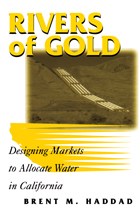 Rivers of Gold: Designing Markets To Allocate Water In California
Brent M. Haddad
Island Press, 2000 The movement to implement market-based approaches to allocating water is gaining ground across California and in other western states. Proponents argue that markets offer an efficient and cost-effective means of promoting conservation -- those who need water would pay for it on the open market, while others would conserve rather than pay increased prices. Rivers of Gold takes a new look at California's water-reallocation challenge. The author explains the concept of water markets and the economic theory undergirding them. He shows how some water markets have worked -- and others have failed -- and gives the reader the analytic tools necessary to understand why. The book: - provides an overview of water-supply issues in California
- compares the situation in California with that of other western states
- considers the different property rights regimes governing current use and their fit with water market institutions
- explains how water markets would work and their benefits and drawbacks as an allocation mechanism
- presents a series of case studies of water markets currently in effect in California
- offers a list of principles for water market design
Rivers of Gold offers a balanced understanding of both the role that markets can play in reallocating water and the limitations of the market mechanism. In the end, the author offers a comprehensive assessment of the institutional design features that any water market should incorporate if it is to reallocate water effectively, in California or in any other region where water is scarce. Rivers of Gold is the first book to provide a detailed examination of water markets and the institutional design issues associated with them. It is the only book available that presents in-depth case studies of actual water-market transactions, and will be essential reading for water resource professionals and resource economists, as well as for students and scholars of environmental policy, environmental economics, and resource economics.
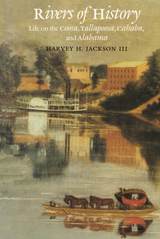 Rivers of History: Life on the Coosa, Tallapoosa, Cahaba, and Alabama
Harvey H. Jackson, III
University of Alabama Press, 1995 The story of the people of the Alabama River system
Four streams make up the Alabama River system, the Coosa, Tallapoosa, Cahaba, and Alabama. Together they flow for more than 900 miles, through some of the most historic regions of the state. This book looks at the way these streams have shaped the lives of the people who lived along them, and how, in turn, people have used the rivers to their own ends.
This is the story of the people of the Alabama River system: the Indians, traders, steamboatmen, passengers, slaves, loggers, "deadheaders", divers, river rats, fishermen, industrial giants, factory workers, business boosters, environmentalists, and those who simply love the rivers because of something that seems to have been a part of them from the first time they saw the water flowing. This is a book for and about these people. They, and the rivers, are the main characters in the story.
rivers of the driftless region
Mark Conway
Four Way Books, 2019 Conway’s spare, imagistic poems concern the implications of eternity: which offers no past or future but rather an ever-present now.
Rivers on Fire and Corporate Liars: The Monitoring and Sanctioning of U.S. Water Pollution Crimes
Joshua Ozymy
Rutgers University Press, 2026 For over four decades, the U.S federal government has undertaken efforts to police and prosecute environmental crimes to protect public health and the natural environment. Yet, we still know very little about how U.S. federal agencies have monitored and sanctioned water pollution violations and if these actions actually deter crime. In Rivers on Fire and Corporate Liars, Joshua Ozymy and Melissa Jarrell Ozymy examined over 1,000 federal water pollution investigations and prosecutions undertaken by the U.S. EPA and Department of Justice from 1983-2023 to answer these questions. Their analysis provides the most comprehensive empirical examination to date of how the criminal enforcement of water pollution has evolved over time, patterns in prosecutions, and how criminals were sanctioned.
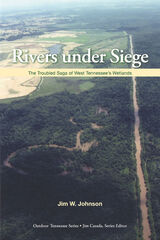 Rivers Under Siege: The Troubled Saga of West Tennessee Wetlands
Jim W. Johnson
University of Tennessee Press, 2007 Rivers under Siege is a wrenching firsthand account of how human interventions, often well intentioned, have wreaked havoc on West Tennessee's fragile wetlands. For more than a century, farmers and developers tried to tame the rivers as they became clogged with sand and debris, thereby increasing flooding. Building levees and changing the course of the rivers from meandering streams to straight-line channels, developers only made matters worse. Yet the response to failure was always to try to subdue nature, to dig even bigger channels and construct even more levees-an effort that reached its sorry culmination in the U.S. Army Corps of Engineers' massive West Tennessee Tributaries Project during the 1960s. As a result, the rivers' natural hydrology descended into chaos, devastating the plant and animal ecology of the region's wetlands. Crops and trees died from summer flooding, as much of the land turned into useless, stagnant swamps.
The author was one of a small group of state waterfowl managers who saw it all happen, most sadly within the Obion-Forked Deer river system and at Reelfoot Lake. After much trial and error, Johnson and his colleagues in the Tennessee Wildlife Resources Agency began by the 1980s to abandon their old methods, resorting to management procedures more in line with the natural contours of the floodplains and the natural behavior of rivers. Preaching their new stewardship philosophy to anyone who might listen-their supervisors, duck hunters, conservationists, politicians, federal agencies-they were often ignored. The campaign dragged on for twenty years before an innovative and rational plan came from the Governor's Office and gained wide support. But then, too, that plan fell prey to politics, legal wrangling, self-interest, hardheadedness, and tradition. Yet, despite such heartbreaking setbacks, the author points to hopeful signs that West Tennessee's historic wetlands might yet be recovered for the benefit of all who use them and recognize their vital importance.
Jim W. Johnson, now retired, was for many years a lands management biologist with the Tennessee Wildlife Resources Agency. He was responsible for the overall supervision and coordination of thirteen wildlife management areas and refuges, primarily for waterfowl, in northwest Tennessee.
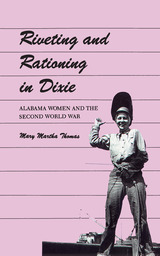 Riveting and Rationing in Dixie: Alabama Women and the Second World War
Mary Martha Thomas
University of Alabama Press, 1987 The first book to examine the impact of World War II on the roles of women in an individual state
Covers the experience of both black and white Alabama women as defense workers, volunteers, and homemakers. The most important change for women during the war years was their employment in jobs normally held by men, which posed an implicit challenge to traditional notions about femininity and female limitations.
Thomas describes the women employed in the defense industries—how they were recruited and trained, where they worked and under what conditions, and what changes employers made in the workplace to accommodate women, She also discusses the experience of the women who served as volunteers in the Ground Observer Corps, the Citizens’ Service Corps, the Red Cross, and other volunteer agencies. In addition, the author considers how homemakers coped during a time of rationing, housing shortages, lack of schools, and inadequate medical facilities.
Rivington Street: A NOVEL
Meredith Tax
University of Illinois Press, 1982 This sprawling historical novel follows the fortunes of four enterprising, courageous Jewish women on New York's Lower East Side. Hannah Levy masterminds her family's escape, despite her radical husband's objections, from czarist Russia after the Kishinev pogroms; elder daughter Sarah becomes a union organizer and a socialist while the younger Ruby rises to the top of the fashion design world; their friend Rachel abandons her ultra-Orthodox background to go to work for the Jewish Daily Forward. Through their lives, loves, and convictions, Meredith Tax draws the reader irresistibly into the explosive events that shaped women's possibilities in the early twentieth century.
An absorbing, epic novel, Rivington Street is also suitable for use as a classroom text.
 RKFDV: German Resettlement and Population Policy, 1939-1945: A History of the Reich Commission for the Strengthening of Germandom
Robert L. Koehl
Harvard University Press One of the most harrowing phenomena in recent political history was the attempt by the Nazi government to liquidate, shift, and redistribute the populations of the unfortunate territories that came under its domination during the second World War. By tracing the rise and fall of the agency created to effect this gigantic geopolitical movement, the RKFDV (Reichskommisariat fur die Festigung deutschen Volkstums or Reich Commission for the Strengthening of Germandom), Robert Koehl reveals the complexity, brutality, and inconsistency of National Socialism, the neofeudalism of Nazi power politics, and the nature of the men who manipulated the monstrous scheme.
Using captured documents which have never been published before, some signed by Hitler's and Himmler's own hands, Koehl relies for the main source of his study on the actual testimony, evidence, and statements made during the United States Military Tribunal Trials Numbers Eight and Eleven at Nuremberg. His conscientious marshaling of concrete facts serves better than the most dramatic intervention to drive home the implications of this recent tragedy involving millions of Germans, Poles, Frenchmen, Russians, Yugoslavs.
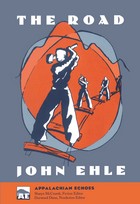 The Road
John Ehle
University of Tennessee Press, 1998 "In The Road John Ehle's skill as a storyteller brings an early episode of road building in the North Carolina mountains to rich and vivid life. Hardship and humor, suffering and dreams are the balance for survival in a landscape that makes harsh demands on its intruders. Ehle lets us experience this place, people, and past in a fully realized novel."—Wilma Dykeman
"The Road is a strong novel by one of our most distinguished authors. Muscular, vivid, and pungent, it is broad in historical scope and profound in its human sympathies. We welcome its return with warm pleasure."—Fred Chappell
Originally published in 1967, The Road is epic historical fiction at its best. At the novel's center is Weatherby Wright, a railroad builder who launches an ambitious plan to link the highlands of western North Carolina with the East. As a native of the region, Wright knows what his railway will mean to the impoverished settlers. But to accomplish his grand undertaking he must conquer Sow Mountain, "a massive monolith of earth, rock, vegetation and water, an elaborate series of ridges which built on one another to the top."
Wright's struggle to construct the railroad—which requires tall trestles crossing deep ravines and seven tunnels blasted through shale and granite—proves to be much more than an engineering challenge. There is opposition from a child evangelist, who preaches that the railroad is the work of the devil, and there is a serious lack of funds, which forces Wright to use convict labor. How Wright confronts these challenges and how the mountain people respond to the changes the railroad brings to their lives make for powerfully compelling reading.
The Author: A native of Asheville, North Carolina, John Ehle has written seventeen novels and works of nonfiction. His books include The Land Breakers, The Journey of August King, The Winter People, and Trail of Tears: The Rise and Fall of the Cherokee Nation. Among the honors he has received are the Lillian Smith Prize and the Thomas Wolfe Memorial Award.
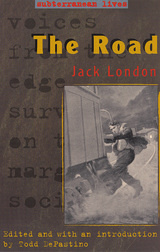 The Road
DePastino, Todd
Rutgers University Press, 2006 In 1894, an eighteen-year-old Jack London quit his job shoveling coal, hopped a freight train, and left California on the first leg of a ten thousand-mile odyssey. His adventure was an exaggerated version of the unemployed migrations made by millions of boys, men, and a few women during the original "great depression of the 1890s. By taking to the road, young wayfarers like London forged a vast hobo subculture that was both a product of the new urban industrial order and a challenge to it. As London's experience suggests, this hobo world was born of equal parts desperation and fascination. "I went on 'The Road,'" he writes, "because I couldn't keep away from it . . . Because I was so made that I couldn't work all my life on 'one same shift'; because-well, just because it was easier to than not to." The best stories that London told about his hoboing days can be found in The Road, a collection of nine essays with accompanying illustrations, most of which originally appeared in Cosmopolitan magazine between 1907 and 1908. His virile persona spoke to white middle-class readers who vicariously escaped their desk-bound lives and followed London down the hobo trail. The zest and humor of his tales, as Todd DePastino explains in his lucid introduction, often obscure their depth and complexity. The Road is as much a commentary on London's disillusionment with wealth, celebrity, and the literary marketplace as it is a picaresque memoir of his youth.
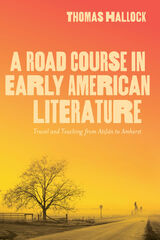 A Road Course in Early American Literature: Travel and Teaching from Atzlán to Amherst
Thomas Hallock
University of Alabama Press, 2021 Essays that fuse literary scholarship and personal travelogue to explore American identity A Road Course in Early American Literature: Travel and Teaching from Atzlán to Amherst explores a two-part question: what does travel teach us about literature, and how can reading guide us to a deeper understanding of place and identity? Thomas Hallock charts a teacher’s journey to answering these questions, framing personal experiences around the continued need for a survey course covering early American literature up to the mid-nineteenth century. Hallock approaches literary study from the overlapping perspectives of pedagogue, scholar, unrepentant tourist, husband, father, friend, and son. Building on Ralph Waldo Emerson’s premise that there is “creative reading as well as creative writing,” Hallock turns to the vibrant and accessible tradition of American travel writing, employing the form of biblio-memoir to bridge the impasse between public and academic discourse and reintroduce the dynamic field of early American literature to wider audiences. Hallock’s own road course begins and ends at the Lowcountry of Georgia and South Carolina, following a circular structure of reflection. He weaves his journey through a wide swath of American literatures and authors: from Native American and African American oral traditions, to Wheatley and Equiano, through Emerson, Poe, and Dickinson, among others. A series of longer, place-oriented narratives explore familiar and lesser-known literary works from the sixteenth-century invasion of Florida through the Mexican War of 1846–1848 and the American Civil War. Shorter chapters bridge the book’s central themes—the mapping of cognitive and physical space, our personal stake in reading, the tensions that follow earlier acts of erasure, and the impossibility of ever fully shutting out the past. Exploring complex cultural histories and contemporary landscapes filled with ghosts and new voices, this volume draws inspiration from a tradition of travel, place-oriented, and literature-based works ranging from William Carlos Williams’s In the American Grain and Jack Kerouac’s On the Road to Alice Walker’s In Search of Our Mother’s Gardens, Wendy Lesser’s Why I Read: The Serious Pleasure of Books, and Rebecca Mead’s My Life in Middlemarch. An accompanying bibliographic essay is periodically updated and available at Hallock’s website: www.roadcourse.us.
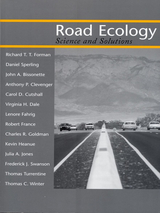 Road Ecology: Science and Solutions
Richard T.T. Forman, Kevin Heanue, Julia Jones, Frederick Swanson, Thomas Turrentine, Thomas C. Winter, Daniel Sperling, John Bissonette, Anthony P. Clevenger, Carol D. Cutshall, Virginia H. Dale, Lenore Fahrig, Robert France, and Charles R. Goldman
Island Press, 2002 A central goal of transportation is the delivery of safe and efficient services with minimal environmental impact. In practice, though, human mobility has flourished while nature has suffered. Awareness of the environmental impacts of roads is increasing, yet information remains scarce for those interested in studying, understanding, or minimizing the ecological effects of roads and vehicles. Road Ecology addresses that shortcoming by elevating previously localized and fragmented knowledge into a broad and inclusive framework for understanding and developing solutions. The book brings together fourteen leading ecologists and transportation experts to articulate state-of-the-science road ecology principles, and presents specific examples that demonstrate the application of those principles. Diverse theories, concepts, and models in the new field of road ecology are integrated to establish a coherent framework for transportation policy, planning, and projects. Topics examined include: - foundations of road ecology
- roads, vehicles, and transportation planning
- vegetation and roadsides
- wildlife populations and mitigation
- water, sediment, and chemical flows
- aquatic ecosystems
- wind, noise, and atmospheric effects
- road networks and landscape fragmentation
Road Ecology links ecological theories and concepts with transportation planning, engineering, and travel behavior. With more than 100 illustrations and examples from around the world, it is an indispensable and pioneering work for anyone involved with transportation, including practitioners and planners in state and province transportation departments, federal agencies, and nongovernmental organizations. The book also opens up an important new research frontier for ecologists.
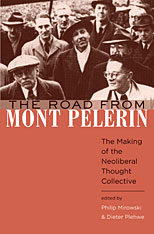 The Road from Mont Pèlerin: The Making of the Neoliberal Thought Collective
Philip Mirowski
Harvard University Press, 2009 What exactly is neoliberalism, and where did it come from? This volume attempts to answer these questions by exploring neoliberalism’s origins and growth as a political and economic movement.
Although modern neoliberalism was born at the “Colloque Walter Lippmann” in 1938, it only came into its own with the founding of the Mont Pèlerin Society, a partisan “thought collective,” in Vevey, Switzerland, in 1947. Its original membership was made up of transnational economists and intellectuals, including Friedrich Hayek, Milton Friedman, George Stigler, Karl Popper, Michael Polanyi, and Luigi Einaudi. From this small beginning, their ideas spread throughout the world, fostering, among other things, the political platforms of Margaret Thatcher and Ronald Reagan and the Washington Consensus.
The Road from Mont Pèlerin presents the key debates and conflicts that occurred among neoliberal scholars and their political and corporate allies regarding trade unions, development economics, antitrust policies, and the influence of philanthropy. The book captures the depth and complexity of the neoliberal “thought collective” while examining the numerous ways that neoliberal discourse has come to shape the global economy.
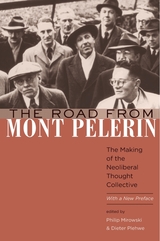 The Road from Mont Pèlerin: The Making of the Neoliberal Thought Collective, With a New Preface
Philip Mirowski
Harvard University Press, 2015 Although modern neoliberalism was born at the “Colloque Walter Lippmann” in 1938, it only came into its own with the founding of the Mont Pèlerin Society, a partisan “thought collective,” in Vevey, Switzerland, in 1947. Its original membership was made up of transnational economists and intellectuals, including Friedrich Hayek, Milton Friedman, George Stigler, Karl Popper, Michael Polanyi, and Luigi Einaudi. From this small beginning, their ideas spread throughout the world, fostering, among other things, the political platforms of Margaret Thatcher and Ronald Reagan and the Washington Consensus.
The Road from Mont Pèlerin presents the key debates and conflicts that occurred among neoliberal scholars and their political and corporate allies regarding trade unions, development economics, antitrust policies, and the influence of philanthropy. The book captures the depth and complexity of the neoliberal “thought collective” while examining the numerous ways that neoliberal discourse has come to shape the global economy.
“The Road from Mont Pèlerin is indispensable for anyone wishing to gain an understanding of neoliberalism, whether as an end in itself or as a means for constructing alternative, non-neoliberal futures.”
—Daniel Kinderman, Critical Policy Studies
“If you work on post-war history of economics, there is almost no reason not to read this book.”
—Ross B. Emmett, Journal of the History of Economic Thought
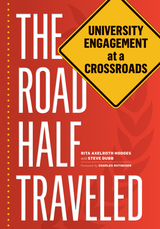 The Road Half Traveled: University Engagement at a Crossroads
Rita Axelroth Hodges
Michigan State University Press, 2012 A growing number of universities are dedicating resources to support their surrounding communities, but much potential for advancement remains. A university’s mission as an “anchor institution,” as defined by the authors, is to consciously and strategically apply the institution’s long-term, place-based economic power, in combination with its human and intellectual resources, to better the welfare of the community in which it resides. Drawing on ten diverse universities as case studies, this eye-opening book explores practices and strategies that can be employed to improve conditions in low-income communities and emphasizes the critical roles of university leaders, philanthropy, and policy in this process. To date the most comprehensive account of the range of roles played by universities as anchors in their communities, The Road Half Traveled provides a forward-thinking perspective on new horizons in university and community partnership.
 The Road of Excess: A History of Writers on Drugs
Marcus Boon
Harvard University Press, 2005 From the antiquity of Homer to yesterday's Naked Lunch, writers have found inspiration, and readers have lost themselves, in a world of the imagination tinged and oftentimes transformed by drugs. The age-old association of literature and drugs receives its first comprehensive treatment in this far-reaching work. Drawing on history, science, biography, literary analysis, and ethnography, Marcus Boon shows that the concept of drugs is fundamentally interdisciplinary, and reveals how different sets of connections between disciplines configure each drug's unique history.
In chapters on opiates, anesthetics, cannabis, stimulants, and psychedelics, Boon traces the history of the relationship between writers and specific drugs, and between these drugs and literary and philosophical traditions. With reference to the usual suspects from De Quincey to Freud to Irvine Welsh and with revelations about others such as Milton, Voltaire, Thoreau, and Sartre, The Road of Excess provides a novel and persuasive characterization of the "effects" of each class of drug--linking narcotic addiction to Gnostic spirituality, stimulant use to writing machines, anesthesia to transcendental philosophy, and psychedelics to the problem of the imaginary itself. Creating a vast network of texts, personalities, and chemicals, the book reveals the ways in which minute shifts among these elements have resulted in "drugs" and "literature" as we conceive of them today.
 Road of the Heart's Desire: An Essay on the Cycles of Story and Song
John S. Dunne
University of Notre Dame Press, 2002 "John Dunne has been pursuing human wholeness through the course of his many books. His insights into our completeness come out of his unique journey leading to the healing of his own separations: from the paths not taken earlier in life that return to join the one consciously chosen; from his relationships with others, leading to his meeting other people where we are most alone; and, ultimately, from his discovery of God's presence in his own experience of longing." --Carol Ochs, Hebrew Union College
"The old master has been at work again! John Dunne provides a rare combination of the poignantly personal with the utterly universal, a work of intense thought and reflection that erupts into song, a book that like a good friend pauses and responds to your questions about the life of the spirit as it pauses and responds to John Dunne's own doubts and difficulties and desires." --John T. Noonan, author of The Lustre of Our Country
"Dunne is one of our finest writers of spiritual literature. His intellectual breadth alone marks his work as significant. His poetic style prompts slow and careful reading. . . . John Dunne offers nourishment to which we can return often." --Denise Carmody, Santa Clara University
The Road of the Heart's Desire focuses on the emergence of the human race and the individual from an undifferentiated oneness and the return of the individual to the human community and to reflective and differentiated oneness with God. Dunne expresses this reunion through music and language. "Thinking of the human essence, we can discern in story and song a double emergence and separation, that of the human race and that of the individual," he writes.
Dunne traces four cycles of story and song: the unity of all things, an emergence and separation of the human race, the emergence of the individual, and finally a reunion of humanity with "all in all." The "road of the heart's desire" is the path each person takes toward this reunion.
JOHN S. DUNNE is the John A. O'Brien Professor of Theology at the University of Notre Dame. He is the author of more than fifteen books including Reading the Gospel and The Mystic Road of Love, both published by the University of Notre Dame Press.
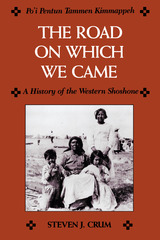 Road On Which We Came: A History of the Western Shoshone
Steven J. Crum
University of Utah Press, 1994 A hundred forty years ago, the Western Shoshone occupied a vast area of present-day Nevada—from Idaho in the north to Death Valley in the south. Today, the Newe hold a fraction of their former territory, still practicing native lifeways while accepting many aspect of American culture. Their story deserves telling. The Road on Which We Came is the first comprehensive history of the Great Basin Shoshone. Written by historian Steven Crum, an enrolled tribal member, this book presents the Shoshone as an active force in their own history, effectively adapting to harsh physical environment, defending their territory in the nineteenth century, and working to modify or reject assimilationists policy in the present. Noting that Native American history did not end with Wounded Knee, Crum gives substantial attention to twentieth-century events up to 1990 and emphasizes that in every period tribal actions can be characterized by a plurality of voices and opinions.
|
|
